food miles
description: distance food is transported from production to consumption
66 results
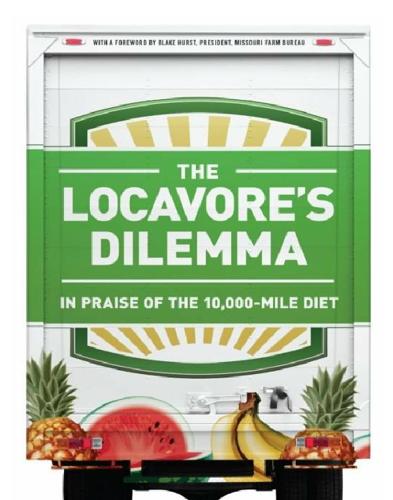
The Locavore's Dilemma
by
Pierre Desrochers
and
Hiroko Shimizu
Published 29 May 2012
The second was ton kilometers—the distance multiplied by load, which gives a better sense of the amount of energy required for each item transported.32 The researchers observed that 82% of the estimated 30 billion food miles associated with U.K.-consumed food are generated within the country, with car transport from shop to home accounting for 48% and tractor-trailers (what they call HGVs—heavy goods vehicles) representing 31% of food miles. Remarkably, air transport amounted to less than 1% of total food miles. The large share accounted for by cars was the result of individual families making numerous trips to the supermarket. By contrast, delivering these goods to stores using much more efficient means required much less energy per item.
…
Yes, We have no Bananas. A Critique of the ‘Food Miles’ Perspective .Mercatus Policy Series Primer no. 8, Mercatus Center (George Mason University) http://mercatus.org/publication/yes-we-have-no-bananas-critique-food-miles-perspective?id=24612. 29 Caroline Saunders and Peter Hayes. 2007. Air Freight Transport of Fresh Fruit and Vegetables- Report for the International Trade Centre (ITC), Geneva, Switzerland. Research Report No. 299. New Zealand: AERU, Lincoln University) http://researcharchive.lincoln.ac.nz/dspace/bitstream/10182/248/1/aeru_rr_299.pdf. 30 DEFRA. 2005. Validity of Food Miles as an Indicator of Sustainable Development , ED50254 Issue 7 (July) http://www.defra.gov.uk. 31 Christopher L.
…
Validity of Food Miles as an Indicator of Sustainable Development , ED50254 Issue 7 (July) http://www.defra.gov.uk. 31 Christopher L. Weber and H. Scott Matthews. 2008. “Food Miles and the Relative Climate Impacts of Food Choices in the United States,” Environmental Science & Technology 42 (10): 3508-3513. 32 DEFRA. 2005 Validity of Food Miles as an Indicator of Sustainable Development , ED50254 Issue 7(July). http://www.defra.gov.uk. A ton is a metric measurement of 1000 kilograms (kg), where 1 kg. = 2.2 lbs. 33 Caroline Saunders, Andrew Barber, and Greg Taylor. 2006. Food miles—Comparative Energy/Emissions Performance of New Zealand’s Agriculture Industry . Research Report No.285, New Zealand: AERU, Lincoln University http://www.lincoln.ac.nz/documents/2328_rr285_s13389.pdf Apples and similar fruits are frequently kept in storage with higher than normal CO2 concentrations.

Aerotropolis
by
John D. Kasarda
and
Greg Lindsay
Published 2 Jan 2009
Another, referenced by Leahy in his speech, is the concept of “food miles”—the distance a product travels from the farm or ocean to your home. Food miles have become a shorthand for measuring food’s carbon footprint. It’s logical to assume that food—or flowers—traveling thousands of miles might have a larger footprint than the same items grown or made locally. But we’re often highly illogical about both. We are what we eat, and in our identities as consumers we are what we consume—and how visibly we consume it. As a result, food miles and carbon footprints have become wrapped up in a much larger critique of global food chains.
…
Britain discovered just how much of its produce is grown and flown from overseas during last April’s volcanic ash crisis, when grounded flights led to shortages. Asparagus, grapes, green onions, and lettuce all went missing at Heathrow. Airlifted food miles have tripled in Britain since 1992, growing an average of 9 percent annually while total imports barely budged. This, in turn, has sparked a heated debate on the future of food: Will it be locally grown, or global? And which is the right thing to do? Flowers and Food Miles In January 2007, Sir Terry Leahy, the chief executive of Tesco, Britain’s largest retailer, delivered a speech about climate change. The grocery chain faced mounting pressure from customers to reduce its carbon footprint—and, by extension, their own.
…
The Antipodes’ well-traveled milk has half the footprint of a British dairy’s, thanks to a power grid fed mostly by renewable energy. Food miles cannot begin to compare in toxicity with flatulent cattle. Anyone who’s read The Omnivore’s Dilemma can recite chapter and verse on the perils of force-feeding corn to livestock in feedlots. Cows produce methane, a greenhouse gas thirty times more potent than carbon, as a by-product of digestion, and they must keep at it to feed a middle class hungry for red meat. A breakdown of the Big Mac revealed that nearly a third of its footprint stems from feed production, another third from storage, and much of the rest from slaughtering, frying, and baking. Food miles contribute 3 percent.
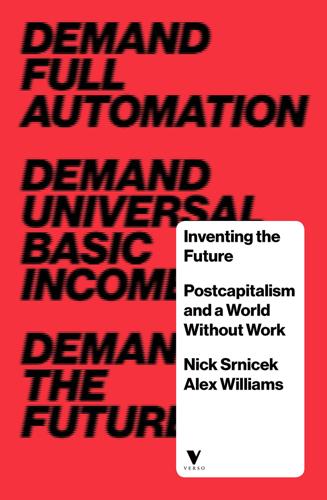
Inventing the Future: Postcapitalism and a World Without Work
by
Nick Srnicek
and
Alex Williams
Published 1 Oct 2015
Similarly, complex problems are condensed into poorly formulated shorthand. For instance, the idea of ‘food miles’ – identifying the distances that food products have travelled, so as to reduce carbon outputs – appears a reasonable one. The problem is that it is all too often taken to be sufficient on its own as a guide to ethical action. As a 2005 report by the UK’s Department of Agriculture and Food found, while the environmental impacts of transporting food were indeed considerable, a single indicator based on total food miles was inadequate as a measure of sustainability.79 Most notably, the food-miles metric emphasises an aspect of food production that contributes a relatively small amount to overall carbon outputs.
…
When it is simply assumed that ‘small is beautiful’, we can all too easily ignore the fact that the energy costs associated with producing food locally may well exceed the total costs of transporting it from a more suitable climate.80 Even for the purpose of assessing the contribution of food transportation, food miles are a poor metric. Air freight, for example, makes up a relatively small portion of total food miles, but it makes up a disproportionately large slice of total food-related CO2 emissions.81 The energy consumption involved in putting food on our plates is important, but it cannot be captured in anything as simple as food miles, or in the idea that ‘local is best’. Indeed, highly inefficient local food production techniques may be more costly than efficiently grown globally sourced foodstuffs.
…
Contexts 13: 3 (2014). 77.Miriam Glucksmann and Jane Nolan, ‘New Technologies and the Transformations of Women’s Labour at Home and Work’, Equal Opportunities International 26: 2 (20 February 2007). 78.Will Boisvert, ‘An Environmentalist on the Lie of Locavorism’, New York Observer, 16 April 2013. 79.Alison Smith, Paul Watkiss, Geoff Tweddle, Alan McKinnon, Mike Browne, Alistair Hunt, Colin Treleven, Chris Nash and Sam Cross, The Validity of Food Miles as an Indicator of Sustainable Development: Final Report (London: Department for Environment, Food and Rural Affairs, 2005). 80.Caroline Saunders, Andrew Barber and Greg Taylor, Food Miles: Comparative Energy/Emissions Performance of New Zealand’s Agriculture Industry, Agribusiness and Economics Research Unit, Lincoln University, Canterbury, NZ, July 2006, pdf available at lincoln.ac.nz. 81.In the UK in 2005, air freight made up just 1 per cent of food tonne miles travelled, but 11 per cent of food-related emissions. Smith et al., Validity of Food Miles, p. 3. 82.Doug Henwood, ‘Moving Money (Revisited)’, LBO News, 2010, at lbo-news.com. 83.Stephen Gandel, ‘By Every Measure, the Big Banks Are Bigger’, Fortune, 13 September 2013, at fortune.com. 84.Victoria McGrane and Tan Gillian, ‘Lenders Are Warned on Risk’, Wall Street Journal, 25 June 2014. 85.OTC Derivatives Statistics at End-June 2014, Basel: Bank for International Settlements, 2014, p. 2, at bis.org. 86.David Boyle, A Local Banking System: The Urgent Need to Reinvigorate UK High Street Banking (London: New Economics Foundation, 2011), p. 8. 87.Ibid., pp. 8–9. 88.Giles Tremlett, ‘Spain’s Savings Banks’ Culture of Greed, Cronyism, and Political Meddling’, Guardian, 8 June 2012. 89.Boyle, Local Banking System, p. 10. 90.Andrew Bibby, ‘Co-op Bank Crisis: What Next for the Co-operative Sector?’

Future Files: A Brief History of the Next 50 Years
by
Richard Watson
Published 1 Jan 2008
This means locally grown food eaten in season. It also means animal rights and all kinds of information about where food is from and how it was produced. For some people provenance will mean buying directly from the producer, while for others technology will allow them to interrogate individual products or the companies that make them. The food-miles debate will move to center stage, as will fair-trade products and practices. For people with the luxuries of time and space, growing your own fruit and vegetables will make a comeback as the ultimate form of traceability. Health versus indulgence We eat with our eyes. We also eat with our heads and our hearts, so while our logical side tells us to Food and Drink 179 eat healthy foods, our emotional side tells us to eat things that we shouldn’t — foods that are naughty but nice.
…
In other words, the type of information provided to the public on a bottle of wine (who made it, when, where and how) will become the norm on all other foodstuffs. This will mean a return to the consumption of seasonal products because they will be local, which means cheaper and more environmentally sustainable. If a product involves too many food-miles we won’t buy it and we may boycott the company that makes it or transports it. You can see the early signs of this already. Back in the 1960s and 1970s the slogan of US student activists was “No War”. These days, although they may be protesting about the wars raging in Afghanistan and Iraq, they’re also proclaiming “Eat Local” as they boycott national and global brands in favor of locally grown produce that supports the livelihoods of local farmers and that (they think) stops global warming and pollution.
…
Back in 2001 the University of Portland, which dishes up 22,000 meals a week, spent just 2% of its food budget on purchases from local suppliers. Now the figure is closer to 40% and 200 other US universities have jumped onto the local-supplier bandwagon (over half of them since 2001). Students are busy pushing organic, seasonal, slow food and food-miles agendas to catering giants such as Sodexho and Armamark Corporation. However, while these students are full of idealism for eco-eating, they (and we) are finding out the hard way the practicalities of global economics. Sourcing local ingredients from a multitude of small suppliers is time-consuming and expensive compared to hiring a single company with a global supply chain.

The Allotment Chef: Home-Grown Recipes and Seasonal Stories
by
Paul Merrett
Published 3 Sep 2014
My obsession with winning a Michelin star had all but cancelled out any thought of food miles, animal welfare, seasonal cookery or the real joy of picking something and then very simply cooking it. I realise that I should worry far more than I ever have done about where my family’s food is coming from and how it is grown. Photograph by Paul Merrett While acknowledging all this as the right way forwards for our family, I would not dare to suggest that I am at the forefront of change. I have sat at many a dinner party listening to people from all walks of life ‘bang on’ about food miles and globalisation, and my standard response has been to consider them the ‘brown rice and sandals’ types, and to turn the conversation to what I considered more ‘foody’ matters, such as current restaurant trends and the latest cookbooks.
…
As MJ points out we would all be dead of scurvy had we actually followed my plan. Personally, I have actually been trying to use local shops for fruit and vegetables but I am not convinced that they are any more in tune with the seasons than the supermarkets are. I recently asked my local shopkeeper if his vegetables were in any way local, and explained my desire to reduce food miles. He said that they were; they came from Covent Garden wholesale market each morning – which frankly misses the point, but I couldn’t be bothered to argue with him. The thought of producing our own fruit is very exciting. It reminds me of long hot childhood summers spent picking raspberries, blackcurrants, redcurrants and gooseberries with my sister in our grandfather’s garden.
…
He could say, but doesn’t need to, that, in his view, these achievements will happen only under a Tory government! I personally feel it is less a talk on food and more a party political broadcast, and I can’t help thinking that it signifies all that is wrong with food in this country: it’s all so middle class. All this talk of organic produce, food miles, regional produce; in this country it still remains too costly for too many. Take our allotment for example – we have spent a lot of money on tools, a shed, books, seeds, plants and assorted bits and bobs and, in truth, were we to tally the money spent against the money saved by not buying vegetables, we would, I expect, be in for a shock.

The Rational Optimist: How Prosperity Evolves
by
Matt Ridley
Published 17 May 2010
Self-sufficiency is poverty It is fashionable these days to decry ‘food miles’. The longer food has spent travelling to your plate, the more oil has been burnt and the more peace has been shattered along the way. But why single out food? Should we not protest against T-shirt miles, too, and laptop miles? After all, fruit and vegetables account for more than 20 per cent of all exports from poor countries, whereas most laptops come from rich countries, so singling out food imports for special discrimination means singling out poor countries for sanctions. Two economists recently concluded, after studying the issue, that the entire concept of food miles is ‘a profoundly flawed sustainability indicator’.
…
The distinction between needs and wants, as expressed by Abraham Maslow’s hierarchy of needs, is a mischievous one: people evolved to be ambitious, to start exaggerating their social status or sexual worth, long before they have satisfied their basic needs. See Miller, G. 2009. Spent. Heinemann. p. 41 ‘the entire concept of food miles is “a profoundly flawed sustainability indicator”’. Bailey, R. 2008. The food miles mistake. Reason, 4 November 2008. http://www.reason.com/news/show/129855.html. p. 41 ‘Ten times as much carbon’. See https://statistics.defra.gov.uk/esg/reports/foodmiles/final.pdf. p. 42 ‘six times the carbon footprint of a Kenyan rose’. Specter, M. 2008.
…
The availability of almost everything a person could want or need has been going rapidly upwards for 200 years and erratically upwards for 10,000 years before that: years of lifespan, mouthfuls of clean water, lungfuls of clean air, hours of privacy, means of travelling faster than you can run, ways of communicating farther than you can shout. Even allowing for the hundreds of millions who still live in abject poverty, disease and want, this generation of human beings has access to more calories, watts, lumen-hours, square feet, gigabytes, megahertz, light-years, nanometres, bushels per acre, miles per gallon, food miles, air miles, and of course dollars than any that went before. They have more Velcro, vaccines, vitamins, shoes, singers, soap operas, mango slicers, sexual partners, tennis rackets, guided missiles and anything else they could even imagine needing. By one estimate, the number of different products that you can buy in New York or London tops ten billion.

Meat: A Benign Extravagance
by
Simon Fairlie
Published 14 Jun 2010
He initiated a number of agrarian settlement schemes (some more successful than others), worked in India with Jayaprakash Narayan on the financing of the gramdan land resettlement project, founded a ‘School for Living’ which is still going, and helped introduce the now flourishing concept of Community Land Trusts.62 However his economic analysis was ignored and the academics and campaigners who initiated the concept of food miles in the early 1990s did not appear to remember him.63 Now, when even the NFU is talking about food miles and has belatedly launched a campaign in support of farmers’ markets, most commentators have not yet caught up with Borsodi, nor will they until they recognize (a) that it is not just a matter of food miles but ‘resource miles’; and (b) that we will just be tinkering around with this problem unless we find a way of siting people close to the resources that they use.64 The case for ruralization has been advanced recently by Richard Heinberg, as a corollary of his view that oil prices will rise dramatically when global oil reserves reach their predicted peak in the next few years.65 Heinberg anticipates that in an economy running on limited supplies of oil (and without any substitute form of energy, such as nuclear) the US will need to find another 50 million farmers to grow its food.
…
Even trees that grow semi-naturally in England, such as chestnuts and walnuts, have yet to produce commercial yields that can compete with imports from China or Italy. This could change if global warming raises the mean temperature in the UK by several degrees. But for the time being a shift towards a more vegan diet in a country such as the UK is likely to lead either to a more boring diet, or else to greater food miles. More food miles means greater energy expenditure; but we should be wary of exaggerating this factor of the energy equation. In 2008, an influential study by Christopher Weber and H Scott Matthews concluded that transport accounted for 11 per cent of US food greenhouse gas emissions, while most of the rest was due to production processes, particularly of meat and dairy.45 Surprisingly this is rather lower than the figure provided by the British Cabinet Office who state that 15.3 per cent of UK food emissions are caused by transport.46 But Weber and Matthews’ figures are better supported, and they use them to draw a challenging conclusion, namely that consumers concerned about the carbon impact of their food would do better to reduce meat and dairy consumption than to turn to a local diet: For the average American household, ‘buying local’ could achieve, at maximum, around a 4-5 per cent reduction in Greenhouse Gas (GHG) emissions,due to large sources of both CO2 and non-CO2 emissions in the production of food.
…
As for countries like New Zealand that have a surplus of land and food, perhaps they should open their doors to immigrants and parcel out some of their farms to landless peasants. If we are going to globalize everything else, we should globalize land reform as well. At the end of their paper, Weber and Matthews point out that GHG emissions are ‘only one dimension of the environmental impacts of food production’. Food miles may not be over-extravagant in their energy use, but they are thickly implicated in a centralized distribution system which multiplies our energy expenditure at every opportunity and whose impacts include excessive packaging and refrigeration, waste, traffic congestion, road-building, noise, accidents, loss of local distinctiveness, exploitation and displacement of peasants, excessive immigration, urban slums, deforestation and habitat destruction, removal of biomass from third world countries, the undermining of local communities in the UK, the collapse of UK farming and the blood which is spilt over oil fields.
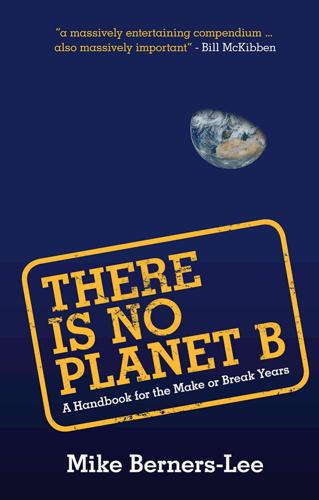
There Is No Planet B: A Handbook for the Make or Break Years
by
Mike Berners-Lee
Published 27 Feb 2019
(And in the case of flowers, hot housing them out of season is no better than putting them on a plane.) There is no place for air freighted food in the twenty-first century. To summarise, come the sustainable world, there simply won’t be any air freighted food. In the meantime, you can help by avoiding it where you can and having done that, you can largely relax about food miles and perhaps just use that argument as one more reason to enjoy a local pint in preference to one from thousands of miles away. To tell whether something has been on an aeroplane, check the country of origin and ask yourself whether it has the 32 1 FOOD longevity to survive the journey by ship, train or lorry.
…
The Carbon Footprint of Everything. INDEX Locators in bold refer to tables; those in italic to figures acidification of the oceans 54–55, 232 Africa energy 60, 70 food wastage 39 inequality/wealth distribution 132–34 population growth 150 agriculture see food and agriculture air pollution 107–9, 217 air travel 4–5, 212 food miles 30–32 impact of virtual meetings 113–14 low carbon 110–12 personal actions 112–13 risks of further growth 122 algal biofuels 78–79 Anderson, Kevin 113 animal sources of food 16–21, 230–31 inefficiency of animal feeds 212–13 laboratory grown meat 45–46, 67–68 micro-nutrients 19–20 protein 17–18, 18 risks of further growth 120 Anthropocene 2, 61, 195–97, 213 antibiotics resistance 20–21, 25–26 appearances, over-valuing 182 appreciation, simple pleasures 123, 187–88, 191 armaments industry, and employment 152 artificial intelligence 167 atomic particles analogy of wealth distribution 136–39 Australia 69–70, 70, 89–90 autonomous cars 109–10 autonomy/being in control 266 awareness see appreciation; self-awareness balloon squeezing effect see rebound effects Bangladesh 70, 70–71, 210 batteries, storage of renewable energy 71–72 Belgium 70, 70–71 belief systems 192–93, 237 belonging 266 Berners-Lee, Mike Burning Question (with Clark) 4, 92, 215 How Bad Are Bananas?
…
32, 147–48, 227 big picture perspective 186, 191, 195–97 biodiversity 44, 53–54, 101–3, 102–3, 103–4, 214 big picture perspective 195–96 pressure on land 78–79, 91 Bioregional, One Planet Living 160–62, 162 boats/shipping 114–16, 235–36 Brazil 69–70, 70 278 Brexit 214 Buddhism 193, 208 bullshit 179, 214; see also fake news; truth Burning Question (Berners-Lee and Clark) 4, 92, 215 business as usual 8, 128, 204 businesses 158, 215 environmental strategies 163–64 fossil fuel companies 223 perspectives/vision 159 role in wealth distribution 138–39 science-based targets 164–66 systems approaches 159–62, 161–62 technological changes 166–68 useful/beneficial organisations 158–59 values 159, 174 see also food retailers call centres, negative effect of performance metrics 125–26 calorific needs 12, 242–43 carbohydrates, carbon footprint 23–25, 25 carbon budgets 51–52, 88, 146, 169–70, 201–2, 204–5 carbon capture and storage (CCS) 91–92, 141, 211, 215 carbon dioxide emissions, exponential growth 202–4, 203, 220; see also greenhouse gas emissions carbon footprints agriculture 22–25, 23, 29–30 carbohydrates 25 local food/food miles 30–32 population growth 149 protein 24 sea travel 114–16 vegetarianism/veganism 27 INDEX carbon pricing 145–47, 209–10 carbon scrubbing 211, 216 carbon taxes 142–43 CCS see carbon capture and storage celebrities 182 change, embracing see openmindedness chicken farms 25–26 Chilean seabass (Patagonian toothfish) 33–34 China 216 global distribution of fossil fuel reserves 89–90 sunlight/radiant energy 69–70, 70 choice//being in control 266 cities, urban planning and transport 104–6 citizen’s wages 136–39, 153–54 Clark, Duncan: Burning Question (with Berners-Lee) 4, 92, 215 climate change 3–4, 51, 55, 216 big picture perspective 195 biodiversity impacts 53–54 evidence against using fossil fuels 64–66 ocean acidification 54–55 plastics production/pollution 55–58, 56–57 rebound effects 52, 128, 165–66, 206–7, 206 science-based targets 164–66 scientific facts 51–53, 200–11, 203, 206 systems approaches 159–62, 161 values 169–70 coal 216; see also fossil fuels comfort breaks, performance metrics 125–27 Common Cause report (Crompton) 129 community service 174 Index commuting 217; see also travel and transport companies see businesses competence 266 complexity 189, 191, 221; see also simplistic thinking consumption/consumerism 217 ethical 147–48, 168 personal actions 174–75 risks of further growth 121 values 173 corporate responsibility 219; see also businesses critical realism 176 critical thinking skills 188–89, 191 Crompton, Tom (Common Cause report) 129 cruises 115–16 cultural norms big picture perspective 197 values 171–72 cultures of truth 177–79 cumulative carbon budgets 51, 201–2 cycling 4–5, 99–102, 116, 217 dairy industry 230–31; see also animal sources of food democracy 141, 218, 240–41; see also voting denial 198, 227 Denmark, wealth distribution 130–35 Desai, Pooran 161–62 desalination plants, energy use 94 determinism 95, 218 developed countries 218–19 energy use 93 food waste 13, 39–40, 241 diesel vehicles 107–9, 109 diet, sustainable 219; see also vegetarianism/veganism 279 digital information storage, and energy efficiency 84–85 direct air capture, carbon dioxide 211, 216 distance, units of 243 double-sided photocopying metaphor 219 driverless cars 109–10 e-transport e-bikes 101–2, 116 e-boats 115 e-cars 101–2, 106, 220 e-planes 111 investment 141 economic growth 119, 219 big picture perspective 196–97 carbon pricing 145–47 carbon taxes 142–43 consumer power through spending practices 147–48 GDP as inadequate metric 123–24, 126–27 investment 140–42 market forces 127–30 need for new metric of healthy growth 124–27 risks and benefits of growth 120–23, 121 trickledown of wealth 130–31, 130 wealth distribution 130–35, 131–40, 132, 134 education 173–74, 219 efficiency 219–20 digital information storage 84–85 energy use 82–85 investment 141 limitations of electricity 73–86, 85–87 meat eating/animal feed 212–13 rebound effects 84, 207 280 electric vehicles see e-transport electricity, limitations of use 73–86, 85–87; see also renewable energy sources empathy 172, 186–87, 191 employment see work/employment enablement, businesses 163–64 energy in a gas analogy of wealth distribution 136–39 energy use 59, 87, 95–96 current usage 59–60 efficiency 82–85 fracking 79–81, 81 growth rates over time see below inequality 60, 90–91, 131 interstellar travel 117–18 limitations of electricity 73–86, 85–87 limits to growth 67–69, 68, 94–95, 208 nuclear fission 75–77 nuclear fusion 77 personal actions and effects 97 risks of further growth 120–21 sources 63–64 supplied by food 12 UK energy by end use 62, 62 units of 242–43 values 169–70 see also fossil fuels; renewable energy sources energy use growth 1–2, 60–62, 61, 220 and energy efficiency 84 future estimates 93–94 limits to growth 67–69, 68, 94–95 and renewables 81–82 enhanced rock weathering 92 enoughness 221; see also limits to growth environmental strategies, businesses 163–64 science-based targets 164–66 INDEX ethical consumerism 147–48, 168 ethics see values evolutionary rebalancing 6, 221 expert opinion 221 exponential growth 120, 121, 149, 202–4, 220–21 extrinsic motivation and values 143–44, 170–73 facts 222 climate change 51–53, 200–11, 203, 206 meaning of 175–76 media roles in promoting 179–80 see also misinformation; truth fake news 170, 175, 222; see also misinformation farming see food and agriculture fast food 238 feedback mechanisms 272; see also rebound effects fish farming 33 fishing industry 32–36, 222–23 flat lining blip, carbon dioxide emissions 203–4, 220 flexibility see open-mindedness flying see air travel food and agriculture 11, 50, 222–23 animal farming 16–21, 29 biofuels 44 carbon footprints 22–25, 23–25, 27 chicken farming 25–26 employment in agriculture 44–45, 222 feeding growing populations 46–47 fish 32–36 global surplus in comparison to needs 12, 13 human calorific needs 12 investment in sustainability 48–50, 141 Index malnutrition and inequalities of distribution 15–16 overeating/obesity 16 personal actions 30, 34–35, 40, 43, 50 research needs 49 rice farming 29–30 soya bean farming 21, 22 supply chains 48 technology in agriculture 45–46 vegetarianism/veganism 26–29 see also waste food food imports, and population growth 150 food markets 130–31 food miles 30–32, 230 food retailers fish 35–36 food wastage 40–42 rice 30 vegetarianism/veganism 28 fossil fuel companies 223 fossil fuels 63–64, 216, 223 carbon pricing 145–47, 209–10 carbon taxes 142–43 evidence against using 64–66 global deals 87–91, 161, 205–6, 208–9 global distribution of reserves 89, 89–90 limitations of using electricity instead 73–86, 85–87 need to leave in the ground 87–91, 161, 205–6, 208–9, 223 sea travel 115 using renewables instead of or as well as 81–82 fracking 79–81, 81, 224 free markets 127–30, 172, 228 free will 95, 167 frog in a pan of water analogy 236, 241 fun 224 281 fundamentalism 176, 192 future scenarios aims and visions 8–9 climate change lag times 204–5 energy use 93–94 planning ahead 204–5 thinking/caring about 187, 191, 229 travel and transport 100–1, 109–10 gambling industry 139–40, 152, 265 gas analogy of wealth distribution 136–39 gas (natural gas) 224; see also fracking; methane GDP big picture perspective 196–97 as inappropriate metric of healthy growth 123–24, 126–27 risks of further growth 121–22 genetic modification 45–46 genuineness 172 geo engineering solutions 224–25 Germany, tax system 145 Gini coefficient of income inequality 144 global cultural norms 171–72, 197 global deals 163 fossil fuels 87–91, 208–10 inequity 210 global distribution, fossil fuels 89–91, 89 global distribution, solar energy 69–71, 70, 89 global distribution, wind energy 74, 74 global food surplus 12, 13 global governance 127–30, 141, 225 global solutions, big picture perspective 196 global systems 5–6, 186, 225 global temperature increases 200–1 282 global thinking skills 186 global travel, by mode of transport 100 global wealth distribution 130–35, 132, 132, 134, 144, 145 governmental roles big picture perspective 196 climate change policies 51–53, 200–11 energy use policies 59, 97 fishing industry 36 promoting culture of truth 178–80 sustainable farming 29, 45 technological changes 168 wealth distribution 138 see also global governance greed 225–26; see also individualism greenhouse gas emissions 209 exponential growth curves 202–4, 203, 220 food and agriculture 23 market forces 128 measurement 127 mitigation of food waste 42, 43, 43 risks of further growth 120 scientific facts 51–53 units 243 see also carbon dioxide; carbon footprints; methane; nitrogen dioxide greenwash 215, 226 growth 226; see also economic growth; energy use growth; exponential growth hair shirts 212, 224, 226–27 Handy, Charles 236 Happy Planet Index 126 Hardy, Lew 143 Hawking , Stephen 2, 166–67 Hong Kong, population growth 149–50 INDEX How Bad Are Bananas?
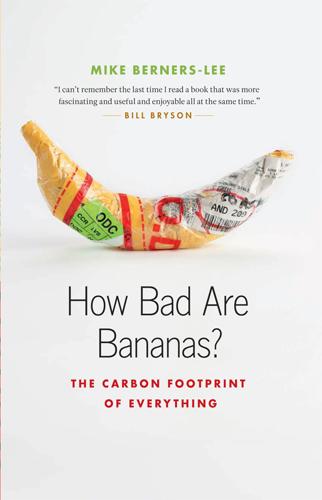
How Bad Are Bananas?: The Carbon Footprint of Everything
by
Mike Berners-Lee
Published 12 May 2010
The CO2 comes from machinery but also from the heating of greenhouses to grow crops out of season or in countries that just don’t have the right climate. Transport The first thing to say about transport emissions is that, for all the talk that we hear about food miles, they are not the most pivotal thing to think about. At Booths, over one-quarter of the transport footprint comes from the very small amount of air freight in their supply chains—typically used for expensive items that perish quickly. Conversely, most of their food miles are by ship (partly because the U.K. is an island), but because ships can carry food around the world around 100 times more efficiently than planes, they account for less than 1 percent of Booths’ total footprint.
…
An orange Zero g CO2e grown in your own garden 90 g or 500 g CO2e per kilo (230 g per pound) shipped 2,000 miles by boat and 500 by truck. 1 kg CO2e each or 5.5 kg per kilo (2.5 kg per pound) air-freighted for the start of a season Most oranges, along with most apples and bananas, are great from a carbon perspective.11 They keep well and so can be grown in natural conditions and shipped around the world to wherever they are required. The important thing to note here is that although there are often lots of food miles, these ones are usually fairly climate friendly. Like bananas, oranges can go on a huge boat and take their time. However, I was told by someone who buys fruit commercially that some supermarkets airfreight some varieties of orange at the start of the season to get them into the stores a couple of weeks early.
…
Actually, as someone one who is frequently cycling between offices and train stations trying to keep jacket, tie and laptop dry, I suspect that HMRC has underestimated it and should be paying out the full 40p (62 cents) per mile that they allow for car users. (This would also provide a beneficial incentive.) 4. C. Saunders, A. Barber, and G. Taylor (2006), Food Miles— Comparative Energy/Emissions Performance of New Zealand’s Agriculture Industry. Research Report no. 285. Lincoln, New Zealand: Lincoln University. 5. Blanke and Burdick (2005), referenced in Defra (2006), Environmental Impacts of Food Production and Consumption, p. 47, randd.defra.gov.uk/ Document.aspx?
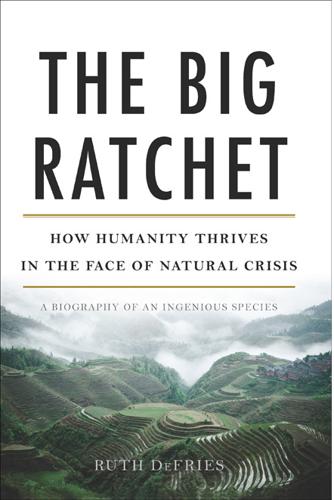
The Big Ratchet: How Humanity Thrives in the Face of Natural Crisis
by
Ruth Defries
Published 8 Sep 2014
Plant-based diets lessen the spewing of greenhouse gases into the atmosphere in the form of methane from cows and other ruminants, nitrous oxide from the synthetic fertilizers used to produce feed grains, and carbon dioxide spewed as forests are cleared for grazing. Not every pivot turns out to hit the mark. Take the well-meaning movement to buy groceries on the basis of “food miles.” Surprisingly, driving a long distance to purchase locally produced food can be less energy efficient than having distant, commercially produced food delivered to your doorstep. The “food mile” calculation also ignores the benefits to poor farmers’ livelihoods when they get access to premium-paying customers in faraway markets. But the modern pivot to eating locally produced food does have its benefits: it can make for fresher, less processed, and healthier meals and more tightly knit communities.
…
Cleland, G. 2008. Food riots will spread, UN chief predicts. London Daily Telegraph, April 9. Cohn, A., and D. O’Rourke. 2011. Agricultural certification as a conservation tool in Latin America. Journal of Sustainable Forestry 30:158–186. Coley, D., M. Howard, and M. Winter. 2009. Local food, food miles and carbon emissions: A comparison of farm shop and mass distribution approaches. Food Policy 34:150–155. Cordain, L., S. B. Eaton, A. Sebastian, N. Mann, S. Lindeberg, B. Watkins, J. O’Keefe, and J. Brand-Miller. 2005. Origin and evolution of the Western diet: Health implications for the 21st century.
…
See Dichloro-diphenyl-trichloroethane de la Vega, Garcilaso, 89 Dead zone, 121 Death rates, 6 Decomposition, 65, 67 Deforestation, ix–xi, 60, 69–70, 197 Demographic transition, 6 The Descent of Man (Darwin), 38 Detasseling, 148–149 Detergents, phosphate, 119 Dichloro-diphenyl-trichloroethane (DDT), 151 ban on, 163–164 biomagnification of, 160–161, 164 consequences of use, 157, 159–165, 199 early synthesis of, 153 exemptions for use of, 165 for gypsy moth control, 156 human health effects of, 164–165 long-range transport of, 164 persistence in the environment, 160 properties of, 156–157, 160 resistance to, 157–159 in World War II, 154 Dickens, Charles, 86 Diet changed by Haber-Bosch process, 112 eating locally and sustainably-produced foods, 202 fat in, 191–193 movement toward more plant-based, 202 overweight and obesity increase and, 193–195 protein-deficient, 61 shift to more meat, less starch, 142–144, 191–192 sugar in, 96–97, 193 transformation by New World crops, 96 transformation from farmer to urbanite and, 192–195 in transition from foraging to farming, 191 Digestive tracts, short, 43 Dinosaurs, extinction of, 32 “Dirty dozen” chemicals, 164 Disease in ancient China, 77 spread from Old World to New World, 95 spread with crowding of people, 55 water contaminated with human waste and, 86, 87 Diversity of life, 29–32 Dobzhansky, Theodosius, 38 Domesticated animals, 52–53 human labor supplemented by, 73, 74–75, 78–79 of New World, 93 transport to New World, 94–95, 97 Domesticated plants, 52–55, 184–185 Dominant gene, 131–132 Doomsday vault, 185 Dorset, Bill, 139 Drake Well, 124 Drinks, sugary, 193 Drought, in England (1790s), 82 Dutch Elm disease, 156 Dwarf genes, 174, 176–177 Earth average temperature, 20 basic machinery of, 18–19 life development on, 30–32 life supported on, 18–19 magnetic field, 21 number of species on, 30 recycling machinery of, 23–28 tilt of, 22–23 Earthquakes, 25 East, Edward Murray, 134, 172 East India Company, 139 Economic entomology, 147, 153 Ecuador, 90 Egypt crop rotation in, 78 Nile River and, 71–72 pest control by ancient Egyptians, 151 Ehrlich, Paul, 175, 176 Einkorn, 52 Elephants, learning by, 40 Emerson, Ralph Waldo, 109–110 Emerson, Rollins Adam, 134, 172 Emmer, 52, 185 Energy animal power, 73, 74–75, 123 from burning coal, 81–82 cost in calories to produce food, 141–142 cost of meat, 77, 143–144 human to produce food, 122–123 in industrial nitrogen fixation process, 109 loss in food chain, 74, 77 from sunlight, 73–75 used to obtain food, 72–73 England human waste disposal, 85–88 industrial revolution, 81–82 manure use in, 78 nineteenth century, 85–88 sugar consumption, 96 Environmental issues biodiversity loss, 197 biomagnification of DDT, 160–161, 164 Green Revolution, effects of, 182–183 greenhouse gases, 121, 125, 196–197 persistence of pesticides, 157, 160 Espionage, industrial, 110 Euphrates River, 70–71 Europe animal power use in, 78–81 bubonic plague in, 80 diet transformation by New World crops, 96 famines in, 78–80, 82, 83 four-course system of farming, 80–81 medieval, 78–80 moldboard plow use in, 78 sugar from New World, 96–97 three-field system of farming, 80 Eutrophication, 118–120 Evergreen Revolution, 183 Evolution of human brain, 42–43 of human lineage species, 47–51 pest reemergence, 184 of pesticide resistance, 158–159 of photosynthesis, 31 role of culture in human, 37–38 Exoticorum Libri Decem (Culsius), 98 Experimental Lakes Area, Canada, 118 Experiments, 3 Extinctions of plant and animal species, 32 Families, size of, 6 Famine, 4 in ancient China, 77 in Europe, 79–80, 82, 83 Great Irish Famine, 10–13, 148 in India, 175–176 Malthus’ prediction of, 2 Farming and farmers in Amazon region, 59–60 animal labor used in, 73, 74–75 civilization link to, 8 crop rotation, 75–76, 78, 80 dairy, 46 four-course system, 80–81 of Old World crops in New World, 97 by other animal species, 5, 9–10 pest control by traditional practices, 151–153, 166 population growth and, 56–57 three-field system, 80 transition from foraging to, 5, 52–57, 191 transition to urbanites, 5, 15, 203–205 Fat increase in diet, 191–192 sources of, 192–193 Fermi, Enrico, 17 Fermi’s paradox, 17–18 Fertile Crescent, 52, 53, 57, 136 Fertilizer guano as, 88–92 Haber-Bosch process and, 109–113 industrial production, 109 lake eutrophication from, 119–120 Liebig as father of fertilizer industry, 62 mineral theory and, 107 phosphorus, 113–118 saltpeter, 91–92 Finches, of Galapagos Islands, 37–38, 39–40 Fire, 43, 49–50 Fire ants, 155 Floods, 71, 79 Flush toilets, 86, 87 Food abundance of, 5, 6–7 as civilization’s engine, 7–10 cooked, 43, 49 cost of, 5 energy used to obtain, 72–73 hunger, 7 processed, 194, 195 spread to new areas, 149 stored, 55, 56 surplus, 8, 70, 81–83 virtual water and, 98–99 wasted, 201 Food chain, 143, 160–161 Food miles, 202 Food production focus on quality, 201 greenhouse gases from, 196–197 interference with planet’s recycling machinery, 197 land surface area devoted to, 190 local, 202 paradox of success, 200 sustainably-produced foods, 202 threat to diversity of life, 197 See also Agriculture; Farming and farmers Food riots, 82, 83, 198 Foraging, 52, 55, 56, 72–73, 191 Fossil fuels agriculture powered by, 123–124, 140–141 biofuels as replacements for, 198 greenhouse gases from burning, 125 Fossil phosphorus, 116–117 Franklin, Benjamin, 139 Franklin, Lady Jane, 36 Franklin, Rosalind, 186 Franklin, Sir John, 35–37, 39, 45 Frying food, 193 Fungi, 31 Fungus farms, 9 Galapagos Islands, 37–38, 39–40 Gaud, William, 178 Genes, 131–132 diversity of, 29 dwarf, 174, 176–177 tomato, 184 in wild relatives of domesticated species, 184, 186 Genetic engineering Bt crops, 168, 186 criticisms of, 186–187 Genetics genetically engineered crops, 168 Mendel’s experiments, 129–132 See also Inheritance Gilbert, Sir Henry, 62, 103 Global warming, atmospheric carbon dioxide and, 27 Golden Rice, 186 Goodall, Jane, 48 Grains, whole, 194 Great Irish Famine, 82, 83, 148 Great Splash, 22 Grebes, 161 Green Revolution, 176 criticisms of, 179–183 effect on environment, 182–183 failure to reach southern Africa, 182 origin of term, 178 water dependence, 181–182 yield increases with, 178–179 Green spider mite, 150 Greenhouse effect, 20–21 Greenhouse gases, 121, 125, 196–197 Grocery stores, 189 Groundwater, 100, 101 Guano, 88–92, 103 Guano Island Act in 1856, 90 Guatemala, pest management in, 152 Gulf of Mexico, 121 Gunpowder, 110 Gypsy moth, 151, 156 Haber, Fritz, 108–113, 197 Haber-Bosch process, 110–112 Habitable Zone, 19–21 Hadley, George, 94 Hadley cells, 94, 95 Hamburger connection, 198 Harness, collar, 78 Hays, Willet, 137 Herbivore, 74 Hessian fly, 150 Hi-Bred Corn Company, 135 High-fructose corn syrup, 193 Holmes, Arthur, 24–25 Homo erectus, 47, 49 Homo floresiensis, 47 Homo habilis, 47, 48 Homo heidelbergensis, 47 Homo sapiens, 47, 48 Honeybees, 50 Horses, 78, 97, 98 Hoskins, William, 153, 155, 166 Houseflies, resistance to DDT, 158 Hugo, Victor, 76, 87 Human ingenuity, 199–200 civilization and, 8 interplay with nature, 2, 7, 15, 18 overshoot and, 14 as ultimate resource, 2 Human labor, supplementing with domestic animals, 73, 74–75, 78–79 Human waste, 85–88 Humans brain size and complexity, 42–43 evolution and extinction of early human species, 47–51 lactose digestion by, 45–46 Humboldt, Alexander von, 89, 103 Humpback whales, 50 Humus theory, 106–107 Hundred Years’ War, 79 Hunger, 7 Hunter-gatherers, 55, 56, 57, 141 Hutton, James, 28 Hutton, John, 100 Huxley, Aldous, 117 Hybrid vigor, 129, 134, 135, 177 Hybrids corn, 134–136 cross-bred, 130 rice, 177–178 Ice Ages, 43 Ice cream, 190–191 Inbreeding, 128–129, 134 Inca, 88–89 India food production in, 175–176 groundwater extraction, 181–182 growth of urban population in, 203–204 uneven access to Green Revolution, 180–181 Indigenous people, Kayapó, x–xii Indus River, 70, 72 Industrial revolution, 81–82 Inheritance, genetic, 39–40 blended, 129, 132 Darwin and, 128–129 Mendel’s experiments with, 129–132 randomness of, 127 Innovations, cumulative learning and, 44 Insecticides for fire ant control, 155 for gypsy moth control, 156 synthetic organic, 156–157 See also Dichloro-diphenyl-trichloroethane; Pesticides Integrated pest management, 166–167 Intelligent brains, 40 Intelligent life, elsewhere in the universe, 17–18 Internal combustion engine, 123 Introduced species, 150 Inuit, 35–37, 38–39, 45, 164, 194 Invasive species, 150 IR8 (rice variety), 176–177 Ireland, Great Famine in, 10–13, 148 Irrigation, in Mesopotamia, 71 James (King of England), 95 Japan manure use in, 78 short wheat varieties, 174 Japanese macaque, 41, 44 Jericho, 8, 101 Jones, Donald, 135 Kaiser Wilhelm Institute for Physical Chemistry, 111 Kayapó (indigenous people), x–xii Kellogg, Luella, 43, 50 Kellogg, Winthrop, 43, 50 Kenya, increase in overweight people in, 194 Knowledge, building across generations, 3 Kwashiorkor, 60–61 Lactase, 45–46 Lactose, digestion of, 45–46 Lake, eutrophication, 118–120 Lake Mendota, 119–120 Language, 50–51 Law of the Minimum, 65 Lawes, Sir John, 62, 103, 114, 115 Lead arsenite, 156 Leaf-cutter ants, farming by, 9, 149 Learning compensating for locked-in inheritance, 40 cumulative, 44–46, 49, 50 social, 41–43 trial-and-error, 40 Legumes, 62–63, 75 Lenoir, Jean J., 123 Les Misérables (Hugo), 76 Levees, 71 Lice, control with DDT, 153, 154 Liebig, Justus von on Chinese agriculture, 75 law of the Minimum, 65 mineral theory, 106–107 phosphorus and, 62, 65, 103, 113–116 on sewage return to field, 87–88 Life biological homogeneity, 94–95, 98 building blocks of, 30 diversity of, 29–32 diversity threatened by food production, 197 liquid water as requisite for, 19 planets supporting, 17–18 from rivers, 70–72 transcontinental transfer of species, 94–95, 97–98 Life-span, average, 5 Limits to Growth (Meadows), 2 Little Ice Age, 57 Livestock, corn-fed, 133, 134 Lockwood, Jeffrey, 147 Locusts, 145–147, 165–166 London human waste disposal, 86–88 population growth in, 105 London’s Farmer Club, 87 Longping, Yuan, 177–178 Los Baños, Philippines, 176 Maggi, Blairo, x, xii Magma, 24, 26, 27 Magnetic field, planetary, 21–22 Maize.
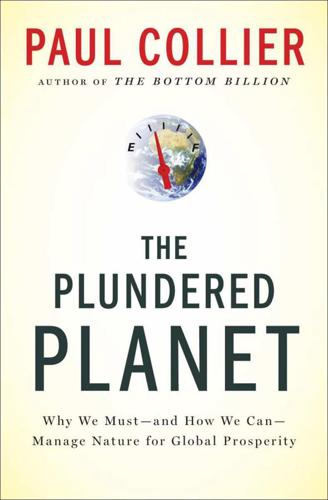
The Plundered Planet: Why We Must--And How We Can--Manage Nature for Global Prosperity
by
Paul Collier
Published 10 May 2010
Local self-sufficiency in rich countries is being encouraged through the concept of “food miles”—the ideal being the shortest route between production and consumption. But there is no virtue in minimizing the transportation of food. Indeed, from the perspective of carbon emissions it usually makes more sense to grow food in the most conducive climates, wherever they are, and transport it. The image of vegetables being flown around conjures up carbon profligacy, but the key carbon emissions are in cultivation not transportation. While food miles do not reduce carbon, they do reduce incomes in the bottom billion: horticulture for export creates scarce rural jobs.
…
See also auctions Conrad, Robert, 38, 39, 41 construction, 131, 136, 147–48 Construction Sector Transparency Initiative, 136 consumption and appreciation of assets, 105–6 and Bird-in-the-Hand Rule, 108, 109–10 and booms, 116, 118 cutting consumption, 116–17, 118 in decision chain, 127 and domestic investment, 114 and future generations, 97–98, 111 in low-income countries, 114 and Permanent Income, 103 and resource curse, 48 versus savings, 97–98, 119–20 “contract farming” model, 215 cooperation and coordination of efforts, 175, 237–43 Copenhagen conference on climate change, 175, 183, 190, 195 copper, 32, 42, 64, 86–87, 142–43 corruption and capturing natural assets, 79 and construction deals, 131 countering corruption, 80–83, 128–30, 135–36 and fishing, 164 and prospecting rights, 70 in public-investment projects, 128–31, 135 and resource extraction, 4, 79, 80, 82, 136 and taxation, 51–52, 88 and transparency, 94 cost-benefit analyses, 136–37 crashes, 145–46 creativity, 28 Creutzfeldt-Jakob disease, 220 custody principle and carbon emissions, 201, 202–3 and compensation for assets, 31–33, 112–13, 114, 155–56 and nonrenewable natural assets, 155–56 obligations of, 11, 32–33, 112 (see also future generations) and renewable natural assets, 155, 157, 161 and resource revenues, 98–99 Dasgupta, Sir Partha, 9, 121 Davies, Victor, xiv De Beers, 76 decision chains, 60–62, 127 demand for raw materials, ix, 116 democracy and accountability, 23 and checks and balances system, 55–56, 57, 58, 135 and economists, 10, 33 and elections, 50, 54–55, 56–58, 59 and future generations, 33 and information sharing, 239–41 and international coordination, 237–43 and leaders, 59 and regulation, 7 and resource revenues, 53, 54 in resource-rich countries, 50–53 spread of, 49 and technology, 235 transparency in, 55 Democratic Republic of the Congo, 5, 64, 69, 89 demurrage, 141 Denmark, 30 depletion of natural assets, 120–21 Dercon, Stefan, xiv Developing Asia, 99 developing countries, 184–85, 195, 211 diamonds, 37, 48, 76, 165 dictatorships, 49 Dimbleby Lecture, 16 discovering natural assets, 63–77 in bottom billion countries, 68, 74–76 dilemmas in, 68–74 distribution of assets, 64–68 and governance, 54 in OECD countries, 67–68 as a public good, 74–77 risks of, 74, 75 and selling prospecting rights, 69–74 Doha Round of trade negotiations, 237 Doing Business survey, 145 domestic investment and absorption problems, 128, 133 and consumption, 114 and corruption, 128–31, 135 and development, 128 IMF on, 128, 133 and liquidity funds, 119 volatility of, 117–18 See also investments Dominican Republic, 19 donors, 76 drought-resistant crops, 222–23 Duponchel, Marguerite, xiv, 142 Dutch Disease, 48 Economic and Financial Crimes Commission, 129–30 economists and democracy, 10, 33 environmentalists versus, 9–13 and ethics, 10 on popular opinion, 203 value system of, 11, 12 efficiency, 21, 22, 179 elections, 50, 54–55, 56–58, 59 emerging market economies and carbon emissions, 192–93, 197 land area represented by, 6, 63 and resource management, 241–43 employment commitments, 90 enclosures movement, 214 endogeneity, 39–40 energy exports of, 193–94 production of, 180, 181–82 enforcement, 241 entitlements, 165, 168 entrepreneurship, 213 environmentalists economists versus, 9–13 and farm sizes, 212–19 and nuclear power, 181–82 and preservation of nature, 32 and prioritization of issues, 225–26 value system of, xiii, 11–12, 16 Equatorial Guinea, 29, 133 equipment, 131, 148 equity, 103 Eritrea, 158–59 ethanol, 223–25 ethics and economic responsibilities, 32 and natural asset management, 236 and rights, 9–10 and Utilitarianism, 10, 25, 26 Ethiopia, 29, 158, 218 Eurasia, 3 Euro, 238 Europe and carbon emissions, 183, 188, 240 and genetically modified crop ban, 225 taxation in, 27 European Commission, 208 European Community, 27–28 European Union, 27–28, 190 excess-profits tax, 88–89 expected values, 72 exports energy exports, 193–94 and food crises, 218 and import duties, 101 and international coordination, 237 restrictions, 208 externalities, 68–69, 168, 173, 214 extinction, 154, 161 extraction rights in Africa, 95 auctions for, 83–84, 90–91, 124–25 and geological surveys, 75 and infrastructure, 91–92 and prospecting, 76 and time-inconsistency problem, 74 Extractive Industries Transparency Initiative (EITI), 80, 82, 136, 232–33 family farming, 216–17 famine, 211 farmed fish, 160, 162, 168–69 Financial Action Task Force, 129–30 financial assets, 22 Financial Times, 89 finders-keepers rule of assets, 21, 22, 46 Fiscal Affairs Office of the IMF, 232 fisheries, 160–67 farmed fish, 160, 162, 168–69 fishing lobbies, 163, 170 and international coordination, 238, 239, 240 price of, 169 and resource scarcity, 229–30 and sustainability, 154, 161, 164, 168–71 taxation of, 169–70 UN management of, 168–71 flexible business environments, 145–46 Florida, 189 food food fashions, 213 food miles, 213 prices of, x, xiii, 207–12, 218, 237 See also agriculture forests and cooperation of locals, 166 and custody principle, 157–59 of Eritrea, 158–59 and governance, 19 as natural assets, 160 rain forests, 15, 17, 23, 33–34, 215 France, 137, 181–82 free-rider problem and carbon emissions, 188–91, 197, 240–41 and international cooperation, 238 and public goods, 170 Freetown, Sierra Leone, 147 Friedman, Milton, 102, 103 fuel production, 223–24.
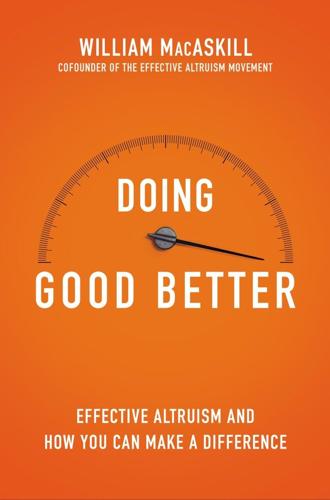
Doing Good Better: How Effective Altruism Can Help You Make a Difference
by
William MacAskill
Published 27 Jul 2015
only 10 percent of the carbon footprint of food comes from transportation, whereas 80 percent comes from production: Sarah DeWeerdt, “Is Local Food Better?” World Watch 22, no. 3 (May/June 2009), 6–10; “The Tricky Truth About Food Miles,” Shrink that Footprint, http://shrinkthatfootprint.com/food-miles. Cutting out red meat: Christopher Weber, and Scott Matthews, “Food-Miles and the Relative Climate Impacts of Food Choices in the United States,” Environmental Science & Technology 42, no. 10 (2008), 3,508–13. locally grown tomatoes: Annika Carlsson-Kanyama, “Food Consumption Patterns and Their Influence on Climate Change,” Ambio 27, no. 7 (November 1998), 528.
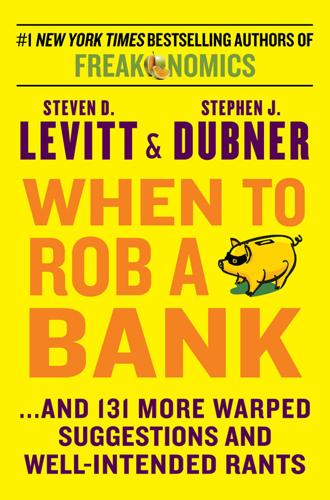
When to Rob a Bank: ...And 131 More Warped Suggestions and Well-Intended Rants
by
Steven D. Levitt
and
Stephen J. Dubner
Published 4 May 2015
. / 167 “Goodall is no right-wing nut”: See Chris Goodall, How to Live a Low-Carbon Life (Earthscan, 2007). 168 “DO WE REALLY NEED A FEW BILLION LOCAVORES?”: “As we have written before”: See Dubner and Levitt, “Laid-Back Labor,” The New York Times Magazine, May 6, 2007. / 171 “consider the ‘food miles’ argument and a recent article”: See Christopher L. Weber and H. Scott Matthews, “Food-Miles and the Relative Climate Impacts of Food Choices in the United States,” Environmental Science & Technology 42, no. 10 (April 2008). 172 “GOING GREEN TO INCREASE PROFITS”: “As Mary MacPherson Lane writes in an A.P. article”: See Mary MacPherson Lane, “Brothel Cuts Rates for ‘Green’ Customers,” Associated Press, October 17, 2009. 175 “HOW ABOUT THEM (WRAPPED) APPLES”: “Similar numbers have been found for potatoes and grapes”: See “Food Packaging and Climate Change,” carboncommentary.com, October 29, 2007. / 177 “One study estimates that U.S. consumers throw out about half the food they buy”: See J.
…
With a site-built home, you need to invest in all the tools, material, labor, and transportation costs to make it happen, and the myriad inefficiencies of having dozens of workmen’s pickup trucks retrace the same route hundreds of times all for the sake of erecting one family’s home—whereas factory-built homes create the opportunity for huge efficiencies by bundling labor, materials, transportation, etc. 4. But growing your own food has to be good for the environment, right? Well, keeping in mind the transportation inefficiencies mentioned above, consider the “food miles” argument and a recent article in Environmental Science and Technology by Christopher L. Weber and H. Scott Matthews of Carnegie Mellon: We find that although food is transported long distances in general (1640 km delivery and 6760 km life-cycle supply chain on average) the GHG [greenhouse gas] emissions associated with food are dominated by the production phase, contributing 83% of the average U.S. household’s 8.1 t CO2e/yr footprint for food consumption.
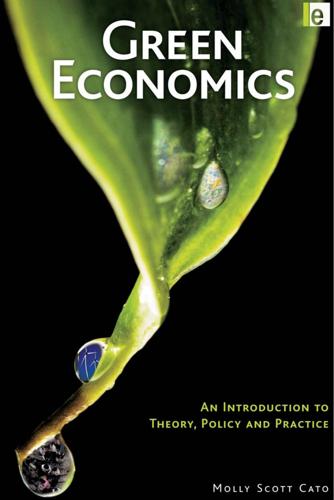
Green Economics: An Introduction to Theory, Policy and Practice
by
Molly Scott Cato
Published 16 Dec 2008
The UK now imports the majority of its food: food imports into the UK increased by 24.6 per cent between 1992 and 2002 while the balance of payments deficit in food moved from £4.7 billion to £9.8 billion during the same period.22 Figures from Eurostat indicate that both imports and exports of food by the EU-25 increased by around 16 per cent during the period 1999 to 2004. A Defra report on food miles identified a large-scale increase in transport of food. It estimated the annual cost of this transport, in social, environmental and economic terms, as more than £9 billion, the largest proportion of that being road congestion. This represents a full 34 per cent of the total value of the UK food and drinks industry.
…
The farm is managed by a core group of members elected each year at the AGM. Connecting with the land is a key theme of the farm’s activity, with a cycle of festivals reflecting the turning of the year. Seasonality is obviously also built into the provision of vegetables as is a near elimination of ‘food miles’. Members of the farm are encouraged to participate in monthly farmdays, and many also contribute extra time; for labour-intensive activities such as haymaking as many members as possible are involved. The farm spreads farming skills among members and has an apprentice with whom these skills are shared.
…
S. 80 capital 96 see also Five Capitals Framework capitalism 11, 59, 90–92 carbon cycle 98–99 carbon dioxide emissions 98, 110–113, 130, 164, 165 carbon permits 111–112 carbon tax 164 carbon trading 110 Chiemgauer 82 China 128, 141 Chipko movement 189 Christianity 21 Citizens’ Income 181–182 climate change 1, 12, 98, 109–113, 129–130 closed system 48 CLT (Community Land Trust) 195, 196 Club of Rome 39 CO2 emissions 98, 110–113, 130, 164, 165 co-housing 196–197 commodity prices 126 commons, taxation 162–164 community business 68 Community Land Trust (CLT) 195, 196 community-supported agriculture (CSA) 95, 200–202 comparative advantage 124–126 competition 127–128 complementary currencies see local currencies Conable, B. 123 Conaty, P. 195 congestion charge 163 construction sector 107–109 220 GREEN ECONOMICS consumers 63 consumption 10, 96, 174 Contraction and Convergence 111 convivial economy 42, 44, 101 cooperatives 63, 64–65, 94, 95 co-production 80 core economy 80 corporate social responsibility (CSR) 92–93 cowboy perspective 11, 25 CSA (community-supported agriculture) 95, 200–202 CSR (corporate social responsibility) 92–93 Cuba 153, 201 Curtis, F. 145 Daly, H. 9, 25, 40, 115 Dawson, J. 194 debt-based money system 72, 73, 78 democratization, money system 74 demurrage 82 Denmark 167, 197 deskilling 61–64 Diggers 189 direct action 133 disembedding 183, 187 domestic work 114 Douthwaite, R. 27–29, 206 cooperatives 64–65 economic growth 9 economics 43 green growth 40 local self-reliance 145, 153–154 money 77 drug manufacturers 184 dumping, economic 135 early human societies 176 ecofeminism 35, 46 ecological economics 7, 40 ecological footprint 8 ecological modernization 106–109 ecological rucksack 96 ecological virtue 18 ecology 4, 190 economic growth 9–10, 38–39, 83, 174 economic indicators 116–120 see also GDP economics 11, 30–31, 41–45 economic security 120 ecotaxes 164–168 ecovillages 194 ecowelfarism 180 Emissions Trading Scheme (ETS) 110 see also carbon trading employment 58 empowerment 63 enduring terrors 178–179 energy 26, 92, 95–96 energy return on energy invested (EROI) 100 energy tax credits 166 entropy law 26 environmental catastrophes 114–115 environmental crisis 105, 178 environmental economics 6, 7 environmental justice movement 178 environmental movement 39 environmental taxes see ecotaxes equity 159, 160, 172 EROI (energy return on energy invested) 100 ETS (Emissions Trading Scheme) 110 European Union (EU) 109, 110, 143, 166 externalities 6 fair trade products 95, 128–129 farmers’ markets 95 farming 197–202 financial system, international 74–77 Five Capitals Framework 96 Fleming, D. 44, 112 food 62, 95, 140, 147 food miles 62 food security 143 formal economy 5 France 143 free trade 123, 126–129 Freire, P. 29 Funtowicz, S. O. 116 Gaia hypothesis 35–36 Gandhi, M. K. 29, 132 GAST (General Agreement on Sustainable Trade) 134, 135 GCI (Global Commons Institute) 28–29, 111 GDH (gross domestic happiness) 119 GDP (gross domestic product) 39, 113–116 INDEX General Agreement on Sustainable Trade (GAST) 134, 135 George, H. 190–191, 192 Georgescu-Roegen, N. 25–26, 206 Germany 82, 108–109, 165 Gesell, S. 81 global commons 111 Global Commons Institute (GCI) 28–29, 111 global economy 27 global free trade see free trade global injustice 74–77 see also inequalities globalization 12, 123, 129–130, 139–141, 209 good life 18 goods 63 see also trade Graae, B. 197 Greek philosophy 18 green business 89–101, 208 energy use 95–96 low-carbon economy 98–99 production 97 resource use 96 scale 92–94 sustainability 90–92 green currencies 83 green economics 2–9, 18–19, 106–107, 205–06 Green Group in the European Parliament 143 green growth 40 Green Industrial Revolution 57, 58 Green Jobs Strategy 57 green parties 106 Green Party of England, Wales and Northern Ireland 144, 160, 180 green taxation 157–168, 209–210 commons 162–164 ecotaxes 164–168 strategic taxation 160–162 theory 157–159 greenwash 93 gross domestic happiness (GDH) 119 gross domestic product (GDP) 39, 113–116 growth, economic 9–10, 28, 38–39, 83, 174 Gudmund-Hower, J. 197 guild system 65–67 221 Hajer, M. 106 Hall, C. 99–100 happiness, gross domestic (GDH) 119 happy planet index (HPI) 119–120 Harper, R. 5, 57, 202 HDI (Human Development Index) 120, 177–178 health 175, 183–185 HE-economy 41 Henderson, H. 26–27, 30, 206 Henry George Institute 191 Hines, C. 126, 134, 139–140, 141, 143 Hoggett, P. 180 home ownership 195–197 Hopkins, R. 148 housing 108–109 HPI (happy planet index) 119–120 Human Development Index (HDI) 120, 177–178 human societies, early 176 Hutchinson, F. 19, 57, 58, 72 Illich, I. 60, 61, 101, 184 illness service 185 Index of Sustainable Economic Welfare (ISEW) 117–118 India 133, 177 indigenous peoples 188 industrial ecology 97 inequalities national income accounting 115 taxation 160, 161 trade 125, 126, 127 UK 3 widening 1, 2 see also global injustice informal economy 64 inheritance tax 160 intellectual roots, green economics 18–19, 205–506 intermediate technology 98 international division of labour 63 international financial system 74–77 International Labour Organization 120 Ireland 112, 158 ISEW (Index of Sustainable Economic Welfare) 117–118 Jackson, T. 117 JAK bank 182–183 Judaeo-Christian tradition 21 222 GREEN ECONOMICS just price 65–66 Kenya 128 Keynes, J.

Supertall: How the World's Tallest Buildings Are Reshaping Our Cities and Our Lives
by
Stefan Al
Published 11 Apr 2022
Today, green roofs are also praised for increasing the life span of roofs, since the vegetation protects roof membranes from ultraviolet radiation and temperature fluctuation. Green roofs are increasingly home to vegetables. Urban agriculture, whether on roofs or in community gardens, has been making its way into cities as a way to reduce “food miles”: the energy wasted in shipping food from far away to your local grocery store. With fruit trees beginning to be part of cities, we have come full circle to our nomadic ancestors, whose lives centered around cultivating food, including trees known for their edible fruits. Trees have come a long way from city walls to croquet allées, and from vegetated quads to building roofs.
…
However, with each horizontally growing tree costing thousands of dollars, we are unlikely to see many sideway-growing trees on our buildings in the near future. The most forward-thinking architects may want to collaborate not just with horticulturalists but with agriculturalists. Even our greenest cities waste energy on shipping food from thousands of miles away. We can minimize these “food miles” by incorporating agriculture into our buildings. This way, cities can be agriculturally productive instead of being consuming islands relying on a vast periphery of greenhouses and watersheds. Urban sprawl erases more farmland every year—we are losing an area as large as Denmark annually, with much of it in Asia.42 Already, restaurateurs and homeowners are pruning herbs, greens, and small fruits on the sides of buildings.
…
See also carbon emissions of air-conditioning, 115, 119–20 of cars, 221 dystopian image of cities and, 239 of homes for the ultrarich, 16 in making cement, 24–25 progress traps and, 41 of refrigerants, 119–20 of tall buildings, 269 Equitable Building, New York, 183 escalators, 15, 89, 96, 230, 231 Europe affordability of housing, 174 altered historic skylines, 145–46, 147–48, 159–60 Evelyn, John, 243 exoskeleton structure, 61, 80, 132 Fallingwater, 32 Farnsworth, Edith, 123 Feist, Wolfgang, 133 Ferriss, Hugh, 185 53W53, New York, 198, 199 56 Leonard Street, New York, 205 fire, 31, 32, 46, 59, 64, 105, 183 “floor area ratio” regulations, 189–90 floor cycle, 40 fly ash, 33, 44 flying buttresses, 52, 57–58, 81 food miles, 250, 261 footbridges, in Hong Kong, 229 Ford, Henry, 219 formwork, 40 40 Wall Street, 60 Foster, Norman, 132–33, 168, 169 432 Park Avenue, 195–97, 196 Frankfurt am Main, 127–28 Franklin, Benjamin, 118–19 free troposphere, 72 Freons, 119–20 Fuller, Buckminster, 130–32 Futurists, 96–97 Gaudí, Antoni, 32, 82 Gehl, Jan, 171 Gherkin, 13, 145, 161, 161–62, 163, 168, 169 Gibson, William, 258–59 glass, 135, 137–39 glass facades, 59, 113, 122–25, 126, 135–36, 137–39.

Adapt: Why Success Always Starts With Failure
by
Tim Harford
Published 1 Jun 2011
This helped – but only a little. Going organic trims 5 to 15 per cent off the cheeseburger and lamb chop figures. Buying local produce to reduce ‘food miles’, however, is often a counterproductive exercise. While it’s clearly true that freighting food around the world uses energy, the impact is less than you might think: most of it travels by ship; when it does travel by plane, it doesn’t get a big seat with ample legroom and free champagne (the term ‘food miles’ misleadingly echoes ‘air miles’, with its connotations of business-class indulgence rather than efficiently packed containers); and it was probably produced in a much more sensible climate.
…
, 165 Bertrand, Marianne, 135 Bhopal disaster, 184 Billing, Noel Pemberton, 87–8 biomass systems, 170–1 bird flu, 97 Björkman, Martina, 142–3 Blair, Tony, 20, 30, 141 Boulton-Paul Defiant aircraft, 85 BP, 216–19, 245 Bradley, James, 106 Branson, Sir Richard, 112, 243 Brazil, 117, 148 breeding, selective, 175–6 Bremer, Paul, 1700000140345 >58 Brin, Sergey, 232 Bromgard, Jimmy Ray, 252 Buiter, Willem, 205 bulldog, British, 175–6 Bulow, Jeremy, 205 Bunting, Madeleine, 130 Burroughs 3500 computer, 69–71 Bush, Laura, 119 Bush, President George W., 20, 59, 64 business world: evolutionary theory and, 14–15, 16, 17, 18–19, 174–5, 233–4; failure in, 8–10, 11–12, 18–19, 36, 148–9, 224, 239–46; see also corporations and companies; economics and finance Cadbury’s dairy milk chocolate, 165 CAFE environmental standards in USA, 172–3, 176 Canon, 241 Capecchi, Mario, 97–101, 102, 114, 140, 152, 223 Carbon Trust, 163–5 Cardano, Gerolamo, 83 Carlsmith, James, 251> Case Foundation, 119 Casey, General George W., 55, 59, 71 catastrophe experts, 184–6, 191, 194–5, 208 Cave-Brown-Cave, Air Commodore Henry, 81, 83, 85, 88, 114 centralised decision making, 70, 74–5, 226, 227, 228; warfare and, 46–7, 67–8, 69, 71, 76, 78–9 centrally planned economies, 11, 21, 23–6, 68–9, 70 Challenger shuttle disaster, 184 Charles, Prince, 154 Chernobyl disaster, 185 Chile, 3, 69–72, 76, 148 China, 11, 94, 131, 143, 147, 150, 152 Christensen, Clayton, 239–40, 242, 245 Chuquicamata mine (Chile), 3 Churchill, Winston, 41–2, 82, 85 Citigroup, 205131 Clay Mathematics Institute, 110 climate change, 4, 20; carbon dioxide emissions and, 132, 156, 159–65, 166–9, 173, 176, 178–80; ‘carbon footprinting’, 159–66; carbon tax/price idea, 167–9, 178–80, 222; environmental regulations and, 169–74, 176, 177; ‘food miles’ and, 159, 160–1, 168; governments/politics and, 157–8, 163, 169–74, 176, 180; greenhouse effect and, 154–6; individual behaviour and, 158–63, 164, 165–6; innovation prizes and, 109, 179; methane and, 155, 156, 157, 159–60, 173, 179, 180; new technologies and, 94–5; simplicity/complexity paradox, 156, 157–8; Thaler-Sunstein nudge, 177–8; uncertainty and, 156 Coca-Cola, 28, 243 Cochrane, Archie, 123–7, 129, 130, 140, 238, 256 cognitive dissonance, 251–2 Cold War, 6, 41, 62–3 Colombia, 117, 147 complexity theory, 3–4, 13, 16, 49, 72103, 237 computer games, 92–3 computer industry, 11–12, 69, 70–1, 239–42 corporations and companies: disruptive technologies and, 239–44, 245–6; environmental issues and, 157–8, 159, 161, 165, 170–1, 172–3; flattening of hierarchies, 75, 224–5, 226–31; fraud and, 208, 210, 212–13, 214; innovation and, 17, 81–2, 87–9, 90, 93–4, 95–7, 108–11, 112, 114, 224–30, 232–4; limited liability, 244; patents and, 95–7, 110, 111, 114; randomised experiments and, 235–9; skunk works model and, 89, 91, 93, 152, 224, 242–3, 245; strategy and, 16, 18, 27–8, 36, 223, 224–34; see also business world; economics and finance cot-death, 120–1 credit-rating agencies, 188, 189, 190 Criner, Roy, 252 Crosby, Sir James, 211, 214, 250, 256 Cuban Missile Crisis, 41, 63 Cudahy Packing, 9 dairy products, 158, 159–60, 164–5, 166 Darwin, Charles, 86 Dayton Hudson, 243 de Montyon, Baron, 107–8 Deal or No Deal (TV game show), 33–5, 253 decentralisation, 73, 74–8, 222, 224–5, 226–31; Iraq war and, 76–8, 79; trial and error and, 31, 174–5, 232, 234 decision making: big picture thinking, 41, 42, 46, 55; consistent standards and, 28–9; diversity of opinions, 31, 44–5, 46, 48–50, 59–63; doctrine of unanimous advice, 30–1, 47–50, 62–3, 64, 78; grandiosity and, 27–8; idealized hierarchy, 40–1, 42, 46–7, 49–50, 55, 78; learning from mistakes, 31–5, 78, 119, 250–1, 256–9, 261–2; local/on the ground, 73, 74, 75, 76–8, 79, 224–5, 226–31; reporting lines/chain of command, 41, 42, 46, 49–50, 55–6, 58, 59–60, 64, 77–8; supportive team with shared vision, 41, 42, 46, 56, 62–3; unsuccessful, 19, 32, 34–5, 41–2; see also centralised decision making Deepwater Horizon disaster (April 2010), 36, 216–19, 220 Democratic Republic of Congo, 139–40 Deng Xiaoping, 1 Denmark, 148 Department for International Development (DFID), 133, 137–8 development aid: charter cities movement, 150–3; community-driven reconstruction (CDR), 137–40; corruption and, 133–5, 142–3; economic ‘big push’ and, 143–5, 148–9; feedback loops, 141–3; fundamentally unidentified questions (FUQs), 132, 133; governments and, 118, 120, 143, 144, 148–9; identification strategies, 132–5; microfinance, 116, 117–18, 120; Millennium Development Villages, 129–30, 131; product space concept, 145–8; randomised trials and, 127–9, 131, 132, 133, 134, 135–6, 137–40, 141; randomistas, 127–9, 132, 133, 135–40, 258; selection principle and, 117, 140–3, 149; SouthWest project in China, 131; success and failure, 116, 118–20, 130–1; Muhammad Yunus and, 116, 117–18 digital photography, 240–1, 242 Dirks, Ray, 211–12, 213 disk-drive industry, 239–40, 242 Djankov, Simeon, 135 domino-toppling displays, 185, 200–1 Don Basin (Russia), 21–2, 24, 27 dot-com bubble, 10, 92 Dubai, 147, 150 Duflo, Esther, 127, 131, 135, 136 Dyck, Alexander, 210, 213 eBay, 95, 230 econometrics, 132–5 economics and finance: banking system as complex and tightly coupled, 185, 186, 187–90, 200, 201, 207–8, 220; bankruptcy contingency plans, 204; Basel III regulations, 195; bond insurance business, 189–90; bridge bank/rump bank approach, 205–6; capital requirements, 203, 204; centrally planned economiepos=0000032004 >11, 21, 23–6, 68–9, 70; CoCos (contingent convertible bonds), 203–4; complexity and, 3–4; decoupling of financial system, 202, 203–8, 215–16, 220; Dodd-Frank reform act (2010), 195; employees as error/fraud spotters, 210, 211, 212, 213, 215; energy crisis (1970s), 179; evolutionary theory and, 14–17, 18–19, 174–5; improvements since 1960s, 215; inter-bank payments systems, 207; latent errors and, 209–10, 215; ‘LMX spiral’, 183–4, 189; narrow banking approach, 206–7, 215; need for systemic heat maps, 195–6; reinsurance markets, 183; zombie banks, 201–2; see also business world; corporations and companies; financial crisis (from 2007) Edison, Thomas, 236, 238 Eliot, T.S., 260 Elizabeth House (Waterloo), 170–1, 172 Endler, John, 221–2, 223, 234, 239 Engineers Without Borders, 119 Enron, 197–8, 200, 208, 210 environmental issues: biofuels, 84, 173, 176; clean energy, 91, 94, 96, 245–6; corporations/companies and, 159, 161, 165, 170–1, 172–3; renewable energy technology, 84, 91, 96, 130, 168, 169–73, 179, 245; see also climate change Equity Funding Corporation, 212 Ernst and Young, 199 errors and mistakes, types of, 208–10; latent errors, 209–10, 215, 218, 220 European Bank for Reconstruction and Development (EBRD), 188 European Union, 169, 173 Evans, Martin, 100 evolutionary theory, 6, 12–13, 15–17, 174, 258; business world and, 14–17, 174–5, 233–4; Darwin and, 86; digital world and, 13–14, 259–60; economics and, 14–17, 174–5; Endler’s guppy experiments, 221–2, 223, 239; fitness landscapes, 14–15, 259; Leslie Orgel’s law, 174, 175, 176, 177, 178, 180; problem solving and, 14–15, 16; selective breeding and, 175–6 expertise, limits of, 6–8, 16, 17, 19, 66 extinction events, biological, 18–19 Exxon (formerly Jersey Standard), 9, 12, 188, 245 F-22 stealth fighter, 93 Facebook, 90, 91 failure: in business, 8–10, 11–12, 18–19, 36, 148–9, 224, 239–46; chasing of losses, 32–5, 253–4, 256; in complex and tightly coupled systems, 185–90, 191–2, 200, 201, 207–8, 219, 220; corporate extinctions, 18–19; denial and, 32, 34–5, 250–3, 255–6; disruptive technologies, 239–44, 245–6; of established industries, 8–10; government funding and, 148–9; hedonic editing and, 254; honest advice from others and, 256–7, 258, 259; learning from, 31–5, 78, 119, 250–1, 256–9, 261–2; modern computer industry and, 11–12, 239–42; as natural in market system, 10, 11, 12, 244, 245–6; niche markets and, 240–2; normal accident theory, 219; recognition of, 36, 224; reinterpreted as success, 254–5, 256; shifts in competitive landscape, 239–46; ‘Swiss cheese model’ of safety systems, 186–7, 190, 209, 218; types of error and mistake, 208–10; willingness to fail, 249–50, 261–2; of young industries, 10 Fearon, James, 137, Federal Aviation Administration, 210 Federal Reserve Bank, 193–4 feedback, 25, 26, 42, 178, 240; in bureaucratic hierarchies, 30–1; development and, 141–3; dictatorships’ immunity to, 27; Iraq war and, 43–5, 46, 57–8, 59–62; market system and, 141; praise sandwich, 254; public services and, 141; self-employment and, 258; yes-men and, 30 Feith, Douglas, 44, 45 Ferguson, Chris ‘Jesus’, 32 Fermi nuclear reactor (near Detroit), 187 Festinger, Leon, 251 financial crisis (from 2007), 5, 11, 25; AIG and, 189, 193–5, 215–16, 228; bankers’ bonuses, 198; banking system as complex and tightly coupled, 185, 186, 187–90, 200, 201, 207–8, 220; bond insurance business and, 189–90; collateralised debt obligations (CDOs), 190, 209; credit default swaps (CDSs), 187–9, 190, 194; derivatives deals and, 198, 220; faulty information systems and, 193–5; fees paid to administrators, 197; government bail-outs/guarantees, 202, 214, 223; Lehman Brothers and, 193, 194, 196–200, 204–5, 208, 215–16; ‘LMX spiral’ comparisons, 183–4, 189; Repo 105 accounting trick, 199 Financial Services Authority (FSA), 214 Firefox, 221, 230 Fleming, Alexander, 83 Food Preservation prize, 107, 108 Ford Motor Company, 46–7 fossil record, 18 Fourier, Joseph, 155 fraud, corporate, 208, 210, 212–13, 214 Friedel, Robert, 80 Frost, Robert, 260 A Funny Thing Happened on the Way to the Forum (musical), 248 Gage, Phineas, 21, 27 Galapagos Islands, 86, 87 Gale (US developer), 152 Galenson, David, 260 Galileo, 187 Galland, Adolf, 81 Gallipoli campaign (1915), 41–2 Galvin, Major General Jack, 62, 256 game theory, 138, 205 Gates, Bill, 110, 115 Gates, Robert, 59, 64, 78 Gates Foundation, 110 Geithner, Tim, 193–5, 196 GenArts, 13 General Electric, 9, 12, 95 Gilbert, Daniel, 255, 256 GlaxoSmithKline, 95 Glewwe, Paul, 127–8 Global Positioning System (GPS), 113 globalisation, 75 Google, 12, 15, 90, 91, 239, 245, 261; corporate strategy, 36, 231–4; Gmail, 233, 234, 241, 242; peer monitoring at, 229–30 Gore, Al, An Inconvenient Truth, 158 Göring, Hermann, 81 government and politics: climate change and, 157–8, 163, 169–74, 176, 180; development aid and, 118, 120, 143, 144, 148–9; financial crisis (from 2007) and, 193–5, 198–9, 202, 214, 215–16, 223; grandiosity and, 27–8; ideal hierarchies and, 46pos=00002pos=0000022558 >7, 49–50, 62–3, 78; innovation funding, 82, 88, 93, 97, 99–101, 102–3, 104, 113; lack of adaptability rewarded, 20; pilot schemes and, 29, 30; rigorous evaluation methods and, 29* Graham, Loren, 26 Grameen Bank, 116, 117 Greece, 147 Green, Donald, 29* greenhouse effect, 154–6 Gulf War, first, 44, 53, 65, 66, 67, 71; Battle of 73 Easting, 72–3, 74, 79 Gutenberg, Johannes, 10 Haldane, Andrew, 195, 258 Halifax (HBOS subsidiary), 211 Halley, Edmund, 105 Halliburton, 217 Hamel, Gary, 221, 226, 233, 234 Hanna, Rema, 135 Hannah, Leslie, 8–10, 18 Hanseatic League, 150 Harrison, John, 106–7, 108, 110, 111 Harvard University, 98–9, 185 Hastings, Reed, 108 Hausmann, Ricardo, 145 Hayek, Friedrich von, 1, 72, 74–5, 227 HBOS, 211, 213, 214 healthcare sector, US, 213–14 Heckler, Margaret, 90–1 Henry the Lion, 149, 150, 151–2, 153 Hewitt, Adrian, 169 Hidalgo, César, 144–7, 148 Higginson, Peter, 230 Hinkley Point B power station, 192–3, 230–1 Hitachi, 11 Hitler, Adolf, 41, 82, 83, 150 HIV-AIDS, 90–1, 96, 111, 113 Holland, John, 16, 103 Hong Kong, 150 Houston, Dame Fanny, 88–9, 114 Howard Hughes Medical Institute (HHMI), 101–3, 112 Hughes (computer company), 11 Humphreys, Macartan, 136, 137, 138–40 Hurricane aircraft, 82* IBM, 11, 90, 95–6 In Search of Excellence (Peters and Waterman, 1982), 8, 10 India, 135, 136, 143, 147, 169 individuals: adaptation and, 223–4, 248–62; climate change and, 158–63, 164, 165–6; experimentation and, 260–2; trial and error and, 31–5 Indonesia, 133–4, 142, 143 Innocentive, 109 innovation: corporations and, 17, 81–2, 87–9, 90, 93–4, 95–7, 108–11, 112, 114, 224–30, 232–4; costs/funding of, 90–4, 99–105; failure as price worth paying, 101–3, 104, 184, 215, 236; government funding, 82, 88, 93, 97, 99–101, 102–3, 104, 113; grants and, 108; in health field, 90–1, 96; large teams and specialisation, 91–4; market system and, 17, 95–7, 104; new technologies and, 89–90, 91, 94–5; parallel possibilities and, 86–9, 104; prize methodology, 106–11, 112, 113–14, 179, 222–3; randomistas and, 127–9, 132, 133, 135–40, 258; return on investment and, 83–4; skunk works model, 89, 91, 93, 152, 224, 242–3, 245; slowing down of, 90–5, 97; small steps and, 16, 24, 29, 36, 99, 103, 143, 149, 153, 224, 259–60; space tourism, 112–13, 114; specialisation and, 91–2; speculative leaps and, 16, 36, 91, 99–100, 103–4, 259–60; unpredictability and, 84–5 Intel, 11, 90, 95 International Christelijk Steunfonds (ICS), 127–9, 131 International Harvester, 9 International Rescue Committee (IRC), 137–8, 139 internet, 12, 15, 63, 90, 113, 144, 223, 233, 238, 241; randomised experiments and, 235–6, 237; see also Google Iraq war: al Anbar province, 56–7, 58, 64, 76–7; civil war (2006), 39–40; Commander’s Emergency Response Program (CERP), 77; counterinsurgency strategy, 43, 45, 55–6, 58, 60–1, 63–4, 65; decentralisation and, 76–8, 79; feedback and, 43–5, 46, 57–8, 59–62; FM 3–24 (counter-insurgency manual), 63; Forward Operating Bases (FOBs), 51–3, 57, 65; Haditha killings (19 November 2005), 37–9, 40, 42, 43, 52; new technologies and, 71, 72, 74, 78–9, 196; Samarra bombing (22 February 2006), 39; Tal Afar, 51, 52, 53–5, 61, 64, 74, 77, 79; trial and error and, 64–5, 66–7; US turnaround in, 35, 40, 46, 50–1, 53–6, 57–8, 59–61, 63–5, 78; US/allied incompetence and, 38, 39–40, 42–5, 46, 50, 64, 67, 79, 223; Vietnam parallels, 46 J&P Coats, 9 Jacobs, Jane, 87 James, Jonathan, 30 Jamet, Philippe, 192 Janis, Irving, 62 Japan, 11, 143, 176, 204, 208 Jay-Z, 119 Jo-Ann Fabrics, 235 Jobs, Steve, 19 Joel, Billy, 247–8, 249 Johnson, President Lyndon, 46, 47, 49–50, 60, 62, 64, 78 Jones, Benjamin F., 91–2 Joyce, James, 260 JP Morgan, 188 Kahn, Herman, 93 Kahneman, Daniel, 32, 253 Kantorovich, Leonid, 68–9, 76 Kaplan, Fred, 77 Karlan, Dean, 135 Kauffmann, Stuart, 16, 103 Kay, John, 206–7, 208, 215, 259 Keller, Sharon, 252 Kelly, Terri, 230 Kennedy, President John F., 41, 47, 62–3, 84, 113 Kenya, 127–9, 131 Kerry, John, 20 Keynes, John Maynard, 181 Kilcullen, David, 57, 60–1 Klemperer, Paul, 96, 205 Klinger, Bailey, 145 Kotkin, Stephen, 25 Kremer, Michael, 127–8, 129 Krepinevich, Andy, 45 Lanchester, John, 188 leaders: decision making and, 40–2; failure of feedback and, 30–1, 62; grandiosity and, 27–8; ignoring of failure, 36; mistakes by, 41–2, 56, 67; need to believe in, 5–6; new leader as solution, 59 Leamer, Ed, 132* Leeson, Nick, 184–5, 208 Lehman Brothers, 193, 194, 196–200, 204–5, 208, 215–16 Lenin Dam (Dnieper River), 24 Levine, John, 48–9 Levitt, Steven, 132–3 Liberia, 136–9 light bulbs, 162, 177 Lind, James, 122–3 Lindzen, Richard, 156 Livingstone, Ken, 169 Lloyd’s insurance, 183 Lloyds TSB, 214 Local Motors, 90 Lockheed, Skunk Works division, 89, 93, 224, 242 Lomas, Tony, 196, 197–200, 204, 205, 208, 219 Lomborg, Bjorn, 94 longitude problem, 105–7, 108 Lu Hong, 49 Lübeck, 149–50, 151–2, 153 Luftwaffe, 81–2 MacFarland, Colonel Sean, 56–7, 64, 74, 76–7, 78 Mackay, General Andrew, 67–8, 74 Mackey, John, 227, 234 Madoff, Bernard, 208212–13 Magnitogorsk steel mills, 24–5, 26, 153 Malawi, 119 Mallaby, Sebastian, 150, 151 management gurus, 8, 233 Manhattan Project, 82, 84 Manso, Gustavo, 102 Mao Zedong, 11, 41 market system: competition, 10–11, 17, 19, 75, 95, 170, 239–46; ‘disciplined pluralism’, 259; evolutionary theory and, 17; failure in as natural, 10, 11, 12, 244, 245–6; feedback loops, 141; innovation and, 17, 95–7, 104; patents and, 95–7; trial and error, 20; validation and, 257–8 Markopolos, Harry, 212–13 Marmite, 124 Maskelyne, Nevil, 106 mathematics, 18–19, 83, 146, 247; financial crisis (from 2007) and, 209, 213; prizes, 110, 114 Mayer, Marissa, 232, 234 McDonald’s, 15, 28 McDougal, Michael, 252 McGrath, Michael, 252 McMaster, H.R.

Minimal: How to Simplify Your Life and Live Sustainably
by
Madeleine Olivia
Published 9 Jan 2020
Get onto Google, ask around, and keep your eyes peeled for farmers’ markets and stalls near you. Support your local farmers and businesses and strengthen your local economy. Plus it’ll taste a lot more fresh than the stuff from the supermarket! I’ve listed below different fruits and vegetables that are optimum to buy at certain times of the year, to reduce the food miles of your meal. Ten Easy Tips to Reduce Food Waste: 1 MEAL PLAN AND PREP Thinking ahead and getting organised about what you’re making that week can dramatically reduce any food going to waste. We all have busy lives, but if you can fit in just a small part of each week to plan ahead and prepare the food you’ll be eating during the week, you can save yourself some money and time in the long run.
…
The United Nations Discusses Oceans’, www.culturalsurvival.org, December 2017 54 United Nations Permanent Forum on Indigenous Issues, ‘Climate change and indigenous peoples’, www.un.org, 2008 55 Food Ethics Council, ‘Food Waste,’ www.foodethicscouncil.org, 2019 56 Hunger News, ‘2018 World Hunger and Poverty Facts and Statistics’, www.worldhunger.org, 25 April 2018 57 The Vegan Society, www.vegansociety.com/go-vegan/definition-veganism 58 Vegan Easy, ‘Food Additives’, www.veganeasy.org, 2019 59 Christopher L. Weber and H. Scott Matthews, ‘Food-Miles and the Relative Climate Impacts of Food Choices in the United States’, pubs.acs.org, 16 April 2008 60 BBC News, ‘Is there a serious problem with coffee capsules?’, www.bbc.co.uk, 19 February 2016 61 Umair Irfan, ‘Air travel is a huge contributor to climate change. A new global movement wants you to be ashamed to fly’, www.vox.com, 1 August 2019 62 Manfred Lenzen, Ya-Yen Sun, Futu Faturay, Yuan-Peng Ting, Arne Geschke & Arunima Malik, ‘The carbon footprint of global tourism’, www.nature.com, 7 May 2018 63 Mark Smith, ‘Cut your CO2 emissions by taking the train, by up to 90% …’, www.seat61.com, 2019 64 Dorey, No.

No. More. Plastic.: What You Can Do to Make a Difference – the #2minutesolution
by
Martin Dorey
Published 2 May 2018
At the very least, avoid plastic that can’t be recycled. It’s not easy but it can be done. Shop as usual but leave all the packaging at the till and let the supermarket know why you are doing it. The message will soon get through. If you can, buy local at a farmers’ market or greengrocer, where they use less packaging and take fewer food miles to get to you. Think about joining a ‘veg box’ scheme. Grow your own. Or at least grow a few bits and pieces on your windowsills. Herbs are easy to grow, as are chards and leaves like kale. What you can do now Next time you do your shop, find all the fruit and veg that ISN’T wrapped in plastic.
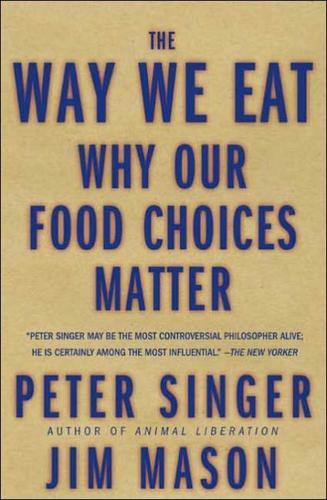
The Way We Eat: Why Our Food Choices Matter
by
Peter Singer
and
Jim Mason
Published 1 May 2006
CUTTING YOUR OWN ENERGY USE To say that buying local food will reduce energy usage and hence carbon dioxide emissions is, at best, an oversimplification. The real story is much more complicated. People who do their shopping on foot, by bike, or by using public transport do best-but in developed societies today, the number who do that is decreasing. The British Department of Environment, Food and Rural Affairs study reported that the number of "food miles" traveled in urban areas in Britain has risen 27 percent since 1992, but this is largely because more people are using cars to do their weekly shopping, rather than walking to small local groceries. For many Americans, however, there simply is no choice-there are no local groceries in walking distance.
…
Fall 1997. 29 For the number of BTUs it takes to move freight by road, see U.S. Congress, Office of Technology Assessment, Saving Energy in U.S. Transportation, OTA-ETI-S89 (Washington, DC: U.S. Government Printing Office, July 1994), p. 44, http://govinfo.library.unt.edu/ota/ Ota_I /DATA/1994/9432. PDF. 30 Alison Smith, et al, The Validity of Food Miles as an Indicator of Sustainable Development, ED50254, Issue 7, July 2005, p.67; A. Carlsson , Greenhouse Gas Emissions in the Life-Cycle of Carrots and Tomatoes: methods, data and results from a study of the types and amounts of carrots and tomatoes consumed in Sweden, IMES/EESS Report no. 24, Department of Environmental and Energy Systems Studies, Lund University, Sweden, March 1997; cited in Tara Garnett, Wise Moves, Transport 2000, pp. 76, 82-4. 31 Intergovernmental Panel on Climate Change, Aviation and the Global Atmosphere, Cambridge University Press, 1999; J.
…
Ball, "Agricultural Influences on Carbon Emissions and Sequestration: A Review of Evidence and the Emerging Trading Options," Centre for Environment and Society Occasional Paper 2001-03, University of Essex, 2001. 33 Andy Jones, Eating Oil, Sustain & Elm Farm Research Centre, London, 2001, Case Study 2. www.sustainweb.org/chain-fm-eat.asp. 34 Alison Smith, et al, The Validity of Food Miles as an Indicator of Sustainable Development, ED50254, Issue 7, July 200S, p. 74. 35 Email from Carlo Petrini to Brian Halweil, cited in Brian Halweil, Eat Here, p. 161. CHAPTER 11 1 Diana Friedman, "The Del Cabo project; a Mexican collective exports organic produce to the U.S.A.," Whole Earth Review, Spring 1989. www.findarticles.com/p/articles/mi_m1S10/is_n62/ ai_7422469; Don Lotter, "The Del Cabo Cooperative of Southern Baja keeps 300 farm families busy growing organic crops for export," New Farm, July 20, 2004, www.newfarm.org/ international/pan-am _don/j uly04/. 2 United Nations Human Development Report, 2005, p. 24. http://hdr.undp.org/reports/ global/2005/pdf/HDR05_chapter_1.pdf 3 United Nations Development Programme, Human Development Report 2000 (Oxford University Press, New York, 2000), p. 30; Human Development Report 2001 (Oxford University Press, New York, 2001), pp. 9-12, p. 22; and World Bank, World Development Report 2000/2001, Overview, p. 3, www.worldbank.org/poverty/wdrpoverty/report/overview.pdf, for the other figures.
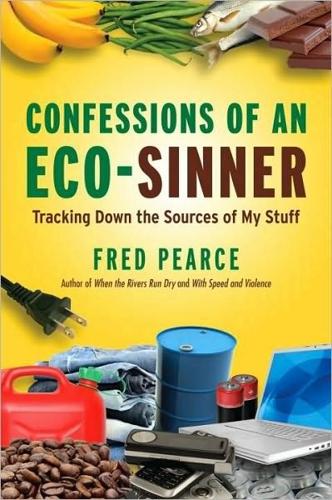
Confessions of an Eco-Sinner: Tracking Down the Sources of My Stuff
by
Fred Pearce
Published 30 Sep 2009
As much as three-quarters of our organic food is imported, twice the proportion for ordinary food. Britain is a great place for growing onions, for instance. But not enough British farmers want to grow organic onions. So, more than half of those on sale in British supermarkets are grown abroad. Campaigners for organic food used to argue that energy used up in the extra food miles is generally offset by the low-energy cultivation. Energy savings from growing fruit and vegetables without pesticides and artificial fertilizer are typically around 15 per cent. But one study found that, for vegetables, an extra 400 kilometres in a truck wiped out the difference. And, if the vegetables were being flown, then just 6 extra kilometres in the air neutralized the gains.
…
If British customers decide they don’t want to buy the green beans with the label saying they flew to the supermarket, then Homegrown’s business is doomed. On the face of it, the statistics don’t look good. Emissions from air-freighting beans are 200 times greater than if they had come by ship. But the food-miles issue isn’t that straightforward. In summer there are green beans available grown outdoors in Britain, and eating them is the low-energy option. But the energy needed to air-freight vegetables from Kenya to Britain in winter, when British demand is highest, is actually only about 15 per cent more than the energy needed to heat a greenhouse to grow those vegetables here.
…
Shroff 131–2 extremism, humanity 5 fairtrade 371 brands 32 chocolate 98 coffee 34 community projects 32 cotton 128–30, 134–5 jewellery 245–7 Fairtrade Foundation 32, 103–4 famines, inefficient dealing with 340 farming see also urban farming energy intensive production 102–3 livestock 211 Nigeria 335–6 water usage 341 favelas Brasilia 347 Rio 114–16, 349 women’s power in 114–16 female emancipation Bangladesh 144–5 population growth 369–70 fertility rates Africa 366 Bangladesh 364 China 364 Europe 366–7 global decline 369 Iran 364 Muslim states 366 fertilizer, from sewage 255 fishing depletion of natural stocks 49, 50, 51, 53 fresh-fish auctions 49 Mauritania 50–2, 53–4 poaching 51–2 preference for line 54 Senegal 52–3, 54 ‘sustainable’ 53 trawlers vs pirogues 52 world-wide 49–50 flour stoneground wholemeal 42–4 wheat for 43–4 Fonebak 277 food see also plant foods cooking 103 imports 100–2 ‘food patriotism’, David Cameron 45, 103, 359 food production, and population growth 340 Forest Stewardship Council approved paper 312 tropical hardwoods 175 Forest Trends 170, 175 forests as carbon offsets 309 maintenance 308–9 Foundation for Adolescent Development 154 Fox, Richard, Homegrown 111 Foxconn, mobile phones 271–2 Friends of the Earth 101, 350 Frison, Emile 84 fruit pickers, immigrant 46–7 fuels, greenest 355–7 Gala, coffee roasting 33–4 Gandhi, Mahatma 360 Gap 141, 142 garlic 89 garment workshops Dhaka 138–44 H&M 140 gas domestic use 242 power stations 227 Siberia 223–5 storage projects 227 gas power, public transport 345 Gazprom 222–4 UK takeovers by 224 gemstones, finance for corrupt regimes 208–9 genetic modification bananas 88–9 cotton 125, 132–3 genetic resources, plant foods 89–92 ginger, China 58 Girardet, Herbert 239–40 Gladstone aluminium smelting 193–7 ecology 192–3 power station 193, 196–7 glass, recycling 255–6 global footprints comparative 317–18 world-wide 317 global warming CO2 emissions 354–5 threat of 354–5 globalization coffee trading 31 consumption 7–10 gold certificates of origin 247 ethically sourced 245–7 extraction process 18 in history 20–1 hoarding 21–2, 134 origins 15 power of 21–2 prices 19, 21 smuggling 21 South Africa 14–22, 205 gold mining access shafts 14–15 Fanakalo language 17 quartz containing 22 recruitment for 17–18 safety 16–17 smuggling 17 Gold Standard 21 Goodall, Chris, How to Live a Low-Carbon Life 244 Gottmann, Jean 351 gourmet chocolate 99 grain growing, water for 211 green beans food miles issue 111–12 Homegrown 104–6, 108–11 hygiene 107 Machakos 104–13 Marks & Spencer 105, 107, 109 smallholdings 104–6, 109 traceability 107, 112–13 Green Gold 246 greenhouse gases see CO2 emissions; nitrogen oxides Grimsby, fresh-fish auctions 49 Grosvenor, paper reprocessing 257–60 Gujarat Agrocel 129–31 organic cotton 129–32 water supplies 130–1 H&M 140, 142 hafnium 208 Hall, Peter 347, 349 Hall and Woodhouse brewery 37–9 Hammond, Geoff 317 Hanson, Jim 355 Harris, Frances 336 Haupt, Melville 19 heat-island effect 348 Heathrow airport CO2 emissions 235–7 fuel supplies 236 land use efficiency 237–8 noise issues 238 HelpAge International 72 herbs in beers 39 conservation 56 oregano 55–6 sage 57–8 thyme 56 Hewitt, Geoff 119–21 Hewlett-Packard 160, 163, 165 Hickey, Dan 120 Hindu philanthropy 133–4 ‘hobbits’ (Homo floresiensis) 325, 328, 331 extinction 332 Homegrown, green beans 104–6, 108–11 hominids see Homo erectus; Homo floresiensis; Homo sapiens; Neanderthals Homo erectus 325, 327, 331 extinction 332 Homo floresiensis (‘hobbits’) 325, 328, 331 extinction 332 Homo sapiens African evolution 328–9 artistic evolution 330–1 common characteristics 5–6 conspicuous consumption 333 cultural evolution 329–30 ecological footprint 333 future of 372 geographical spread 331–2 ice age survival 332–3 social evolution 330 survival skills 332 urbanization 344 virtual extinction 325, 328–9 volcanic winters 325, 328–30, 331 household waste see also sewage collections 251 food growing on 341 landfill sites 261 Thames barge transport 252–3 transfer stations 251–2 How to Live a Low-Carbon Life, Chris Goodall 244 human rights see also child labour Mauritania 184–5 Uzbekistan 147, 151–2 humanity, extremism 5 Humphries, Rick 193–4, 197–8 Hurn airport 237–8 hydroponics 342 IBM 163, 165 ice ages, Homo sapiens’ survival 332–3 immigrant fruit pickers conditions 46–7 pay 47 imports air miles 101 carbon footprints 101–2 plant foods 100–2 incinerators electricity generation from 261 pollution from 260–1 India Bihar 289 cardamom 58 child labour 124 computer recycling 288–92 cotton 124–5, 129–31, 133–5 Delhi 287–92 gold hoarding 134 Hindu philanthropy 133–4 Maral Overseas 133–4, 133–5, 135–7 Toxics Link 290–1 water shortages 130–1, 133 indium, uses 207 Indonesia palm oil 76–7 rainforest clearances 172–3 innovative enterprises, Tanzania 278–9 Intergovernmental Panel on Climate Change (IPCC) 354–5 International Crisis Group 151 International Institute for Environment and Development 103, 339 International Institute for Tropical Agriculture 95, 335 Iqbal Ahmed see also king prawns business empire 61–2, 68–70 Iran, family sizes 364 iron see also steel extraction 205 Italy, rocket 56, 90 Ivory Coast, cocoa 97 JCPenney 141 jewellery, fairtrade 245–7 Joynson-Hicks, Paul, Phones for Africa 277–8 just-in-time assembly 166 retailing 106 Kazakhstan apples 90–1 chromium 205 Keen, David 209–10 Kenya coffee 27–34 Computers for Schools 297–300 desertification reversals 108, 338–9 farm outputs 338–9 German presence in 34–5 green beans 104–13 Khosa, Veronica, AIDS clinics 73–4 Khulna, king prawn industry 63–4, 67–8 Kilimanjaro coffee 27–30 Kilimanjaro Native Cooperative Union (KNCU) 30–3 king prawns certification scheme needed 69 fry hatcheries 65–6 introduction to UK 62 landowner threats 64–5 middlemen 66–8 organic farming 64 processing plants 67 Seamark 62, 68 sustainability 69–70 Kinyua, Patrick 106–7 Kirkham, Ruth 40 Klor, Babubhai 131 KNCU (Kilimanjaro Native Cooperative Union) 30–3 Kombe, Jackson 29–30 Kyoto Protocol air travel 236–7 Australia 198 carbon offsets 304, 311 Ministry of Defence 242 Lagavulin, Islay single malt Scotch 44–5 Lamb, Harriet 103–4 land, multiple functions for 316 landfill sites heavy metals 287 household waste 261 Lea Valley 349 Leach, Matthew 260 Letterewe, Scotland 321–2 Lighthouse bakery 42 line-fishing 54 Lister, John 43–4 livestock farming 211 Lloyd Wright, Frank, Broadacre City 346–7 local food 36–7, 45 Logitech 160–1 London congestion charge 345 greenhouse gases 242 household waste 251–3, 261 Lea Valley 349 materials recycling 255–6 MI6 headquarters 241 public services 241–2 sewage 23–4, 254, 261–3 Wandsworth Prison 241 water ring-main 241 London Wildlife Trust 350 Ma, Cheng Liang 352–3 McDonald’s 79, 102–3 Machakos desertification reversals 338–9 green beans from 104–13 Macharia, John 108–9 Madagascar, vanilla 58–9 Mahesh, Priti 290–1 Makinga, Norman 297–9 Malaysia, palm oil 76–7 malnutrition 340 Mandela, Nelson 320 Mandoli, computer recycling 288–91 Manila abortions 154 contraception 153–5 Foundation for Adolescent Development 154 prostitution 153, 155 manures, changes to natural 335–6 Marakele wildlife park 320 Maral Overseas, cotton 133–4, 135–7 margarine from palm oil 76 from whale oil 75 marine national parks, Banc d’Arguin 50–2 Marks & Spencer Blue Horizon jeans 145 cotton 122, 132, 142, 145 fairtrade coffee 32 fairtrade cotton 128, 134–5 green bean imports 105, 107, 109 materials ‘rucksacks’ 204–5 Mauritania debt slavery 186 fishing 50–4 racial structure 185–6 slavery 184–5 meat production 340 mega-cities 344 absorption of urban centres 351–3 eco-projects 345 environmental footprint 344–5 recycling mantra, necessity for 346 wildlife in 349–50 Melbourne, eco-projects 345 Melgar, Junice 154–5 metals see also aluminium; gold antimony 205 bismuth 207 chromium 205 copper 203, 204 global corporations 203 hafnium 208 indium 207 iron/steel 205 materials ‘rucksacks’ 204–5 mining footprint 203–4 mobile phones 273–5 palladium 207 platinum 205, 207 recycling 210, 256, 288, 290–1, 295 rising demands 206 ruthenium 207–8 tantalum 273–6 terbium 208 tin 205, 276–7 waste ores 204–5 world demand for 202–3 zinc 205 Mgase, Jacob Rumisha 28–9 middlemen traders cocoa 96–7 king prawns 66–8 Milonge, Boniface 264 Milonge, Geoffrey market sales 266–7 mitumba imports 264–5 Urafiki market 267–8 Milton Keynes 347 Ministry of Defence, Kyoto Protocol 242 mitumba Dar es Salaam 264–7 Dubai 266 mobile phones assembly 271–2 Foxconn 271–2 Nokia 271, 272 Phones for Africa 277–8 reuse 277–8 toxic chemicals in 272–5 world-wide usage 270–1 money laundering, International Crisis Group 151 Morocco, phosphates 206 Morris, Tim 37–9 Mortimore, Michael 338 Moshi coffee auctions 31–2 curing plant 33 motherboards 161–4 motor cars catalytic converters 207 and urban design 346–7 Motorola 276 Murray, Craig 147–8 Musili, Tom, Computers for Schools Kenya 297–300 Muslim states, fertility rates 366 Musyoki, Jacob 104–6, 113 National Grid 226–7 natural resources, consumption rates 314–15 Neanderthals 325, 328 extinction 332 and Homo sapiens 329 Nellie, Flower-stall Girl 153, 155, 371 Nestlé cocoa 96 fairtrade coffee 32 New Guinea, tropical hardwoods 170, 171 Nicholson-Lord, David 348 Niemeijer, David 337, 339 Niger, reversing desertification 337 Nigeria, crop/livestock integration 335–6 Nine Dragons, paper recycling 284–5 nitrogen oxides, ozone production 307 NKD 143 Nokia, mobile phones 271, 272, 276 Novelis, aluminium recycling 199–200 Noyabr’sk, oilfields 221–2 nuclear power stations 227, 355–6 waste from 356 nuclear-fusion research reactors, Culham 226 offices, ecological footprints 315 oil Alaska 215–20 Siberia 220–2 Orbost, carbon offsets 305–6 oregano 55–6 organic farming bananas 87 coffee 30 crop/livestock integration 336 king prawns 64 Nigeria 335–6 organic food, air freighted 102 overconsumption 360 Padulosi, Stefano 56, 90–2 Pakistan, cotton 124 palladium, source 207 palm oil 75–8 and biofuels 77 rainforest clearances for 76–7 paper burning 260 Chinese recycling 280–2, 284–5 Forest Stewardship Council approved 312 manufacture 260 recycling 257–60 sustainable sources 312 Papua New Guinea, rainforest clearances 169, 173–5 pathogen risks, urban farming 343 Paul Reinhart 123 peanuts 89–90 Pendolinos 233 people smuggling, to Canary Islands 55 personal footprints 4–5, 242–4, 318 city metabolism 240 pesticides banana diseases 87 cotton 124–5, 130 natural 87, 130 Pethick, John 262 Philippines see Manila Phones for Africa, Tanzania 278 phosphates fertilizers 205–6 Morocco 206 phthalates, mobile phones 273 pineapples 89 pistachios 91 plankton, carbon offsets 310 plant foods see also foods by name air-miles issues 111–12 ancient varieties 89–90 benefits of local 45 carbon footprint 101–2 energy intensive production 102–3 extinctions 84 genetic resources 89–92 mutations 85–6 seasonality 100, 105 UK imports 100–2, 111–12 wild 55–60, 89–90 plastic bottles (PET), recycling 256–7, 282–3 platinum South Africa 205 uses for 207 Plexus, cotton 123 plywood Chinese originated 175–6 from illegal logging 169, 174–5 poaching, fisheries 51–2 pollution imprint of 333 incinerators 260–1 Siberia 221–2 pomegranates, Turkmenistan 91–2 population growth average family size 361, 362 family-planning policies 364–5 female attitudes 365–6 female emancipation 369–70 fertility rates 366–7 and food production 340 limiting 360–1 longevity 362–3 mortality rates 366, 367 potential diminution 363–4 stabilization 368–9 twentieth century 361–2 power stations China 358 coal-fired 228–31, 356 natural gas 227 nuclear 227, 355–6 tidal 355 wave 355 wind 355 Poynton, Scott 175, 176 prawns see king prawns prostitution, Manila 153, 155 Prudhoe Bay 214–20 public services, environmental footprint 241–2 public transport, gas powered 345 publishing, carbon footprint 313 Qiaotou 179 rainforest clearances Borneo 172 consequences 77–8 illegal logging 170–1 Indonesia 172–3 logging concessions 173–4 for palm oil 76–7 Papua New Guinea 170, 173–5 slash-and-burn agriculture 95 for soya beans 78 ‘sustainability’ audits 174 tropical hardwoods 169–70, 175 recycling 10 see also reuse aluminium 199–201, 256, 285–6 centres 255 computers 288–91 domestic 251 economics 210 electronic waste 294–5 ethos 282–4 glass 255–6 metals 210, 256, 288, 290–1, 295 paper 257–60 plastic bottles 256–7 steel 210, 256 textiles 264–9 Rees, William 315 Register, Roger 347 Rehfish, Mark 262 Renner, Michael 209 retailing just-in-time 106 traceability 107 reuse computers 297–300 mobile phones 277–8 Rhine, damaged ecology 321 Rimbunan Hijau, logging concessions 173–4 Rio de Janiero favelas 114–16, 349 Rosinha 114 Rio Tinto, metal mining 203 Rio Tinto Aluminium environmental claims 198 Gladstone 192–4 Tasmania 197 rivers, wildlife in clean 262–3 Rivoli, Pietra 269 Roberts, Tony 299–300 rocket, Italian 56, 90 Rosinha, Women’s Association of 114–16 Roszak, Theodore 368 Royal Swaziland Sugar Corporation 80–1 rubbish see household waste Russia coal exports 229–30 gas 224–5 oil 220–2 Siberia 220–1 ruthenium 207–8 S & A Produce, strawberry pickers 46–8 sage, Albanian 57–8 Sahara, efforts to reverse spread 334 Sainsbury’s 47 Salam, M.
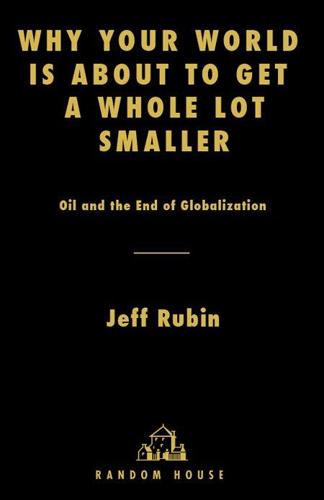
Why Your World Is About to Get a Whole Lot Smaller: Oil and the End of Globalization
by
Jeff Rubin
Published 19 May 2009
An interesting thumbnail of the distance traveled by items in a British supermarket appears in the Guardian (“Miles and Miles and Miles”: www.guardian.co.uk/lifeand-style/2003/may/10/foodanddrink.shopping6). p. 219 The transportation figures for Australia come from “Food Miles in Australia” (www.ceres.org.au/projects/CERES_Report_%20 Food_Miles_in_Australia_March08.pdf). p. 220: The account of grow-ops sprouting in abandoned suburbs comes from a February 7, 2009, story by Damien Cave in the New York Times (“In Florida, Despair and Foreclosures,” www.nytimes.com/2009/02/08/us/08lehigh.html). p. 223: The issue of energy dependency of agriculture has been explored in great depth in many books and articles.
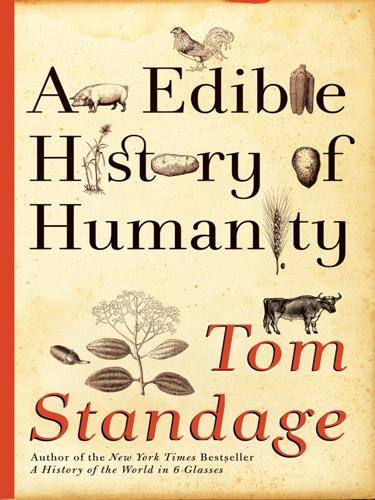
An Edible History of Humanity
by
Tom Standage
Published 30 Jun 2009
Pliny thought buying imported food was simply a waste of money, but modern-day local-food advocates (or “locavores”) generally make their case on environmental grounds: Shipping all that food around causes carbon dioxide emissions that contribute to climate change. This has given rise to the concept of “food miles”—the notion that the distance food is transported gives a reasonable measure of its environmental damage caused, and that one should therefore eat local food to minimize one’s impact. It sounds plausible enough, but the reality is rather more complex. For one thing, local products can sometimes have a greater environmental impact than those produced in other countries, simply because some countries are better suited than others for production of particular foods.
…
To argue that they should concentrate on growing staple foods for themselves, rather than more valuable crops for wealthy foreigners, is tantamount to denying them the opportunity of economic development. There is undoubtedly some scope for “relocalization” of the food supply, and if nothing else, the food-miles debate is making consumers and companies pay more attention to food’s environmental impact. But localism can be taken too far. Equating local food with virtuous food, today as in Roman times, is far too simplistic. The rich history of the spice trade reminds us that for centuries, people have appreciated exotic flavors from the other side of the world, and that meeting their needs brought into being a thriving network of commercial and cultural exchange.
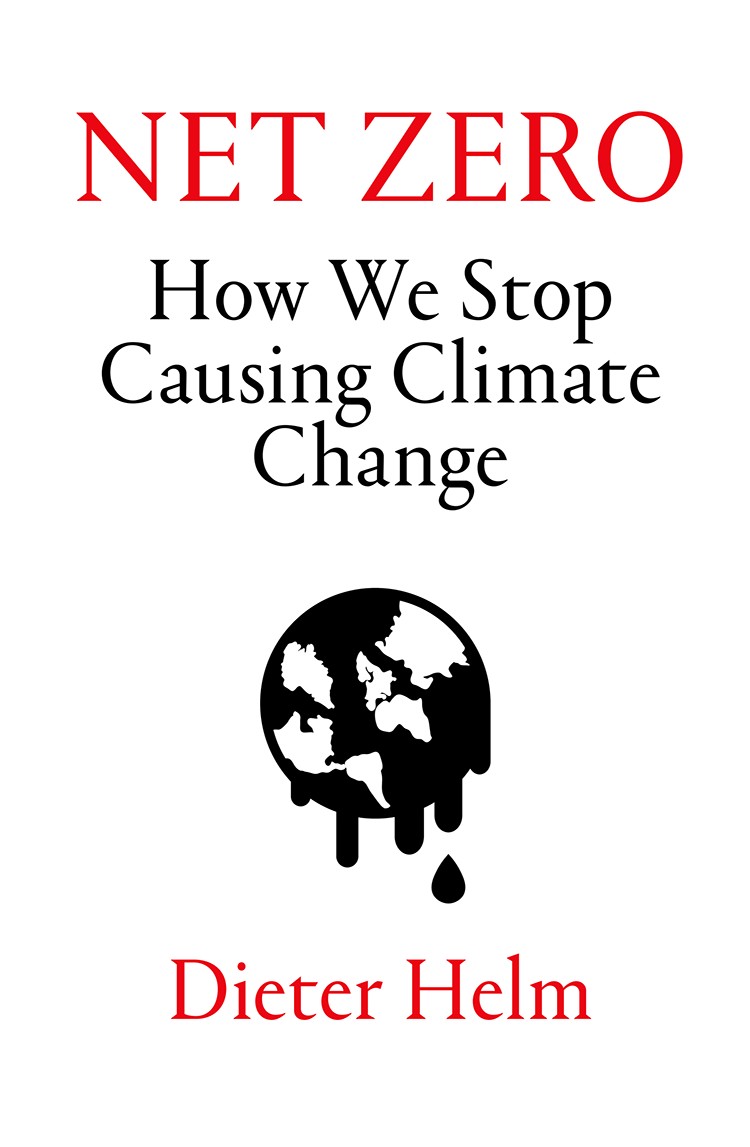
Net Zero: How We Stop Causing Climate Change
by
Dieter Helm
Published 2 Sep 2020
Think of the avocados, the palm oil in virtually everything, the olive oil, and the fresh beans and strawberries all year round. The modern food supply chain is immensely complex, and few products that you buy are entirely local; even when they are local, they are not necessarily lower-carbon than some imports. ‘Food miles’ is not simply a matter of measuring the distance a product has travelled. It would get quite a lot worse under a net zero unilateral carbon production target. Once a carbon price is applied to British agriculture, overseas producers will have another big advantage. This is equivalent to an import subsidy.
…
acid rain 25, 194 Africa xiv, xv, 2, 25, 30, 38, 44, 45, 47, 48, 51, 137, 229 agriculture 2, 6, 12, 13, 14, 23, 35–6, 43, 44–5, 70, 76, 86, 87–8, 95, 100, 102, 109, 116, 146–7, 149, 159, 163–80, 181, 183, 192, 197, 198, 206, 220 baseline, the 164–8 biodiversity loss and 2, 5, 100, 164, 165, 168, 169, 171, 172, 174, 180 biofuels and 197–8 carbon emissions and 2, 12, 13, 35–6, 76–7, 146–7, 163–80 carbon price and 167–70, 171, 172, 173, 180 China and 28–9, 35, 45, 180 economics of 76, 165, 166–7, 171, 174 electricity and 13, 166, 168, 174, 178, 180 fertiliser use see fertiliser lobby 14, 110, 164, 165, 169, 170, 197 methane emissions 23, 84, 177, 178, 179 net gain and 172–4 net value of UK 76, 166 new technologies/indoor farming 87–8, 174–9, 180, 213 peat bogs and 2, 179 pesticide use see pesticides petrochemicals and 166 polluter-pays principle and 76, 168–70, 172, 173 pollution 36, 86, 163, 165–6, 168–70, 172, 173, 177–8, 230 public goods, agricultural 170–4, 180 sequestering carbon and 12, 95, 163, 166, 168, 169, 170, 171, 172, 173–4, 177, 179, 180 soils and 2, 146, 163, 164, 165, 166, 168, 169, 171, 172, 175, 179 subsidies 14, 76, 102, 109, 116, 164, 165, 166, 167, 169, 170, 172, 180, 228 25 Year Plan and 179–80 Agriculture Bill (2018), UK 170 air conditioning 135–6, 224, 233 air quality xiii, 13, 25, 46, 52, 61, 70, 135, 153, 177, 180, 201, 216, 230, 232 air transport 3–4, 6, 11, 13, 22, 50, 53, 73, 87, 88, 92, 107, 125, 128, 129, 132, 133, 134, 149, 156–7, 186, 195, 201, 203–5 aluminium 7, 117 Amazon rainforest 2, 34, 35, 95, 145, 149–50, 151, 155, 229, 230 ammonia 35, 137, 191 anaerobic digesters 35, 165, 230 animal welfare 167, 177 antibiotics 93, 165, 174 Arctic 26, 46, 114, 178 artificial intelligence (AI) 32, 175, 220, 231 autonomous vehicles 13, 129, 132, 175, 189–90, 231 Balkans 137–8 Bank of England 121 batteries 6, 31, 131, 135, 141, 183, 184, 185–90, 191, 199, 204, 213, 214, 219, 220, 221, 225, 231 beef 5, 95, 116, 117, 167, 230 Berlin, Isaiah 104 big 5 polluter products 117–18, 120 bin Salman, Mohammad 27 biocrops 36 biodiversity xiv, 2, 5, 12, 13, 28, 35, 51, 76, 94, 100, 148, 149, 152, 153, 158, 159, 164, 165, 168, 169–70, 171, 172, 174, 180, 227, 233 bioenergy 31, 34–5, 36 biofuels 21, 35, 49, 50, 67, 70, 95, 135, 183, 184, 197–8, 210, 230 biomass 32, 34, 49, 50, 67, 69, 109, 146, 147, 151, 210, 217 bonds, government 220 BP 27, 149, 187, 199 Deepwater Horizon disaster, Gulf of Mexico (2010) 147 Brazil 2, 35, 38, 44–5, 47, 95, 145, 149–50, 155, 198 Brexit 42, 47, 56, 117, 165 British Gas 102, 139 British Steel x, 194 broadband networks 6, 11, 90, 92, 125, 126, 127–8, 130–1, 132–3, 135, 140–1, 199, 201, 202, 205, 211, 214, 231, 232 Brundtland Commission 45 BT 127–8, 141 Openreach 214 Burn Out (Helm) ix, xiv Bush, George W. 36, 48, 53, 103 business rates 76, 165 Canada 52, 191, 193 capitalist model 26, 42, 99, 227 carbon border tax/carbon border adjustment xii, 11, 13, 60, 80, 115–20, 194–6, 204 carbon capture and storage (CCS) xiv, 12, 75–6, 95, 109, 146, 147–8, 149, 154, 159, 203–4, 207, 209, 222, 223 Carbon Crunch, The (Helm) ix, xiv, 221 carbon diary 4–5, 8, 10, 11, 64–6, 83, 86, 116, 143, 144, 155, 156, 167, 180, 181, 185, 203, 205 carbon emissions: agriculture and see agriculture by country (2015) 30 during ice ages and warm periods for the past 800,000 years 21 economy and 81–159 electricity and see electricity global annual mean concentration of CO2 (ppm) 19 global average long-term concentration of CO2 (ppm) 20 measuring 43–6 since 1990 1–14, 17–37 transport and see individual method of transport 2020, position in 36–7 UN treaties and 38–57 unilateralism and 58–80 see also unilateralism carbon offsetting xiii–xiv, 4, 5, 12, 34, 45, 72, 74, 79, 94–6, 97, 105, 143–59, 192, 201, 203, 207, 214, 222, 223, 234 for companies 148–50 for countries 151–5 for individuals 155–7 markets 71–2, 110–13, 117, 144, 157–9, 208 travel and 156, 201–3 see also sequestration carbon permits 71–2, 79, 110–13, 117, 144, 208 carbon price/tax xii, xiii, xv, 8, 11, 12, 13, 26, 60, 61, 71, 72, 77, 79, 80, 84, 85–6, 102–3, 105, 106–24, 134, 143, 146, 147, 150, 151–4, 157, 159, 192, 197, 198, 199, 203, 227–30, 232, 234 agriculture and 167, 168, 169–70, 171, 173, 180 domain of the tax/carbon border adjustment xii, 11, 13, 60, 80, 115–20, 121, 124, 192, 194–6, 197, 204, 227 electric pollution and 216–18 ethics of 107–10 floor price 115, 117, 208 for imports 11, 13 prices or quantities/EU ETS versus carbon taxes 110–13 setting 113–15 transport and 192–9 what to do with the money 121–4 where to levy the tax 119–20 who fixes the price 120–1 carbon sinks 2, 5, 166, 169, 203 carboniferous age 34 cars 1, 3, 4, 7, 20, 22, 36, 44, 70, 73, 114, 129, 181, 182, 183, 184–5, 190, 191, 193, 196, 197, 198, 199 see also electric vehicles cartels 39, 40, 43, 45, 46, 47, 56 cattle farming 35, 36, 95, 150, 166, 167, 173, 177, 198 Central Electricity Generating Board (CEGB) 102, 139, 218 cement 6, 7, 26, 29, 34, 87, 117, 171 charging networks, electric vehicle 91, 129–30, 141–2, 184, 185–90, 199, 200, 202, 219 Chernobyl 78 China xi, xv, 1–2, 5, 8, 18, 42, 46, 47, 48, 64, 66, 74, 101, 180, 229 Belt and Road Initiative 28, 45 coal use 1–2, 8, 23–4, 24, 28, 31, 38, 117, 154, 206, 208 Communist Party 2, 27, 42, 46 demand for fossil fuels/carbon emissions 1–2, 8, 18, 20, 22, 23–4, 24, 25, 27–31, 36, 38, 51, 73, 117, 154, 206, 208 export market x–xi, 5, 9, 64, 66, 117, 155, 194 fertiliser use 35 GDP xv, 27, 29 nationalism and 42 petrochemical demand 22 renewables companies 9, 32, 73, 74, 77, 79 Tiananmen Square 42 unilateralism and 58, 59 UN treaties and 46, 47, 48, 53, 54, 55, 58, 59 US trade war 56, 118 Churchill, Winston 183 citizen assemblies 99–101 climate change: carbon emissions and see carbon emissions 1.5° target 38, 57 2° target 1, 10, 22–3, 28, 30, 38, 39, 45, 47, 54, 55, 57, 108, 122, 155, 206 see also individual area of climate change Climate Change Act (2008) 66, 74–7 Clinton, Bill 40, 48 Club of Rome 98 coal 1–2, 5, 8, 13, 20, 23–5, 28, 29, 30, 31, 32, 34, 36, 38, 50, 52, 53, 60–1, 67, 72, 77, 78–9, 101, 109, 112, 116, 117, 119, 134, 136, 145, 147, 148, 151, 154, 155, 182, 183, 194, 196, 206–9, 210, 212, 214, 216, 217, 218, 229, 230 coastal marshes 146, 159 colonialism 45 Committee on Climate Change (CCC), UK x–xi, 7, 74–5, 120, 164, 166, 169, 217, 235 ‘Net Zero: The UK’s Contribution to Stopping Global Warming’ report x–xi conference/video calls 6, 129, 156, 202, 205 Conference of the Parties (COP) xii, 10, 48, 50, 53–4, 55, 59, 205 congestion charges 198 Copenhagen Accord 48, 53–4, 59 Coronavirus see Covid-19 cost-benefit analysis (CBA) 71, 108, 110, 114, 138 cost of living 116 Covid-19 x, xi–xii, 1, 3, 6, 9, 18, 19, 22, 25, 27, 30, 37, 44, 46, 50, 57, 65, 69, 80, 89, 93, 129, 135, 148, 171, 201, 202, 204, 232 CRISPR 176 crop yields 172, 177 dams 2, 36, 52–3, 179 DDT (Dichlorodiphenyltrichloroethane) 100 deforestation 2, 5, 34, 35, 36, 38, 43, 44, 47, 55, 87, 95, 145, 146, 149–50, 155, 172–3, 179, 197–8, 229 Defra (Department for Environment, Food and Rural Affairs) 170 deindustrialisation x, 29, 46, 52, 54, 59, 72–4, 218 Deng Xiaoping 27 Denmark 69–70, 136–7 desalination 135–6, 179 diesel 4, 20–1, 70, 76, 86, 109, 119, 121, 129, 132, 164, 165, 166, 174, 175, 178, 179, 181, 182, 185, 186, 191, 192, 196–7, 208, 217, 230 ‘dieselgate’ scandal 196–7 digitalisation 1, 8, 11, 13, 33, 92, 117, 136, 174, 175, 180, 206, 211, 215, 221, 228–9, 231 DONG 69 Drax 147, 151, 154, 218 economy, net zero 10–12, 81–159 delivering a 96–103 intergenerational equity and 96–7 markets and 103–5 net environmental gain see net environmental gain political ideologies and 98–101 polluter-pays principle see polluter-pays principle public goods, provision of see public goods, provision of technological change and 98 EDF 139, 218 Ehrlich, Paul 98 electricity 1–2, 4, 6, 11, 12, 13, 23, 31, 32, 49, 53, 61, 65, 66, 68, 70, 73, 77, 78, 79, 91, 92, 101, 102, 109, 117, 125, 127, 128, 129–30, 131–2, 134, 135, 136, 137, 139, 140, 141, 149, 158, 166, 168, 174, 178, 180, 182, 183, 228, 229, 231, 232, 234, 235 coal, getting out of 206–7 electric pollution and the carbon price 216–18 electric vehicles 4, 6, 13, 20, 23, 49, 61, 91, 92, 94, 121, 125, 128, 129–30, 131–2, 134, 141, 183–92, 193, 194, 197, 200, 201, 202, 206, 219, 228 equivalent firm power auctions and system operators 210–16 future of 206–25 gas, how to get out of 207–9 infrastructure, electric 185–90, 218–20 low-carbon options post-coal and gas 209–10 net gain and our consumption 222–5 R&D and next-generation renewables 220–2 renewable see renewables Energy Market Reform (EMR) 219 equivalent firm power (EFP) 212–16, 217, 220 ethanol 35, 71, 95, 197 eucalyptus trees xiv, 152 European Commission 60, 71, 72, 112 European Union (EU) xiv, 2, 7, 8, 9, 37, 42, 44, 46, 47, 117, 137, 165, 166, 197; baseline of 1990 and 51–2 Common Agricultural Policy (CAP) 76, 165 competition regime and customs union 56 deindustrialisation and 46, 52, 54, 59, 72–4 directives for 2030 66 Emissions Trading System (EU ETS) 71–2, 73, 79, 110–13, 117, 144, 208 importing carbon emissions 59 Internal Energy Market (IEM) 68, 71 Kyoto and 9, 51, 59, 66–7 Mercosur Agreement 44, 95 net zero target for 2050 66, 115, 143, 155, 167, 180 Paris and 54 Renewable Energy Directive 68–71, 73, 109 2020 targets signed into law 66 2020–20–20 targets 67, 69, 74 unilateralism and 59, 66–71, 80 Eurostar 133 externalities 104, 170, 180, 196 Extinction Rebellion 6 farmers 14, 26, 35, 36, 43, 71, 76, 86, 95, 102, 109, 110, 146–7, 164, 165, 166, 169, 170, 174, 175, 196, 197, 198 fertiliser 4, 6, 7, 26, 29, 35, 61, 73, 86, 87, 116, 117, 119, 163, 165, 169, 174, 175, 178, 179, 191, 194, 197 fibre/broadband networks 6, 11, 90, 92, 125, 126, 127–8, 130–1, 132–3, 135, 140–1, 201, 202, 205, 211, 214, 231, 232 financial crisis (2007/8) 1, 19, 69 first-mover advantage 75 First Utility 199 flooding 13, 77, 149, 152, 153, 159, 170, 233 food miles 167 food security 170–1 food waste 178, 180, 231 Forestry Commission xiv Formula One 186, 196 fossil fuels, golden age of 20–5 see also individual fossil fuel France 46, 47, 52, 56, 73, 78, 101, 113, 130, 136, 138 free-rider problem 39–40, 43, 62–4, 106, 119 fuel duty 121, 195–6 fuel efficiency 197 fuel prices 26, 112–13, 209 fuel use declaration 195 Fukushima Daiichi nuclear disaster (2011) 52, 78 Fukuyama, Francis: The End of History and the Last Man 40–1 gardens 6, 43, 143, 156 gas, natural ix, 2, 5, 8, 20, 23, 24, 25, 26, 29, 31, 32, 36, 50, 52, 68, 69, 79, 102, 109, 117, 119, 129, 136, 137, 146, 147–8, 149, 183, 190, 193, 194, 207–9, 210, 211, 214, 216–17 G8 47 gene editing 172, 176, 231 general election (2019) 121 genetics 98, 172, 174–6, 231 geoengineering 177 geothermal power 137, 178 Germany 9, 30, 47, 52, 59, 60, 62, 66, 67, 69, 70, 71, 72, 73, 75, 77–80, 83, 91, 101, 112, 136, 137, 138, 144, 206, 208, 209 Energiewende (planned transition to a low-carbon, nuclear-free economy) 59, 69, 77–80, 112, 144, 208 Gilets Jaunes 101, 113 GMOs (genetically modified organisms) 176, 177 Great Northern Forest, Britain 151 Green and Prosperous Land (Helm) xiii, xiv, 165, 169, 234 greenbelt 173 greenhouse effect 17 green new deal 90, 102, 234 green parties/green votes 69, 77, 78 green QE (quantitative easing) 102–3 green walls 153, 231 greenwash 156 gross domestic product (GDP) xii, xv, 1, 25, 27, 29, 41, 57, 59, 73, 76, 83, 93, 98, 103, 133, 165, 207, 227, 229, 233 growth nodes 133 G7 47 G20 47 Haber-Bosch process 35, 163 Hamilton, Lewis 186 ‘hands-free’ fields 175 Harry, Prince 6 Heathrow 133, 134 hedgerow 76, 166, 167, 172 Helm Review (‘The Cost of Energy Review’) (2017) ix, 120, 141, 200, 210, 212, 215, 217, 220, 238 herbicide 163 home insulation 102 House of Lords 170 housing 101, 223–4 HS2 92, 125, 132–4, 138, 202 Hume, David 49 hydrogen 13, 49, 92, 125, 128, 135, 137, 183, 184, 190–2, 199, 200, 204, 206, 213, 228 hydro power 31, 35, 36, 50, 52–3, 70, 136, 137, 191 Iceland 137, 178 imports x–xi, xiii, 5, 8, 10, 11, 12, 13, 62, 68, 70, 117–18, 155, 167, 178, 173, 180, 196, 227 income effect 72, 111 income tax 121, 122, 232 India xiv, xv, 25, 30, 31, 38, 43, 44, 47, 48, 51, 54, 55, 57, 154, 229 individuals, net zero for 155–7 Indonesia 2, 35 indoor farming 87–8, 177–8, 180, 213 indoor pollutants 223, 232 Industrial Revolution 1, 18, 19, 25, 47, 116, 145 INEOS Grangemouth petrochemical plant xi information and communications technology (ICT) 117, 202, 231 infrastructures, low-carbon xiii, xiv, 11–12, 14, 28, 60, 62, 65, 66, 90, 91–4, 96, 105, 109, 123, 125–42, 143, 147, 151, 154, 159, 171, 184, 186, 187, 190, 199–200, 214, 218–20, 228, 230, 231–2, 234–5 centrality of infrastructure networks 128–30 electric 125–41, 218–20 making it happen 141–2 net zero national infrastructure plan 130–6 private markets and 125–8, 141–2 regional and global infrastructure plan 136–7 state intervention and 126, 127–8, 141–2 system operators and implementing the plans 138–41 inheritance tax 76, 165 insects 164, 177, 231 insulation 102, 224 Integrated Assessment Models 114 intellectual property (IP) 75 Intergovernmental Panel on Climate Change (IPCC) 17–18, 47, 55, 57, 108, 172 internal combustion engine 13, 22, 181–2, 183, 184, 200, 221, 228 Internal Energy Market (IEM) 68, 71, 138 International Energy Agency (IEA) 25, 207 International Monetary Fund (IMF) 51 internet banking 131, 213 internet-of-things 128, 175 Iran 27, 42, 113, 137 Iraq 56, 192 Ireland 43, 157 Italy 137, 182 Japan 27, 28, 30, 52, 73, 78, 101, 185 Jevons Paradox 224 Johnson, Boris 89–90 Kant, Immanuel 104 Keynes, John Maynard 89, 102, 103, 105 Kyoto Protocol (1997) xii, 2, 7, 9, 13, 17–18, 37, 38, 39, 40–1, 47–8, 49, 51, 52–3, 59, 66–7, 119 laissez-faire 104, 138, 188 land use 35, 61, 95, 172, 237 LED (light-emitting diode) lighting 87, 178, 179, 180, 213 liquefied natural gas (LNG) 136, 183 lithium-ion battery 185 lobbying 10, 14, 33, 69, 71, 109, 110, 111–12, 115, 121, 157, 169, 170, 187, 197, 209, 223, 227, 228 location-specific taxes 194 maize 35, 165, 197 Malaysia 2, 229 Malthus, Thomas 98 Mao, Chairman 27, 42 meat xi, 65, 164, 177, 180, 232 Mekong River 2, 28, 179, 229 Mercosur Agreement 44, 95 Merkel, Angela 78 methane 4, 23, 84, 177, 178, 179, 216 microplastics 22 miracle solution 49–50, 55, 209 mobile phone 5, 125, 185 National Farmers’ Union (NFU) 110, 164, 165, 169, 170, 171 National Grid 139, 141, 189, 200, 211, 214, 219 nationalisations 101–2, 126–7 nationalism 41, 43, 55, 56, 138 nationally determined contributions (NDCs) 54–5 natural capital xiii, 14, 33–6, 51, 85, 86, 88, 90, 94, 97, 154, 158, 168, 171, 173–4, 236 Nature Fund 123, 169, 234 net environmental gain principle xiii, xiv, 10, 12, 62, 84, 94–6, 105, 143–59, 169, 172–4, 192, 201–3, 222–5 agriculture and 169, 172–4 carbon offsetting and see carbon offsetting electricity and 222–5 principle of 94–6, 143–4 sequestration and see sequestration transport and 192, 201–3 Netherlands 138 Network Rail 214 net zero agriculture and see agriculture defined x–xv, 3–14 economy 10–12, 81–159 see also economy, net zero electricity and see electricity transport and see individual method of transport 2025 or 2030 target 89 2050 target x, xi, 5, 59, 66, 74, 75, 115, 120, 135, 143, 155, 167, 169, 180, 184, 216, 217, 222, 226, 230, 231, 232 unilateralism and see unilateralism NHS 65 non-excludable 91, 93, 126, 170 non-rivalry 91, 93, 126, 170 North Korea 42 North Sea oil/gas 9, 40, 75, 97, 102, 137, 139, 147, 148, 193 Norway 130, 137, 191 nuclear power 5, 9, 12, 18, 23, 52, 60, 73, 77–9, 109, 125, 128, 129, 136, 140, 178, 194, 199, 206, 207, 208, 209–10, 212, 214, 216, 218, 219, 222, 228 Obama, Barack 48, 53, 54, 59 oceans 2, 14, 22, 33, 85, 86, 88, 148, 163, 231 offsetting see carbon offsetting offshore wind power 31, 69, 75–6, 208, 212, 219, 221 Ofgem 220 oil ix, 2, 20, 22–3, 25, 26, 27, 31, 32, 33, 36, 39, 40, 50, 67, 69, 86, 97, 117, 119, 129, 136, 137, 146, 147, 148–9, 150–1, 152, 181–3, 184, 185, 187, 189, 190, 192–4, 196, 197, 199, 206, 209, 210, 216–17, 229 OPEC 39, 40, 193 Orbán, Viktor 41, 42 organic food 61, 87, 178 Ørsted 70 palm oil 2, 5, 6, 35, 36, 66, 71, 167, 173, 197–8, 230 pandemic see Covid-19 Paris Climate Change Agreement (2015) xii, 2, 10, 13, 18, 30, 37, 38, 39, 48, 49, 54–5, 56, 57, 58, 66, 80, 105, 106, 118, 119, 227 peat bogs xiv, 2, 13, 14, 33, 35, 36, 43, 109, 146, 169, 179 pesticides 4, 26, 61, 163, 165, 169, 174, 178, 231 petrochemicals xi, 7, 8, 20, 22–3, 29, 73, 80, 86, 117, 166, 182 petrol 4, 86, 119, 121, 129, 185, 186, 187, 191, 192, 199 photosynthesis 34, 197 plastics 1, 22, 28, 35, 43, 66, 86, 87, 119, 143, 166, 184, 231 polluter-pays principle xiii, xv, 84–90 agriculture and 76, 168–70, 172, 173 carbon price and see carbon price/tax generalised across all sources of pollution 86 identifying polluters that should pay 86 importance of 10–11, 13, 61, 62, 65 intergenerational balance and 96–7 net environmental gain and 94 sequestration and see sequestration, carbon sustainable economy and 96–7, 105, 106 transport and 192–5, 198–9 see also individual type of pollution population growth 93, 97, 177, 178, 179, 232 privatisation 127, 140, 218–19, 220 property developers 94 public goods, provision of xiii, 10, 11–12, 62, 75, 84, 90–4, 96, 104, 105, 109, 122, 123, 126, 128, 141, 147, 151, 153, 159, 164, 168, 173–4, 180, 192, 199–200, 202, 218, 229, 230 agricultural 170–4, 180 low-carbon infrastructures see infrastructures, low-carbon research and development (R&D) see research and development (R&D) Putin, Vladimir 27, 41, 42, 89 railways 11, 13, 13, 87, 91, 92, 94, 125, 128, 129, 130, 131, 132–3, 138, 139, 156, 182, 183, 187, 202, 212, 214, 232 rainforest 2, 5, 34, 35, 36, 38, 44, 47, 55, 87, 95, 145, 149, 155, 173, 179–80, 197, 229 rationalism 40–1 Reagan, Ronald 103 red diesel 76, 109, 164, 165, 196 regulated asset base (RAB) 127, 141, 215, 220 remote working 128, 156, 201–2, 205 renewables ix, 6, 8, 9–10, 18, 19, 21, 26, 31–5, 36, 49, 50, 55, 61, 67, 72, 77, 79, 85, 86, 109, 110, 112, 123, 125, 128, 131, 135, 138, 140, 144, 149, 178, 188, 191, 194, 197, 199, 207, 209–10, 211, 212, 213, 214, 215, 216, 217, 219, 220–2, 224, 228 Chinese domination of market 9, 32, 73, 74, 77, 79 cost-competitiveness of 9–10, 49, 51, 61, 68 failure of, 1990-now 19, 31–3, 36 modern global renewable energy consumption measured in TWh per year 32 miracle solution and 49–51 Renewable Energy Directive 68–71, 73, 109 subsidies ix, 9, 10, 50, 68–9, 71, 79, 80 see also individual renewable energy source Renewables UK 110 research and development (R&D) xiv, 12, 13, 14, 62, 65, 66, 90, 93–4, 104, 109, 123, 165, 172, 192, 200, 218, 220–2, 223, 228, 234 reshoring businesses 8, 204 rivers 2, 22, 28, 86, 128, 152, 165, 169, 179, 214, 230 roads 11, 28, 45, 91, 92, 125, 129, 131–2, 140, 165, 182, 189, 194, 198, 202, 232 robotics 32, 175, 204, 206, 231 Rosneft 26 Royal Navy 183 Russia 26, 27, 30, 40, 42, 44, 45, 46, 47, 48, 50, 52, 55, 56, 192, 193 RWE 139, 218 Ryanair 156–7 rye grass 35 salmon 169, 177 Saudi Arabia 26, 33, 40, 42, 50, 137, 192, 193 Saudi Aramco 26, 50 seashells 34 sequestration, carbon xi, xiv, 12, 61, 66, 85, 90, 95, 143–59, 228, 229, 231, 232 agriculture and 12, 163, 166, 168, 169, 170, 171, 172, 173, 176–7, 179, 180 baseline definition and 146–7 biofuels and 35, 146, 217 carbon capture and storage (CCS) xiv, 12, 75–6, 95, 109, 146, 147–8, 149, 154, 159, 203–4, 207, 209, 222, 223 companies, net zero for 148–51 countries, offsetting for 151–5 electricity and 222, 223 gas and 207 individuals, net zero for xi, xiv, 155–7 markets, offsetting 157–9 natural capital destruction and 2, 19, 33–6, 44, 45, 51 natural sequestration xi, xiii, 2, 7, 12, 14, 33–6, 37, 45, 52, 66, 85, 90, 94–6, 105, 143–59, 163, 168, 171, 173, 176–7, 179, 180, 203, 206, 207, 222, 223 net gain principle and 143–4, 146, 149–50 offsetting principle and 143–5 peat bogs and see peat bogs principle of xi, xiii, 2, 7, 12–13 soils and see soils transport and 185, 190, 203 tree planting and see trees, planting/sequestration and types of 145–8 wetlands/coastal marshes and 146, 159, 233 shale gas 8, 208 Shell 27, 149, 199 shipping 8, 13, 22, 28, 36, 49, 114, 125, 137, 181, 182–3, 191, 194–5, 203–5, 217 Siberia 2, 46 smart appliances 128, 129, 132 smart charging 11, 13, 128, 129, 130, 139, 214, 219 soils xiii, 2, 5, 7, 12, 14, 33, 35, 36, 43, 55, 76, 109, 146, 149, 152, 156, 159, 163, 164, 165, 166, 168, 169, 171, 172, 175, 179, 203, 228 solar panels/solar photovoltaics (PV) 5, 6, 9, 12, 13, 21, 31, 32, 33, 49, 53, 68, 69, 71, 74, 79, 87, 91, 135, 136, 137, 178, 179, 188, 204, 207, 208, 209, 210, 211, 213, 214, 216, 217, 221, 222, 223, 224–5 Sony 185 Soviet Union 18, 40, 52, 67–8, 89 soya 95 Spain 69, 130, 137 sport utility vehicles (SUVs) 106, 121, 192 spruce xiv, 152, 170 standard of living xv, 1, 5, 8, 10, 11, 14, 229, 233 staycations 201 steel x–xi, 6, 7, 8, 26, 28, 29, 53, 66, 73, 80, 87, 116, 117, 118, 119, 171, 184, 194–5 Stern, Nicholas: The Economics of Climate Change 41, 63 subsidies ix, 9, 10, 14, 32, 50, 51, 52, 53, 69, 71, 76, 79, 80, 89, 102, 109, 110, 113, 116, 123, 140, 154, 164, 165, 166, 167, 169, 170, 172, 180, 193, 196, 198, 209, 215, 221, 222, 228, 230 sugar cane 35, 71, 95, 197, 198 sulphur pollution 22, 25, 28, 78, 191, 194, 197, 230 sustainable economic growth xv, 10, 12, 14, 61, 83, 92, 94, 97, 98, 105, 227, 233 Taiwan 42 taxation xii, 11, 62, 71, 72, 76, 80, 87, 89, 90, 91, 92, 97, 101, 102, 103, 106–24, 126, 127, 130, 133, 147, 150, 151–2, 153–4, 157, 159, 165, 169, 170, 192–6, 197, 198, 199, 203, 232, 234 technological change 98, 127, 141, 174–5, 221 Thatcher, Margaret 17 Thompson, Emma 6 3D printing 175, 204 Thunberg, Greta 6, 205 tidal shocks 159 top-down treaty frameworks 13, 38–57, 80, 110, 119 tourism/holidays 6, 22, 36, 88, 94, 107, 114, 128, 156, 201, 204–5 transport, reinventing 181–205 aviation 195, 201, 203–5 see also air transport batteries and charging networks 185–90 biofuels 196–8 electric alternative 183–5 hydrogen and fuel cells 190–2 innovation, R&D and new infrastructures 199–200 internal combustion engine 181–2 net gain and offsets (reducing travel versus buying out your pollution) 201–3 oil 183–4 polluter pays/carbon tax 192–6 shipping 203–5 urban regulation and planning 198–9 vehicle standards 196–8 see also individual type of transport Treasury, UK 120–2 trees, planting/sequestration and xi, xiii, xiv, 2, 7, 13, 14, 33, 34, 45, 76, 85, 94–6, 146, 148, 149–51, 152–3, 155, 156, 157, 158, 159, 168, 169, 172, 179, 203, 231 trophy project syndrome 133 Trump, Donald 2, 8, 41, 42, 48, 89, 99, 103, 121 25 Year Environment Plan xiii, 153, 170, 179–80 UK 47, 69 agriculture and 164, 166, 167, 173 carbon emissions (2015) 30 carbon price and 115, 120 Climate Change Act (2008) 66, 74–7 coal, phasing out of 24–5, 60–1, 77, 208 Committee on Climate Change (CCC) x–xi, 7, 74–6, 120, 164, 166, 169, 217, 235 deindustrialisation and 72–4 80 per cent carbon reduction target by 2050 74 electricity and 206, 208, 218, 219, 224 Helm Review (‘The Cost of Energy Review’) (2017) ix, 120, 141, 200, 210, 212, 215, 217, 220, 238 infrastructure 125, 132–3, 134, 137, 139–40 net zero passed into law (2019) 66 sequestration and 145, 150, 153, 154, 155, 156 transport and 195–6, 197, 198 unilateralism and 58–9, 60–1, 65, 66, 69, 72–7, 80 unilateralism xi, 8, 10, 11, 25, 58–80, 83, 105, 106, 119, 125, 143, 144, 155, 164, 167, 197, 203, 227 in Europe 66–80 incentive problem and 58–60 morality and 62–6 no regrets exemplars and/showcase examples of how decarbonisation can be achieved 60–2 place for 80 way forward and 80, 83 United Nations xi, xii, 6, 10, 17, 37, 38, 118 carbon cartel, ambition to create a 39–40, 43, 45, 46–7, 56 climate treaty processes xi, 6, 10, 13, 17–18, 36, 37, 38–57, 59, 80, 110, 118, 119, 204–5 see also individual treaty name Framework Convention on Climate Change (UNFCCC) 17–18, 36, 38, 59 miracle solution and 50–1 origins and philosophy of 41 Security Council 46, 47, 57 United States 8, 74, 139, 206 agriculture in 175, 176, 197 carbon emissions 8, 29, 30 China and 27–8, 42, 118 coal and 2, 24, 28, 29, 208 economic imperialism 45 energy independence 50 gas and 8, 20, 23, 24, 29, 50, 208 oil production 40, 50, 193 pollution since 1990 29 unilateralism and 58, 59, 74 UN climate treaty process and 38, 40–1, 44, 45, 46, 47, 48, 53, 54, 56 universal service obligations (USOs) 92, 126, 131, 202 utilitarianism 41, 63–4, 108, 110 VAT 117, 119–20, 121, 122, 232 Vesta 69 Volkswagen 196–7 water companies 76, 214, 230 water pollution/quality xiv, 12, 22, 61, 76, 152, 153, 165, 169, 170, 171, 172, 175, 177, 178, 179, 180, 232 Wen Jiabao 53, 59 wetlands 159, 233 wildflower meadow 164, 184 wind power 5, 9, 12, 21, 31, 32, 33, 49, 53, 68, 69–70, 71, 74, 75, 76, 78, 79, 91, 135, 136, 137, 138, 139, 178, 188, 191, 207, 208, 209, 210, 211, 212, 213, 214–15, 216, 217, 219, 221, 222 wood pellets 67, 217, 230 Woodland Trust 156, 158 World Bank 51 World Trade Organization (WTO) 52, 56, 118 World War I 183 World War II (1939–45) 78, 90, 92, 101, 106, 171 Xi Jinping 27, 41, 42 ACKNOWLEDGEMENTS So much is now discussed, written and published about climate change that it is impossible to keep track of all the ideas and conversations that have influenced my understanding of the subject.

Grow Green: Tips and Advice for Gardening With Intention
by
Jen Chillingsworth
Published 31 Mar 2021
Encourage hedgehogs to visit the garden by offering some food and a shallow dish of water (don’t put out a saucer of milk as this can make them ill). Specialist hedgehog food can be purchased at pet stores or garden centres. The edible garden * * * There are so many positive reasons for growing your own food: less food miles, no synthetic pesticides and herbicides are used, and biodiversity is increased. But by far the best thing about growing your own food is how good it tastes. First think about what you like to eat and how much spare time you have to work on a vegetable garden or the size of plot you have. Newcomers to vegetable growing often plant too many crops, resulting in an overcrowded and unproductive plot.
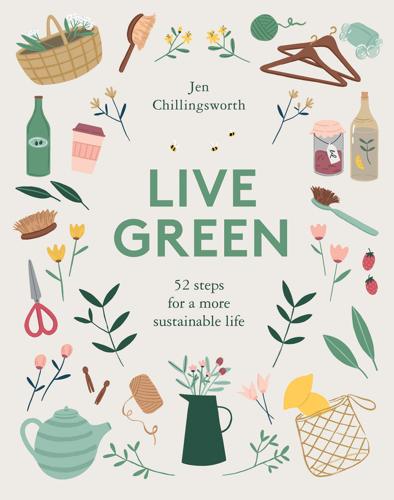
Live Green: 52 Steps for a More Sustainable Life
by
Jen Chillingsworth
Published 19 Feb 2019
‘Pick your own’ is also a great way to support local growers and stock up on summer produce, too. Why shop local? * * * IT’S BETTER FOR THE ENVIRONMENT Buying fresh food from a local grower or farmer helps to reduce your carbon footprint substantially as there is no need for any transportation, food miles or refrigeration. Talk to the farmer or grower about their methods or use of pesticides – most will be happy to answer your questions. Many farmers or growers also offer a home delivery service, cutting down the need for more vehicles on the road too. IT HELPS THE LOCAL ECONOMY Businesses stay open, grow, employ local people and pass on traditional skills.

Corduroy Mansions
by
Alexander McCall Smith
Published 1 Jan 2009
It would be a perfect solution—not only more convenient and entertaining, but cheaper too. “I think perhaps we should ask them where they get their scallops from,” Barbara said. Oedipus waved a hand in the air. “The fishmonger, I expect.” He looked at her. “You’re not turning into one of these people who bang on about food miles, are you?” Barbara frowned. “I don’t bang on about anything, Oedipus. But there is some point to the food miles argument. Doesn’t it strike you as odd that the fresh beans in our local supermarket should come from East Africa?” “Not really,” he said. “Farmers there have to sell their produce. And if we didn’t buy it, then we’d be taking the food out of their mouths rather than putting it into ours.
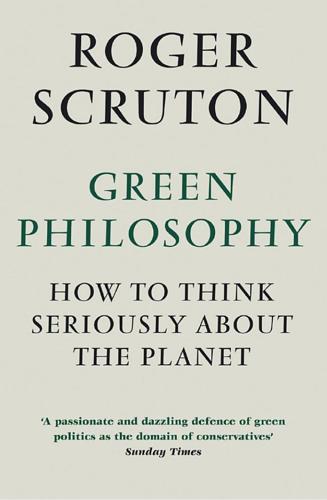
Green Philosophy: How to Think Seriously About the Planet
by
Roger Scruton
Published 30 Apr 2014
Maitland, Equity, Cambridge, 1909. 324 Thus the RSPB finds itself in conflict today with another private association, the Countryside Alliance, which represents sporting interests, the RSPB seeking to protect birds of prey like the hen harrier, the CA wishing to protect the game birds (notably grouse) on which they feed. 325 Ruskin, op. cit. 326 Rackham, op. cit. 327 See Antony Davies and Pavel Yakolev, ‘Myths and Realities Surrounding the Estate Tax’, on the American Family Business Association website. 328 See Keith Thomas, op. cit., p. 206. 329 Rackham, op. cit. 330 Oliver Marriott, Property Boom, New York, 1989. See Simon Jenkins, ‘Urban Landscape’, in Jennifer Jenkins, op. cit., pp. 110–11, in which he documents the effect of socialist-style planning at the local level, and the massive revenge taken on our historic settlements. 331 Jules Pretty et al., ‘Farm Costs and Food Miles’, Food Policy, 30.1, February 2005, pp. 1–19. 332 Berry, The Unsettling of America. 333 Tony Curzon Price, ‘How Beauty Can Survive’, in Barnett and Scruton, eds., op. cit. 334 Paul Hirst, ‘Can Rutland learn from Jutland?’, in Barnett and Scruton, eds., op. cit. 335 Sagoff, op. cit., ch. 9. 336 See, for example, David Brower, Wilderness: America’s Living Heritage, San Francisco, 1961.
…
Beck, 2010 Pigou, Arthur C., The Economics of Welfare, London, Macmillan, 1920. Pollitt, Hector, and Thoung, Chris, ‘Modelling a UK 80% Greenhouse Gas Emissions Reduction by 2050’, New Scientist, 3 December 2009. Ponte, Lowell, The Cooling, Englewood Cliffs, NJ, Prentice-Hall, 1976. Pretty, Jules, Ball, A. S., Lang, T., and Morison, J. I. L., ‘Farm Costs and Food Miles: An Assessment of the Full Cost of the UK Weekly Food Basket’, Food Policy, 30.1, February 2005, pp. 1–19. Pride of Derby and Derbyshire Angling Association and Earl of Harrington v. British Celanese Ltd., the Derby Corporation and the British Electricity Authority, [1952] 1 All ER 179. Priest, George L., ‘The Invention of Enterprise Liability: A Critical History of the Intellectual Foundations of Modern Tort Law’, Journal of Legal Studies, 14.3, December 1985, pp. 461–528.
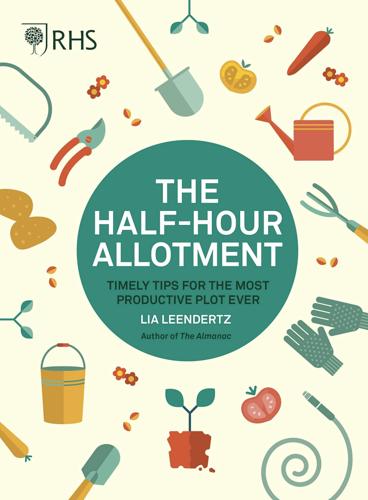
RHS Half Hour Allotment: Timely Tips for the Most Productive Plot Ever
by
Royal Horticultural Society
and
Lia Leendertz
Published 5 Aug 2019
Some of us realize that the varieties that supermarkets encourage farmers to grow are chosen more often for their ability to withstand the extreme conditions of packing and transporting procedures than they are for taste, and we want to be reminded what real tomatoes and strawberries taste like. Allotments seem a perfect solution to all these worries. The only food miles involved are as often as not those travelled on the back of a bicycle. But often things go wrong. You may know the story: you get your plot and set about it with gusto. After a few weekends of exhaustion and backache friends start leaving messages wondering what has happened to you, and it suddenly occurs to you that you have been neglecting a few things around the house – and so you miss a week, and then another.
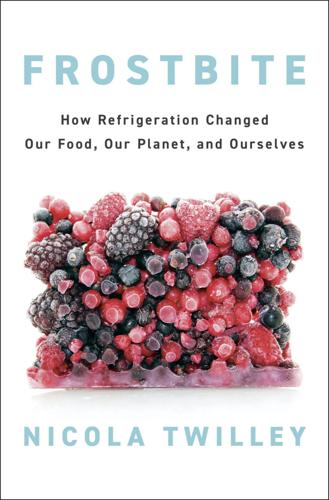
Frostbite: How Refrigeration Changed Our Food, Our Planet, and Ourselves
by
Nicola Twilley
Published 24 Jun 2024
Jahi Chappell et al., “Food Sovereignty: An Alternative Paradigm for Poverty Reduction and Biodiversity Conservation in Latin America,” F1000 Research 2 (November 2013); Peter Williams and Warwick E. Murray, “Behind the ‘Miracle’: Non-traditional Agro-Exports and Water Stress in Marginalised Areas of Ica, Peru,” Bulletin of Latin American Research (2018); Ayesha Tandon, “ ‘Food Miles’ Have Larger Climate Impact Than Thought, Study Suggests,” CarbonBrief, June 20, 2022; Molly Leavens, “Do Food Miles Really Matter?” Harvard University Sustainability, March 7, 2017; Seung Hee Lee et al., “Adults Meeting Fruit and Vegetable Intake Recommendations—United States, 2019,” MMWR 71 (2022): 1–9; and US Food Imports data set, Economic Research Service, USDA.
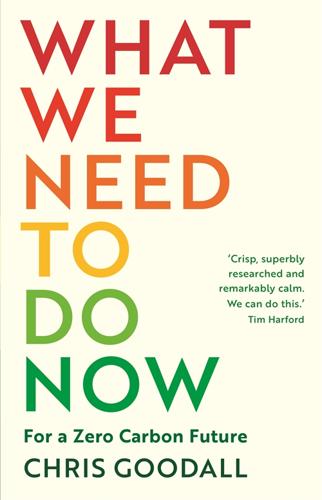
What We Need to Do Now: A Green Deal to Ensure a Habitable Earth
by
Chris Goodall
Published 30 Jan 2020
This helps retain carbon. Of course, nature is not fully restored, even on the most carefully cultivated of organic farms, but the soil is not being continuously degraded and the run-off from fertiliser is far less likely to cause pollution damage to local watercourses. EATING SEASONALLY OR LOCALLY Food miles matter. However, shipping a product by truck into the UK from Spain probably only adds a few per cent to its carbon footprint. In fact, many studies have shown that locally grown food can be associated with higher emissions if the crop needs to be kept warm in a greenhouse in winter or requires heavy fertilisation compared to the imported alternatives.
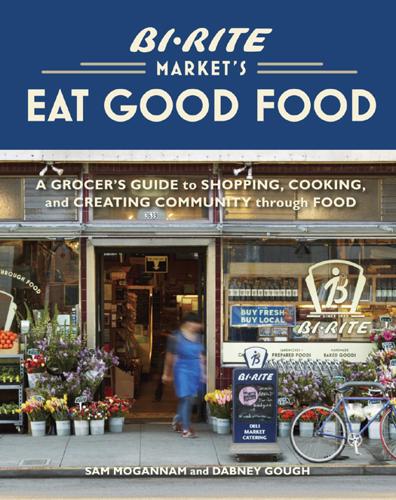
Bi-Rite Market's Eat Good Food: A Grocer's Guide to Shopping, Cooking & Creating Community Through Food
by
Sam Mogannam
and
Dabney Gough
Published 17 Oct 2011
Keep in mind that looks can be deceiving; ugly fruits and vegetables sometimes taste better than ones that look “perfect.” Of course, avoid items that are wrinkled, discolored, or otherwise beyond edibility. LET THE SEASONS INSPIRE AND GUIDE YOU. Buying fruits and vegetables that are abundant and in season usually means riper and more flavorful products, lower prices, and (often) fewer “food miles” due to shipping. ORGANIC PRODUCE IS GENERALLY PREFERABLE OVER CONVENTIONAL (NONORGANIC). It’s better for the environment, the people who grow and harvest it, and our own health, and it’s also the best and easiest way to avoid GMOs. (By definition, organic food is GMO-free.) However, if you do buy conventional produce, know that some crops are more commonly or heavily sprayed than others.
…
Most lamb sold in the United States comes from Australia and New Zealand, and those come from a few massive collectives. Domestic lamb ranches—concentrated in California and Colorado—tend to be smaller operations that sell under individual ranch or producer brands. Imported lamb can be a solid choice, but the shorter supply chain and the shorter food-miles distance make domestic lamb preferable. AT THE VERY LEAST, LOOK FOR LAMB THAT IS: • Raised on pasture and grass-fed • Domestic, if possible • Small in size • Hormone- and antibiotic-free IDEALLY, LOOK FOR: • Heritage breeds Some people don’t like lamb because they associate the meat with a strong gamey flavor.

St Pancras Station
by
Simon Bradley
Published 14 Apr 2007
A later Victorian writer on railways, John Pendleton, observed that they had at least not yet climbed ‘to the key of the arch’. Some may find much of this depressingly familiar. The decline of agricultural diversity in favour of intensive specialisation; the divorce of production from consumption; the spread of factory-made foods, trumpeted by intrusive advertising: all have a contemporary ring. The concept of ‘food miles’ is more recent, as are the associated anxieties about carbon dioxide emissions and climate change. The nineteenth century knew nothing of the last, but the growing dissociation of production from consumption was something that almost everyone in Victorian Britain would have noted and understood.

This Changes Everything: Capitalism vs. The Climate
by
Naomi Klein
Published 15 Sep 2014
The examples he cited were the austerity policies being pushed at the time by the World Bank and the International Monetary Fund, as well as the trade negotiations that would soon result in the creation of the WTO.29 Another early warning was sounded by Steven Shrybman, who observed a decade and a half ago that the global export of industrial agriculture had already dealt a devastating blow to any possible progress on emissions. In a paper published in 2000, Shrybman argued that “the globalization of agricultural systems over recent decades is likely to have been one of the most important causes of overall increases in greenhouse gas emissions.”30 This had far less to do with current debates about the “food miles” associated with imported versus local produce than with the way in which the trade system, by granting companies like Monsanto and Cargill their regulatory wish list—from unfettered market access to aggressive patent protection to the maintenance of their rich subsidies—has helped to entrench and expand the energy-intensive, higher-emissions model of industrial agriculture around the world.
…
While visiting Red Hook, Brooklyn, one of the hardest hit neighborhoods, I stopped by the Red Hook Community Farm—an amazing place that teaches kids from nearby housing projects how to grow healthy food, provides composting for a huge number of residents, hosts a weekly farmer’s market, and runs a Community Supported Agriculture (CSA) program, getting all kinds of produce to people who need it. Not only was the farm improving the lives of people in the neighborhood, it was also doing everything right from a climate perspective—reducing food miles; staying away from petroleum inputs; sequestering carbon in the soil; reducing landfill by composting. But when the storm came, none of that mattered. The entire fall harvest was lost. And the urban farmers I met there—still in shock from seeing so much collective work gone to waste—were preoccupied with the fear that the water that had inundated the fields had been so toxic that they would need to bring in new soil.
…
, 206, 310 Earth Mother/Mother Earth concept, 419, 423–24, 443–44 earthquakes, fracking and, 329 East Bay Tea Party, 38 Eastern Bloc, 75 Eckersley, Robyn, 77 Eckhart, Michael T., 67 EcoEquity, 417–18 ecological amnesia, 3–4 Ecological Economics, 185–86 Ecological Economics (Daly and Farley), 173 economic disruption: extractive industries and, 316, 386 minimizing of, 12 economic geologists, 46 economic growth, 21, 129–30, 186 atmospheric limits vs., 86–89 in capitalism, 89 climate change denial and, 3, 45–46, 59–60 corporate deregulation and, 19 dirty model of, 82 limits on, 185–86 orthodoxy of, 81, 94, 178 economic justice, 10, 59, 91, 94, 157 see also climate debt economy: climate action and, 21, 90, 124–26, 155, 252, 453 decentralized, 158 elite control over, 18 fracking and, 94 fossil fuel, 23, 45–46, 121, 173, 456 local, 7, 68–70, 71, 76, 85–86 planned, 94 post-growth, 178 resource-intensive, 21 wage and price controls in, 125 ecosystems: fertility cycle of, 438–39, 446–48 loss of, 13 restoration of, 93, 127, 444 ectopic pregnancy, 425 Ecuador, 13, 180, 197, 220, 377 Chevron lawsuit of, 309, 378 climate debt and, 408–9 constitutional rights of nature in, 443–44 EDF Energy, 149 Edmonton, Canada, 302 Edwards, Murray, 281 “effervescence of rebellion,” 465 Egypt, 158 El Chichón eruption (1982), 274 Eldorado Gold, Skouries forest project of, 293–94, 296–98, 303, 314, 342, 347, 445 elections: of 1992, 83 of 2008, 149 of 2012, 149 electricity grids, 90, 122, 133 electronic waste, 91 Ellis-Lamkins, Phaedra, 92 Elsipogtog First Nation, 299, 370, 373, 374 Elwha River, 374–75 Elysium, 59 Emerson, Ralph Waldo, 174 emission credits, 219–20 emission reduction, 16, 18–19, 31, 55, 73, 79, 85, 88, 90, 108–9, 127, 144n, 146, 154, 157–58, 213, 218, 283, 355 failure of, 256, 276 historical responsibility vs. capacity to contribute to, 417–18 voluntary, 232 see also climate treaty negotiations empathy, 46–54, 62–63 Enbridge: Canadian Security Intelligence Service as lobbyist for, 362 Michigan pipeline rupture of, 331–32, 338 profit-over-safety culture of, 331, 333 see also Northern Gateway pipeline Enbridge NB, 362 endocrine disruptors, 439 energy, public ownership of, 7, 284 energy conservation, 116–18 Energy Department, U.S., 102, 214, 247, 282 energy efficiency, 127 energy nationalization, 130, 454 energy plants, “combined-cycle,” 129 Energy Policy, 101, 102 energy sources, zero-carbon, 18 EnergyWire, 332 Engelfried, Nick, 314 Enhanced Oil Recovery (EOR), 247–48 Enlightenment, 159, 178 Environics, 36 Environment Agency (EA), U.K., 106–7 Environmental Action, 213 Environmental Coalition for NAFTA, 84 Environmental Defense Fund (EDF), 84, 191, 198, 201, 233n, 235–36, 257 carbon trading supported by, 218, 226–29 fracking supported by, 215–17, 235n, 355–56 pro-business makeover of, 207–10, 233 environmental impact assessments, 203 environmentalism: acceptable risk and, 335 astronaut’s-eye view adopted by, 286–87, 296 command and control, 204 grassroots, 305–10; see also Big Green; Blockadia Keystone pipeline and revival of, 303 top-down, failures of, 295 “environmentalism of the poor,” 202 environmental justice, 92, 155 see also climate debt environmental movement, 157, 197 cap-and-trade and, 229 golden age of environmental law in, 201–4 green consumerism and, 211–13 insider strategy of, 203–4 NAFTA supported by, 83–85 political timidity in, 184–85, 186–87 privileged origins of, 183, 201, 211–12 pro-business ideology in, 207–11, 213 radicalism in, 183–86, 201–3, 206–7 in Reagan era and following, 203–11 schisms in, 206–7 singlemindedness of, 153 see also Big Green Environmental Protection Agency (EPA), 48, 118, 227, 328 Northern Cheyenne and, 390, 393 Environmental Rights Action (Nigeria), 309 Environment Canada, 325, 326–37 ethane, 328 eucalyptus, 239 eugenics, taboo against, 278 Europe: emissions from, 40, 411 program cuts in, 110 “squares movement” in, 464 wealth in, 114 European Community, environmental law in, 202 European Parliament, 91n, 114 European Transport Workers Federation, 127 European Union, 218 airline taxes considered by, 249 Emissions Trading System (ETS) of, 219, 225, 226 fuel quality standards of, 71, 248–49 renewable energy in, 138 U.S. oil and gas exports restriction and, 71 WTO challenges brought against, 65, 70 WTO challenges brought by, 68–69 executive pay, 111, 112 extinctions, 14 extractive industries, 79, 121, 133, 141, 181, 213 alienation of onetime friends by, 313 Big Green and, 191–201 billionaires’ investments in, 235–37 climate change deniers funded by, 44–45, 149 depletion of conventional reserves in, 310 divestment movement and, 206, 353–58, 365, 401, 402–3 donations to environmental groups by, 196–97, 215–16 early victories against, 348–53 ecologically and socially responsible, 447 as economic disrupters, 316, 386 economic and political power of, 149, 151, 377–80, 384–87, 400, 403, 461 emissions regulations blocked by, 200 extreme projects of, 295, 303, 304, 310, 311, 315–34, 446 free trade agreements and, 358–60 geoengineering and, 281–84 government collusion with, 297–99, 303, 306–7, 308, 360, 361–66, 378–80 grassroots opposition to, 305–10; see also Blockadia; climate movement growth as measure of, 129–30 high risk in, 324–25, 331 Indigenous land rights and, see Indigenous peoples, land rights of infrastructures of, 315–24 lawsuits against, 112, 309, 368, 371–72, 378–80, 384, 386 lax regulation of, 129, 330–31, 333 lobbying by, 149–50 local ecology ignored by, 295 nationalization of, 130, 454 new technologies developed by, 145–46, 253, 310 polluter pays principle and, 110–19, 202–3 profit-seeking imperative of, 111, 126, 129, 148, 253, 330–31 progress blocked by, 110–11, 149 publicly owned, 130 public mistrust of, 330, 332, 333, 334 reserve-replacement ratio of, 146–47 sacrifice zones in, 172–73, 310–15 self-preservation instinct of, 149, 253 shareholders of, 111, 112, 128, 129, 146–47, 148 spills and accidents in, 330–34; see also specific accidents Steyer’s walking away from, 235 subsidies for, 70, 115, 118, 127, 418 tobacco companies compared to, 355 transient culture of, 343–44 water requirements of, 346 see also fossil fuels; specific industries and operations extractivism, 161–87, 442, 443, 459, 460–61 colonialism and, 169–70 defined, 169 postcolonial, 179–82 progressive, 181–82 sustainability and, 447 Exxon, 145, 147 ExxonMobil, 44–45, 111, 113, 150, 192, 196, 234, 236, 238, 282, 283, 314 Exxon Valdez oil spill, 337–39, 426 Eyre, Nick, 90 factories: green credits for, 219 retrofitting of, 122–23 fact resistance, 37 fairness: austerity and, 117–19 individual vs. corporate, 116–18 see also climate debt famine, 270, 272, 273, 274 Fanon, Frantz, 459 Farallon Capital Management, 234–35 Farley, Joshua, 173 farming, farmers, see agriculture Farrell, John, 99–100 FedEx, 51, 208, 210 feedback loops, 14 feed-in tariffs, 67, 131, 133 Feely, Richard, 434 feminist movement, 177, 453–54 Fenberg, Steve, 98–99 Ferguson, Brian, 349 Ferris, Deeohn, 314 fertility cycle, of ecosystems, 438–39, 446–48 fertility industry, 421–22 Feygina, Irina, 57 Figueres, Christiana, 200–201 financial crisis of 2008, 5–6, 9, 39, 44, 80, 88, 110, 120–26, 151, 158, 223, 392 financial markets, instability of, 19 financial transaction tax, 114 Finkenthal, Daniel, 207 firefighting, 72, 108, 109 First National People of Color Environmental Leadership Summit, 205 First Nations: in anti-pipeline campaigns, 340, 345, 365–66 government dismissal of pollution claims by, 326 water supplies of, 384 see also Indigenous peoples; specific peoples fisheries collapses, 14 Flannery, Tim, 176 flaring, of natural gas, 219, 305–6 Fleming, James, 263, 270 floods, 14, 72 austerity budgets and, 106–7 business opportunities in, 9 Florida, 330 Flounder Pounder, 425, 427 Foley, Jonathan, 58 Foner, Eric, 456 Food & Water Watch, 197, 356 food, 10 declining stocks of, 13 prices of, 9, 239n sovereignty, 135–36 see also agriculture; famine food chains, aquatic, 259 food miles, 78 Ford, 67 Ford Foundation, 198 Forest Ethics, 248 forests carbon sequestering by, 304 clear-cutting of, 296, 304, 310 privatization of, 8 Forster, E. M., 335 Fort Chipewyan, Canada, 327 Fort McKay First Nation, 386 Fort McMurray, Canada, 325–26, 343 Fort St. James, Canada, 380 Fortune, 229 Fort Worth, Tex., 329 fossil fuel economy, 23, 45–46, 121, 173, 456 fossil fuel emissions, see greenhouse gas emissions fossil fuel era, 266, 311 fossil fuels, 2, 16, 20–21, 90 capitalism and, 176 depletion of, 233 extracted from nature preserves, 192–96 extractivism and, 170 in fertilizers, 134 global economy’s dependence on, 39 and liberation from nature, 173–75 phasing out of, 7, 69, 137–38 regulation of, 71 search for new reserves of, 129–30, 142, 145 for transition to 100% renewables, 214–15 viability of renewable energy vs., 349, 398, 399, 400–401 see also extractive industries Fox, Josh, 217 Fox, Nick, 245 Fox News, 35, 227 fracking (hydraulic fracturing), 2, 57, 71, 94, 129, 142–43, 144, 147, 213–17, 235n, 237–38, 239, 249, 287, 310, 312–13, 357n, 446, 451 bans and moratoria on, 348 Big Green’s failure to critique, 199–201 earthquakes and, 329 Environmental Defense Fund policy on, 355–56 as exempt from EPA regulations, 328 high risk in, 324 infant health and, 428 local ordinances against, 361, 365 methane emissions from, 143–44, 214, 217, 304 in New York State, 316–17, 361 proposed Europe-wide ban on, 353 public opposition to, see anti-fracking movements regulations permitting, 145 water required by, 346 water supply contamination from, 328–29, 332, 344, 346 France, 218, 457 anti-fracking movement in, 303–4, 317–18, 335, 348 EDF spying case in, 362 fracking ban in, 318, 348 heat wave of 2003 in, 47 public transit in, 109 Frankenstein (Shelley), 278 Frankfurt, Germany, 97 Fraser River, 345 free-market ideology, 24, 60, 63, 64–95, 121, 173, 284, 291, 465 capacity to respond and, 72–73 carbon reduction and, 21 climate change increased by, 55–56, 412 climate change’s disruption to, 40–44 disasters and, 107 energy subsidies and, 70 Heartland Institute and, 34 and the imagination of the elites, 154, 186 impact of inequality and corruption on, 465 and inability to say no to corporations, 119, 124–25, 141–52 re-municipalization and, 99 Freese, Barbara, 171 free trade agreements, 7, 39, 81 climate movement vs., 64–95, 460 long-distance shipping and, 40, 210 and multiplication of emissions, 80–83 responsibility vs., 48 as threat to democracy, 358–60 free trade zones, in Asia, 19 French Revolution, 177 Frente de Defensa de la Amazonía (Amazon Defense Front), 291 Friedman, David, 237 Friedman, Milton, 44, 62 Friends of the Earth, 84, 197, 201, 213, 356 Friends of the Earth U.K., 250 Friends of Nature (China), 351 Frosch, Robert A., 282 fuel prices, 112 fuel quality standards, 71 Fukushima nuclear disaster, 136, 268 G20 summits, 115 gardening, 93 gas companies, see extractive industries Gasland, 217, 304 Gass, Heather, 38 Gates, Bill, 135, 235, 236–37, 252, 254, 263, 264, 268–69, 276–77, 280, 281, 289 Gates Foundation, 236 Gauger, Ralf, 100 Gearon, Jihan, 398–99 Gemmill, Faith, 375–76 General Electric, 226 General Motors, 67, 196, 210, 221, 282 Geneva, 6 gentrification, 156 Geoclique, 263, 264, 268–69 geoengineering, 57–58, 154, 236, 255, 256–90, 447 as bridging tool, 257, 281 complexity of biosphere ignored by, 267–68, 290, 422 dangers of, 266–67, 279–80 ethics of, 277 extractive industries and, 281–84 moral hazard and, 261 negative public view of, 290 Royal Society conference on, 256–61, 263–67, 280–81, 284–85, 451 as shock doctrine, 276–78 see also Pinatubo Option; Solar Radiation Management “Geoengineering: The Horrifying Idea Whose Time Has Come” (forum), 263 geologists, economic, 46 Geophysical Research Letters, 329 George, Russ, 268 Georgia Institute of Technology, 432 Georgia Strait, 374 geothermal energy, 127 Geraghty, Jim, 52 German National Center for Aerospace, Energy and Transport Research (DLR), 138 Germany, 75, 132, 133, 162, 218, 225 energy privatization reversal in, 96–98, 127–28 feed-in tariffs in, 131, 133 growth of dirty coal use in, 136–39, 144, 224 nuclear energy phased out in, 97, 136–38 renewable energy in, 97–98, 130–31, 136–39, 224, 237, 398, 451 travel habits and wealth in, 113 Gerze, Turkey, 349 Gillette, Wyo., 343, 344, 395, 396 Gilman, Nils, 189 Gindin, Sam, 122–23 Gingrich, Newt, 35 glacier melt, 14, 15, 175 global feed-in tariff, 413–14 Global Frackdown, 304 globalization, 22, 64 corporate, 19 dawning of, 18–19 of markets, 39, 85, 171, 412 successes of, 19 Global North, 49, 314 see also developed world; postindustrialized nations Global Risks report, World Economic Forum, 112 Global South, 53, 77, 181, 309, 314, 412 Blockadia movements in, 412 environmentalism in, 202 see also developing world global warming, see climate change Globe and Mail, 325, 333 God’s Last Offer (Ayres), 280 God Species, The (Lynas), 279 gold, mining of, 296 Goldenberg, Suzanne, 312 Golden, KC, 304, 320 Goldman Sachs, 51, 208n, 352 goods, lasting vs. disposable, 85, 90 Gore, Al, 41, 67, 85, 150, 155, 211, 212, 218, 230, 233, 241, 242, 244, 385 government intervention, 42, 43, 178, 201–3 necessity for, 54–55 government regulation: corruption in, 333–34 laxity of, 330–31, 333 governments, collusion between extractive industries and, 297–99, 303, 306–7, 308, 360, 361–66, 378–80 Grandin, Greg, 455 Grantham, Jeremy, 233 Grantham, Mayo, Van Otterloo & Co., 233 Grantham Foundation for the Protection of the Environment, 233n Great Barrier Reef, 147–48, 301 Great Depression, 89, 115, 454 Great Transition, 89, 115 Greece, 466 austerity programs in, 9, 108, 131–32, 154 economic problems of, 297 government repression of anti-mining movement in, 297–98, 303 oil and gas exploration in, 22, 181–82 Skouries forest mining project in, 293–94, 296–98, 303, 314, 342, 347, 445 WTO challenges brought against, 65 Green for All, 92 Green Alliance, U.K., 90 green consumerism, 211–13 “green deserts,” 180 green energy entrepreneurs, free market and, 69–70 Green Energy and Green Economy Act, 66–69 green energy programs, trade law challenges to, 64–65, 68–69 green fascism, 54 Greenhouse Development Rights framework, 417–18 greenhouse effect, 74, 213 greenhouse gas emissions, 6, 64–65, 90, 198, 219, 259 computer models of, 270 cost of, 112 countries’ responsibility for internal, 79 cumulative effect of, 21, 40, 56, 175, 409–10, 416 decreased work hours as offset to, 94 deregulation and, 210 distorted global picture of, 79, 411–12 fracking and, 129, 143–44, 214, 217, 304 free trade and, 80–83 global gas boom and, 143–44 globalized agriculture and, 77–78 increase in, 20, 452 low wages and high, 81–82 reduction of, see emission reduction from shipping, 76, 79 standards for, 25 WTO regulations and, 71 see also carbon emissions Greenland: extraction industry in, 385 melting ice sheet in, 12, 148, 385 green NGOs, geoengineering and, 264, 280 Green Party (New Brunswick), 374 Greenpeace, 84, 156, 197, 199, 201, 205, 233n, 264, 356 anti-drilling protests of, 300 EDF spying on, 362 Greenpeace U.K., 376 green technology, 85, 87, 89–90 for developing world, 76, 85 investment in, 89, 156, 400–407, 451 green towns, 406–7 Greenwich, University of, 101 Gross Domestic Product (GDP), 92 Grunwald, Michael, 124 Guarani, 221 Guardian, 149, 312, 346, 363–64, 383 Guay, Justin, 352 Gulf Restoration Network, 425 Gupta, Sanjay, 430 Guujaaw, 368–69, 383 Haida Gwaii, 369 Haida Nation, land claims of, 368–69 Haimen, China, 350 Hair, Jay, 84, 191 Haiti, 457 Haiyan, Typhoon, 107, 175, 406 Halkidiki, Greece, 294, 342, 445 Halliburton, 330 Halliburton Loophole, 328 Hällström, Niclas, 413–14 Halstead Property, 51 Hamburg, Germany, 96–97 Hamilton, Clive, 89, 175, 264 Hansen, James, 22, 41, 73, 140 Hansen, Wiebke, 97 Harper administration (Canada), 302–3, 362 environmental protections weakened by, 381–82 “war on science” of, 326–28 Harter, John, 313 Harvard Medical School, 105 Harvard University, 81, 354–55 Hauper, Debbi, 373 Have You Ever Seen a Moose?
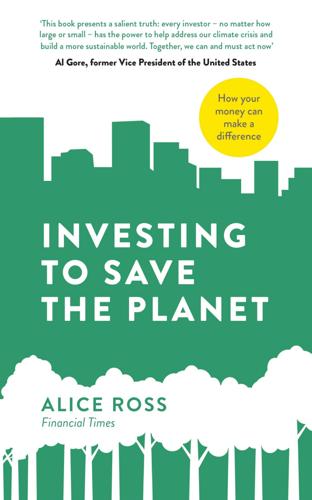
Investing to Save the Planet: How Your Money Can Make a Difference
by
Alice Ross
Published 19 Nov 2020
This is a trend known as vertical farming, in which crops are grown not in a flat field or greenhouse but on shelves one above the other in converted warehouses or shipping containers. It yields more crops per square metre than traditional farming, uses less water and isn’t subject to seasonal weather variations so can keep going all year round. Vertical farming also has the advantage of reducing food miles and the need to import crops, something that could become more valuable in the post-coronavirus era. Crop One Holdings, which in 2018 announced plans to build the largest vertical farm in the world in a joint venture with Emirates Flight Catering in Dubai, says that it uses 95–99 per cent less water than conventional farming.
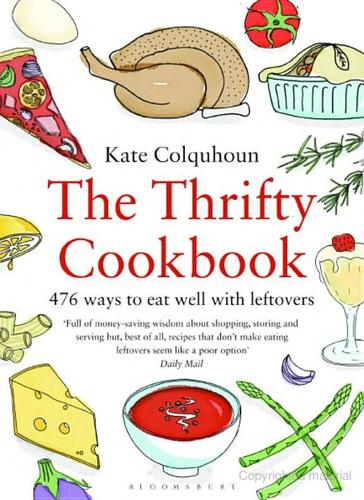
The Thrifty Cookbook: 476 Ways to Eat Well With Leftovers
by
Kate Colquhoun
Published 6 Jun 2010
We live in a world where half of us are killing ourselves with excess calories while the other half starve, in a society that spends more on dieting than on food aid and where health and safety legislation means that it is criminal to donate perfectly viable food that’s reached its use-by date to the homeless. And though we might get into a lather about food miles or the ethics of battery chickens, the amount of food we send to landfill each year is the skeleton in the cupboard. It’s only alarming when the bin bag breaks, disgorging its slimy contents all over the floor; the rest of the time we don’t notice. There is, of course, a significant environmental cost to all this.

The Essential Allotment Guide: How to Get the Best Out of Your Plot
by
John Harrison
Published 14 Jun 2009
You may wonder why people bother ‘growing their own’; after all, vegetables aren’t too expensive and you can buy anything you want at any time of year in your local supermarket. However, those fruits and vegetables in the supermarket, strawberries at Christmas and tomatoes in January, have often been shipped around the world at huge cost in ‘food miles’. It’s obviously far better for the environment to eat locally produced food when you can and you don’t get more local than an allotment. Despite having vegetables available out of the home season, the supermarkets offer quite a narrow range. For example, you may find three or four types of potato but I have the choice of 400 types I can grow.
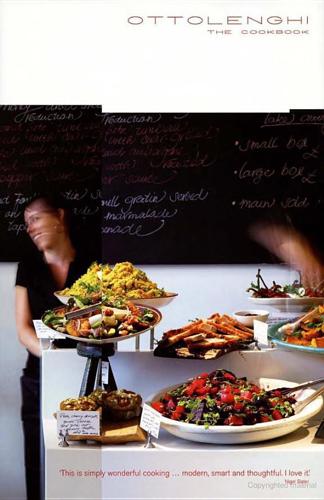
Ottolenghi: The Cookbook
by
Yotam Ottolenghi
and
Sami Tamimi
Published 1 Jan 2008
After centuries of being told how bad their cuisine was, the British have started taking pride in their food in recent years, joining the European set of confident, passionate and knowledgeable devourers. Then, suddenly, they were made to feel guilty for having fun. All of a sudden it is all about diets, health, provenance, morals and food miles. Forget the food itself. How boring, and what a mistake! This shift of focus sets us back two decades, to a time when food in the UK was just foodstuff, when it was practical instead of sensual, and so we risk once more losing our genuine pleasure in food. People will not care much about the origins of their food and how it’s been grown and produced unless they first love it and are immersed in it.
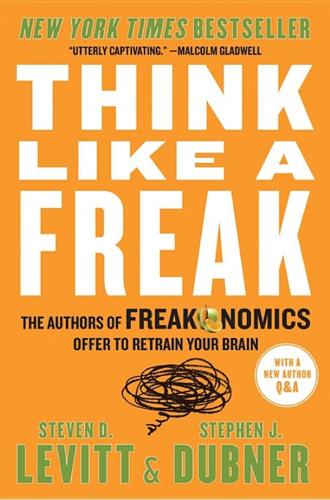
Think Like a Freak
by
Steven D. Levitt
and
Stephen J. Dubner
Published 11 May 2014
Levitt, “Evaluating the Effectiveness of Child Safety Seats and Seat Belts in Protecting Children From Injury,” Economic Inquiry 48, no. 3 (July 2010); Stephen J. Dubner and Levitt, “The Seat-Belt Solution,” The New York Times Magazine, July 10, 2005; Levitt and Dubner, SuperFreakonomics (William Morrow, 2009). / 11 The local-food movement can actually hurt the environment: See Christopher L. Weber and H. Scott Matthews, “Food-Miles and the Relative Climate Impacts of Food Choices in the United States,” Environmental Science & Technology 42, no. 10 (April 2008); and Stephen J. Dubner, “You Eat What You Are, Part 2,” Freakonomics Radio, June 7, 2012. 11 OUR DISASTROUS MEETING WITH DAVID CAMERON: Thanks to Rohan Silva for the invitation to this and subsequent meetings (though never again with Mr.
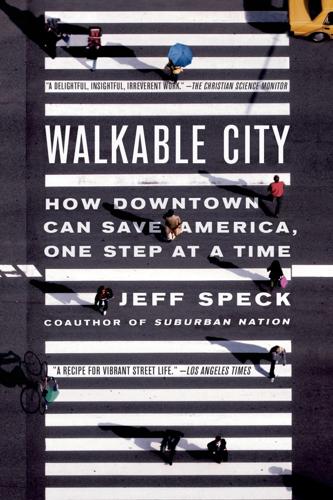
Walkable City: How Downtown Can Save America, One Step at a Time
by
Jeff Speck
Published 13 Nov 2012
.… As consumer surveys in downtown Philadelphia and Detroit in 2006 have shown, this seems to be particularly true for the well-educated, who seem to have a predilection for living in walkable urban places.16 This growing demand for pedestrian-friendly places is reflected in the runaway success of Walk Score, the website that calculates neighborhood walkability.● It was started on a lark in 2007 by Matt Lerner, Mike Mathieu, and Jesse Kocher, three partners in a software company with the incongruously automotive name of Front Seat. “I had heard a story on NPR about food miles in England—labeling food with how far it had to travel to get to you,” Lerner told me recently, “and I thought, why not instead measure house miles: how many miles from your house you had to go for daily errands.” Addresses are ranked in five categories, with a score of 50 needed to cross the threshold from car dependent to somewhat walkable.
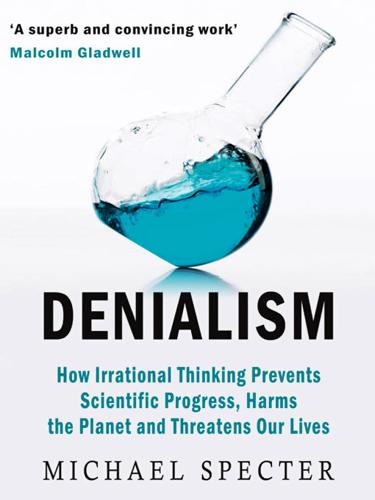
Denialism: How Irrational Thinking Hinders Scientific Progress, Harms the Planet, and Threatens Our Lives
by
Michael Specter
Published 14 Apr 2009
Does organic food carry a lower environmental footprint than food grown with the use of synthetic pesticides? The answer to that is complicated but it certainly isn’t yes. Locally grown food has environmental benefits that are easy to understand. Agricultural researchers at Iowa State University have reported that the food miles—the distance a product travels from farm to plate—attached to items that one buys in a grocery store are twenty-seven times higher than those for goods bought from local sources. American produce, every cauliflower or radish, travels an average of nearly fifteen hundred miles before it ends up at our dinner table.
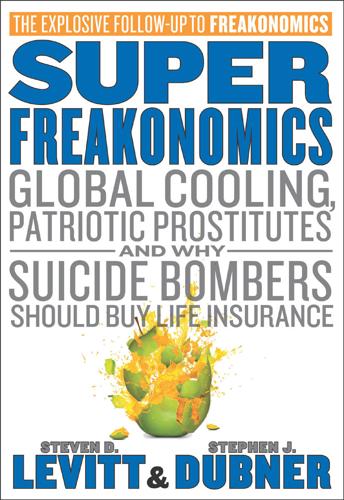
SuperFreakonomics
by
Steven D. Levitt
and
Stephen J. Dubner
Published 19 Oct 2009
Ruminants produce more greenhouse gas than transportation sector: see “Livestock’s Long Shadow: Environmental Issues and Options,” Food and Agriculture Organization of the United Nations, Rome, 2006; and Shigeki Kobayashi, “Transport and Its Infrastructure,” chapter 5 from IPCC Third Assessment Report, September 25, 2007. WELL-MEANING LOCAVORES: See Christopher L. Weber and H. Scott Matthews, “Food-Miles and the Relative Climate Impacts of Food Choices in the United States,” Environmental Science and Technology 42, no. 10 (April 2008); see also James McWilliams, “On Locavorism,” Freakonomics blog, The New York Times, August 26, 2008; and McWilliams’s forthcoming book, Just Food (Little, Brown, 2009).
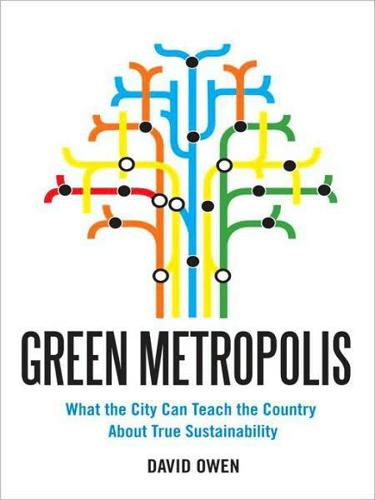
Green Metropolis: Why Living Smaller, Living Closer, and Driving Less Are Thekeys to Sustainability
by
David Owen
Published 16 Sep 2009
Pollan’s books constitute a passionate, persuasive argument for a radical transformation of American agriculture and for the elimination of the ill-considered government subsidies that have helped to turn many of the most common American foodstuffs into nutritional simulacra, but nothing could be less sustainable than a world whose 6 billion (and counting) residents had to rely totally, or even mainly, on locally produced anything. Shipping foodstuffs and other goods long distances—from areas of abundance to areas of need—will become more important, not less, as the world’s energy and emissions difficulties deepen. In 2008, Michael Specter addressed the issue of “food miles” in a New Yorker article on carbon footprints; in it he quoted, among other authorities, Adrian Williams, a British agricultural researcher, who told Specter, “The idea that a product travels a certain distance and is therefore worse than one you raised nearby—well, it’s just idiotic. It doesn’t take into consideration the land use, the type of transportation, the weather, or even the season. . . .
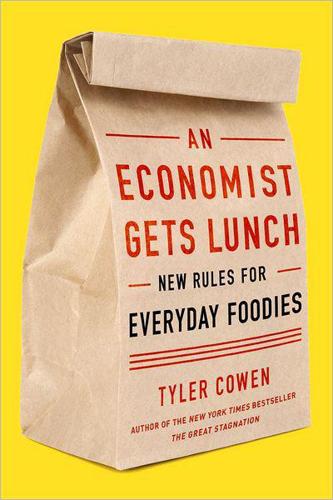
An Economist Gets Lunch: New Rules for Everyday Foodies
by
Tyler Cowen
Published 11 Apr 2012
Locavores—those who eat local foods, either mostly or exclusively—are also pursuing a feel-good attitude rather than effectiveness. In a lot of cases you shouldn’t worry much about where your food comes from. The shipping of food is only a small part of its total energy cost, no more than 14 percent by one U.S. government estimate. According to Rich Pirog, who developed food-miles analysis, transportation is only 11 percent of the total energy cost of food. Ocean transport is especially cheap in terms of its energy consumption because floating things are just easier to move. The most comprehensive study comes out of Carnegie Mellon University and was done by Christopher L.
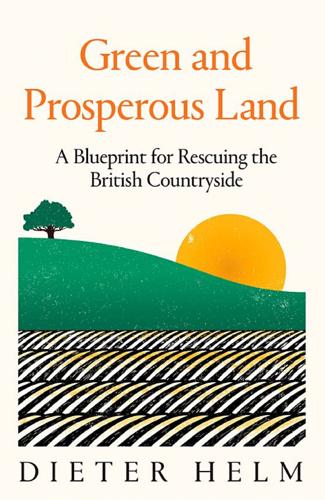
Green and Prosperous Land: A Blueprint for Rescuing the British Countryside
by
Dieter Helm
Published 7 Mar 2019
It would be better to invest in cyber security for the electricity industry, without which the economy and now much of the farming industry would collapse in a matter of days, if not hours. Food security is largely an empty slogan of lobbyists. It should not be taken seriously. A better question is what proportion of our food consumption should be home-produced and what proportion imported. For example, we might want to reduce food miles for welfare and carbon reasons. If this is the aim, then the live export of animals would probably be stopped. All those sheep going to Europe would stay here. Stopping live animal exports is one of the better policies if food security is what matters. Indeed, stopping exports generally would be conducive to increasing domestic food security, feeding ourselves before people in other countries.

Living in a Material World: The Commodity Connection
by
Kevin Morrison
Published 15 Jul 2008
The use of agriculture as a solution for energy security is not sustainable because the demand for food is ever increasing given the growing world population and rising affluence in developing countries, at a time when global water supplies are under stress due to changing climate conditions. 118 | LIVING IN A MATERIAL WORLD Farming is an industry that has long been neglected by government, and market conditions have not been in its favour for most of the 1980s and 1990s, so it’s no surprise that farmers want more competition for their produce. But the pro-corn ethanol policy has knock-on environmental consequences which need to be monitored closely and addressed. International trade, self-sufficiency, food miles and animal welfare are issues that form part of government food policy (though they’re beyond the ambit of this book) but also significantly affect the supply and demand of grains, oilseeds and livestock. The prevalence of government subsidies for agriculture is another issue that ultimately impacts food prices and demand.

Lonely Planet Jamaica
by
Lonely Planet
Currently 26 large and small estates are certified to produce Blue Mountain coffee, with quality guaranteed by the Jamaica coffee industry board. Several estates offer plantation and factory tours, allowing you to learn about this most treasured drink from seed to cup, and come away with your own beans to enjoy at home – food miles don’t come much shorter than this. Estates worth checking out are the Mavis Bank Coffee Factory, Craighton Coffee Estate in Newcastle, and Old Tavern Coffee Estate in Section. 1Hiking The Blue Mountains are a hiker’s dream, and 30 recognized trails lace the hills. Many are overgrown due to lack of funding and ecological protection programs, but others remain the mainstay of communication for locals.

Around the World in 80 Plants
by
Steven Barstow
Published 6 May 2015
He comments in Stalking the Wild Asparagus, his first book from 1962, that, ‘For the number of different kinds of foods it produces, there is no plant, wild or domesticated, which tops the common Cattail’. This plant should be in any permaculturist’s garden as a symbol of a plant representing the absolute minimum transport/food mile requirements, as so many of our basic needs are found in exactly the same place/plant ... As Ken Fern stated in his book (Fern, 1997), “I cannot understand why the reedmaces aren’t exploited more and we drain their habitat to grow high-energy input cereals instead...” The genus name comes from the Greek typhos, meaning marsh.
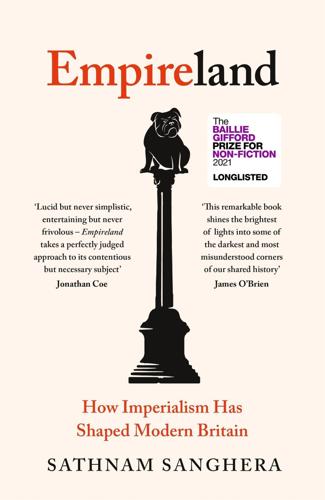
Empireland: How Imperialism Has Shaped Modern Britain
by
Sathnam Sanghera
Published 28 Jan 2021
Such a focus on imperial foodstuffs and raw materials was a common visual aid at the time for schools teaching of imperialism, so-called object lessons, featuring boxes full of everything from raw cotton to loaf sugar, saffron, rice and camphor.fn2 Then there is sugar, the addiction to which propelled the endless need for labourers on plantations, which in turn drove the slave trade, for a long time a key element of British empire. Moreover, many aspects of the way we get our food originate from the age of empire. Food miles? Colonial imports of perishable food and drink were transported over huge distances to become everyday staples for the general population. Processed food? The British pioneered the technology, thanks to centuries of experience in transporting foods to feed their colonists at every corner of the globe, with the first food-canning factory opened in Bermondsey in 1813.

The Future Is Faster Than You Think: How Converging Technologies Are Transforming Business, Industries, and Our Lives
by
Peter H. Diamandis
and
Steven Kotler
Published 28 Jan 2020
The Inefficiency of Food author Richard Manning wrote in an essay for Harpers: Richard Manning, “The Oil We Eat: Following the Food Chain Back to Iraq,” Harpers, February 2004. See: https://harpers.org/archive/2004/02/the-oil-we-eat/. The average American meal travels: Rich Pirog, “The Evolution of Food Miles and Its Limitations as an Indicator of Energy Use and Climate Impact.” See: https://aceee.org/files/pdf/conferences/ag/2008/RPirog.pdf. according to the National Resources Defense Council: Move for Hunger, “About Food Waste.” See: https://www.moveforhunger.org/about-food-waste/. researchers at UCLA: Amina Khan, “Scientists Aim to Feed the World by Boosting Photosynthesis,” Los Angeles Times, November 18, 2016.
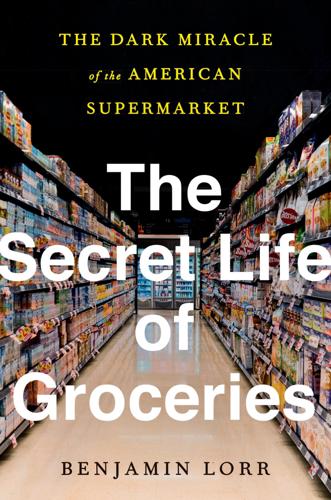
The Secret Life of Groceries: The Dark Miracle of the American Supermarket
by
Benjamin Lorr
Published 14 Jun 2020
Largely because I don’t think these moments were ever routine. Quality between epochs is an incredibly hard thing to measure. Facets once highly desired, like the age of a hen at slaughter, fall out of fashion. The value of what we no longer have expands in our imagination. In the 1920s, fancy New York restaurants advertised their “food miles,” proudly touting the distance each ingredient traveled on the menu as a symbol of sophistication. Now we see the same measure as a proxy for carbon footprint and wince. * And what an heir he is! In 1965, Merritt Jr. sits on the last crumbling vestiges of an empire. His father, “Smoke,” a sheep rancher and self-described blood brother to the Havasupai tribe, made the match of the century, marrying Rhoda Rindge, sole inheritor of the entire Malibu coast.

Great Britain
by
David Else
and
Fionn Davenport
Published 2 Jan 2007
Same goes for organic avocados from Thailand, or organic peas from Kenya (where, incidentally, local people watch their crops and cattle die as large-scale market gardens dam rivers and take all the water). Meanwhile, it seems impossible to buy British apples in supermarkets during the autumn cropping season, although you can always choose between 10 different varieties flown in from New Zealand, Chile or South Africa. But despite ‘food miles’ and other dilemmas, British food continues to change for the better, due partly to outside influence. For decades most towns have boasted Chinese and Indian restaurants, so chow mein or vindaloo is no longer considered exotic, while curry is the most popular takeaway food in Britain, outstripping even fish and chips.
…
The fine wood-panelled interior is lit by soft globe lanterns, the menu is a happy marriage of British and French country dishes, and the views across the water are dreamy. Bordeaux Quay ( 0117-943 1200; Canons Way; brasserie mains £10, restaurant mains £17-21; lunch & dinner) Funky, friendly, Bordeaux Quay neatly fulfils all your food needs in one: it’s a restaurant, brasserie, bar, deli, bakery and cookery school. Its efforts to shrink the food-miles map have produced a menu bursting with organic, seasonal, regionally sourced ingredients, and proves ‘sustainable’ can equal ‘delectable’. Settle down at a sanded wooden table in the cool, calm interior and tuck into the squash and rocket linguini or the roast sea bass with beurre rouge (a butter and red-wine sauce).
…
Riverford Field Kitchen ( 01803-762074; www.riverford.co.uk; Wash Barn, near Buckfastleigh; 2 courses adult/child £14/7; lunch, plus some Fri & Sat dinner) For a taste of ecofriendly Totnes head for this futuristic farm bistro. Vegetables are plucked to order from the fields in front of you to ensure minimal food miles, the meats are organic and locally sourced, and the dining area is a huge, hip hangar-like canteen. The food treatments are imaginative, too – try the marinated grilled Moroccan lamb and cumin and saffron veg. Planning laws require you to book and take a tour of the fields. The farm is three miles west of Totnes.

Swindled: the dark history of food fraud, from poisoned candy to counterfeit coffee
by
Bee Wilson
Published 15 Dec 2008
Now that the big food companies have got in on the organic act—wanting a slice of the more than twelve-billion-dollar market—they have pushed to dilute the standards, lobbying to include some synthetic chemicals under the permitted definition of organic. Rising demand for organic food in Britain means that more and more if it is air-freighted in from abroad, lengthening the chain between consumer and producer and giving the lie to the ideal of organic food as wholesome and environmentally sound. Given these “food miles,” many food campaigners now believe it is better to buy local food—even if not technically “organic”—than it is to buy “organic” vegetables from halfway across the world. Closer to home, certain products—notably organic farmed salmon—have, in the view of many old-school organic farmers, made a mockery of what the organic standard was supposed to stand for.
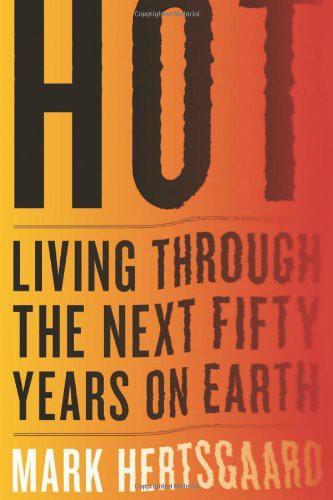
Hot: Living Through the Next Fifty Years on Earth
by
Mark Hertsgaard
Published 15 Jan 2011
Finally, the huge amounts of fossil fuel used to produce fertilizer, run farm equipment, and transport food to market are a major source of greenhouse gas emissions and local air pollution. Coal-fired power plants and gas-guzzling vehicles get more criticism, but factory farms, restaurants, supermarkets, and food miles—the distance a given food item travels between farm and fork—are bigger global warming culprits. The agricultural sector, including forestry, is responsible for roughly 31 percent of global greenhouse gas emissions, more than any human activity except for the constructing, heating, and cooling of buildings.

The Food Revolution: How Your Diet Can Help Save Your Life and Our World
by
John Robbins
Published 14 Sep 2010
See also Mike Tidwell, "The Low-Carbon Diet," Audubon magazine, Jan 2009. xxiii. Nathan Fiala, "How Meat Contributes to Global Warming: Producing beef for the table has a suprising environmental cost: it releases prodigious amounts of heat-trapping gases," Scientific American, Feb 4, 2009. See also Christopher L. Weber and H. Scott Matthews, "Food-Miles and the Relative Climate Impacts of Food choices in the United States," Environmental Science & Technology, April 16, 2008. And Bryan Walsh, "Meat: Making Global Warming Worse," Time magazine, Sept 10, 2008. And Jim Motavelli, "The Meat of the Matter: Animals Raised for Food are Warming the Planet Faster than Cars," E Magazine, July/Aug 2008.

Discover Caribbean Islands
by
Lonely Planet
Plein Cafe Cafe $$ map Google map (Wilhelminaplein 19-23, Punda; meals from NAf10; 7:30am-11pm; ) This Dutch cafe and its neighboring twin are so authentic that if it were –1°C (30°F) and raining, you’d think you were in Amsterdam. Waiters scamper among the outdoor tables with trays of drinks and dishes of simple foods. Miles Jazz Cafe Bar map Google map (Nieuwestraat 48, Pietermaai; 5pm-2am Mon-Sat) That’s Miles as in Davis, one of the inspirations for this stylishly divey nightspot in Pietermaai. Monday is open-mike night. Punda (Click here), Willemstad’s old commercial center Michele Falzone/Getty Images © Information On Sundays when cruise ships are in port, many places open that are normally closed for business.
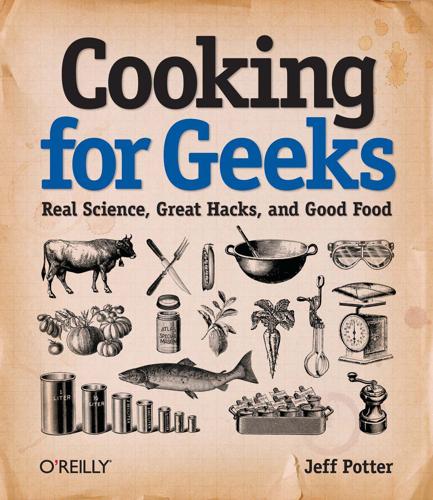
Cooking for Geeks
by
Jeff Potter
Published 2 Aug 2010
All this results in a higher carbon footprint per pound of slaughtered meat than that of smaller animals like chickens. Then there’s the fuel expended in transportation, along with the environmental impact of the packaging. By some estimates, producing a pound of red meat creates, on average, four times the greenhouse-gas emissions as a pound of poultry or fish. See Weber and Matthews’ "Food-Miles and the Relative Climate Impacts of Food Choices in the United States" (http://pubs.acs.org/doi/abs/10.1021/es702969f). Regardless of where you fall on the spectrum between local-shopping vegan and delighting in a ginormous bacon-wrapped slab of corn-fed beef, limiting consumption in general is the best method for helping the environment.
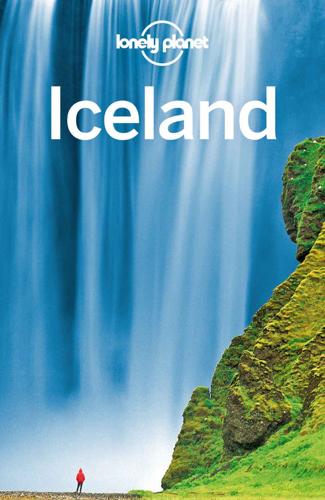
Lonely Planet Iceland (Travel Guide)
by
Lonely Planet
,
Carolyn Bain
and
Alexis Averbuck
Published 31 Mar 2015
€ Less than Ikr2000 (€13) €€ Ikr2000–5000 (€13–32) €€€ More than Ikr5000 (€32) Restaurants Iceland’s best restaurants are in Reykjavík, but some magnificent finds are mushrooming up beyond the capital, catering to travellers looking for authentic local flavours. These restaurants are tapping into the network of unsung local producers: barley farmers, mussel harvesters, veggie growers, the neighbouring sheep farmer and local fisherman. At many places, your meal's food miles will be low. You want local and seasonal? You've come to the right place. Bear in mind that the price difference between an exceptional restaurant and an average one is often small, so it can be well worth going upmarket. Often, though, in rural Iceland you may not have a huge choice – the town’s only eating place may be the restaurant in the local hotel, supplemented by the grill in the petrol station.

Lonely Planet Iceland
by
Lonely Planet
Where to Eat & Drink PRICE RANGES Eating reviews are divided into the following price categories based on the cost of an average main course: € Less than kr2000 (€15) €€ kr2000–5000 (€15–39) €€€ More than kr5000 (€39) Restaurants Iceland’s best restaurants are in Reykjavík, but some magnificent finds are mushrooming up beyond the capital, catering to travellers looking for authentic local flavours. These restaurants are tapping into the network of unsung local producers: barley farmers, mussel harvesters, veggie growers, sheep farmers and fishers. At many places, your meal's food miles will be very low. Bear in mind that the price difference between an exceptional restaurant and an average one is often small, so it can be well worth going upmarket. Often, though, in rural Iceland you may not have a huge choice – the town’s only eating place may be the restaurant in the local hotel, supplemented by the grill bar in the petrol station.

Enlightenment Now: The Case for Reason, Science, Humanism, and Progress
by
Steven Pinker
Published 13 Feb 2018
Even in modern societies—according to studies I’ve done with the psychologists Jason Nemirow, Max Krasnow, and Rhea Howard—people esteem others according to how much time or money they forfeit in their altruistic acts rather than by how much good they accomplish.59 Much of the public chatter about mitigating climate change involves voluntary sacrifices like recycling, reducing food miles, unplugging chargers, and so on. (I myself have posed for posters in several of these campaigns led by Harvard students.)60 But however virtuous these displays may feel, they are a distraction from the gargantuan challenge facing us. The problem is that carbon emissions are a classic public goods game, also known as a Tragedy of the Commons.
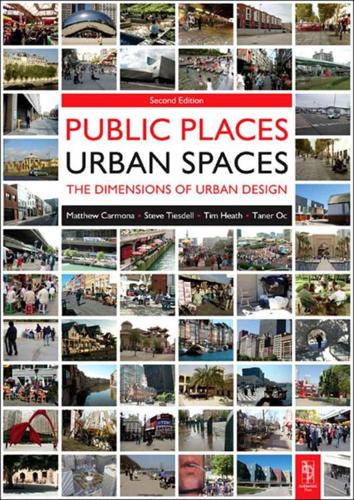
Public Places, Urban Spaces: The Dimensions of Urban Design
by
Matthew Carmona
,
Tim Heath
,
Steve Tiesdell
and
Taner Oc
Published 15 Feb 2010
To minimise travel for food, as Newman et al (2009: 136) suggest, ‘… localities will need to explore more local production such as “fifty mile menus” and community-supported agriculture.’ Involving sourcing the menu entirely from within a 50-mile radius of the restaurant, 50-mile menus aim to allow customers to enjoy local produce, to reduce food miles and to support local farmers. At present, this is an artificial discipline but it also indicates what might be needed for a more sustainable way of life. The increased localism of a post-peak oil future is perhaps prefigured by the ‘slow movement’ (see www.slowmovement.com), particularly its Slow Food and Slow City elements (see Knox 2005).

The Rough Guide to Portugal (Travel Guide eBook)
by
Rough Guides
Published 1 Mar 2023
It’s a cold-water shower, generator-off-at-midnight kind of place – bring your own cooking utensils (there is a kitchen), sleeping stuff and towels. Open mid-May to mid-Sept; it’s a bit cheaper outside July and August and if you stay more than two nights. Dorms/cubatas € Mesa da Ilha http://restauranteberlenga.pt. Meals in the restaurant are based around the fresh fish and seafood landed at the harbour below, which is pretty good for food mile. Expect plenty of tasty options. Service is friendly. €€ Óbidos and around ÓBIDOS is thoroughly charming – a very small town, completely enclosed by medieval walls – and although much was rebuilt after the 1755 earthquake, it retains a captivating feel with its cobbled alleys and whitewashed houses.

Empire of Things: How We Became a World of Consumers, From the Fifteenth Century to the Twenty-First
by
Frank Trentmann
Published 1 Dec 2015
It is no coincidence that the foods which attracted the greatest flak from Japanese critics of GM (genetically modified) produce were the very ones where Japan had come to depend on imports: soybean and corn.56 In Europe, buying groups started to crop up in the 1990s. In Fidenza, near Parma, Italy, fifty families got together in 1994 as a ‘gruppo d’acquisto solidale’ to purchase organic products for mutual benefit. What started as a buying club developed into an education in food miles and solidarity. Today, there are around nine hundred of these GAS in Italy.57 Over 2,000 communities have declared themselves GM free. Local food has had a helping hand from the state as well as from concerned consumers. By 2009, many Italian provinces had their own laws to provide schools and hospitals with organic food.

The Rough Guide to England
by
Rough Guides
Published 29 Mar 2018
Drinks Mon–Sat 10.30am–11pm, Sun noon–10.30pm; kitchen daily noon–2pm & 7–9pm. Sutherland House 56 High St, IP18 6DN 01502 724544, sutherlandhouse.co.uk. There’s a strong local emphasis to the menu at this classy Modern British restaurant, which is housed in one of Southwold’s oldest buildings. Main courses are £12–20, and they have a helpful food-miles chart attached. Daily noon–2.30pm & 6.30–8.30pm; closed Mon in winter. < Back to East Anglia Norwich One of the five largest cities in Norman England, NORWICH once served a vast hinterland of East Anglian cloth producers, whose work was brought here by river and then exported to the continent.

The Better Angels of Our Nature: Why Violence Has Declined
by
Steven Pinker
Published 24 Sep 2012
Fish and Wildlife Service, in the decade between 1996 and 2006, while the number of hunters, days of hunting, and dollars spent on hunting declined by about 10 to 15 percent, the number of wildlife watchers, days of wildlife watching, and dollars spent on wildlife watching increased by 10 to 20 percent.279 People still like to commune with animals; they would just rather look at them than shoot them. It remains to be seen whether the decline will be reversed by the locavore craze, in which young urban professionals have taken up hunting to reduce their food miles and harvest their ownfree-range, grass-fed, sustainable, humanely slaughtered meat.280 It’s hard to imagine that fishing could ever be considered a humane sport, but anglers are doing their best. Some of them take catch-and-release a step further and release the catch before it even breaks the surface, because expofurther and release the catch before it even breaks the surface, because exposure to the air is stressful to a fish.

England
by
David Else
Published 14 Oct 2010
The fine wood-panelled interior is lit by soft globe lanterns, the menu is a happy marriage of British and French country dishes, and the views across the water are dreamy. Bordeaux Quay ( 0117-943 1200; Canons Way; brasserie mains £10, restaurant mains £17-21; lunch & dinner) Funky, friendly, Bordeaux Quay neatly fulfils all your food needs in one: it’s a restaurant, brasserie, bar, deli, bakery and cookery school. Its efforts to shrink the food-miles map have produced a menu bursting with organic, seasonal, regionally sourced ingredients, and proves ‘sustainable’ can equal ‘delectable’. Settle down at a sanded wooden table in the cool, calm interior and tuck into the squash and rocket linguini or the roast sea bass with beurre rouge (a butter and red-wine sauce).

The Rough Guide to France (Travel Guide eBook)
by
Rough Guides
Published 1 Aug 2019
For a bit of serenity the best time to see the cirque is at dusk when, even in summer, you could have it all to yourself. EATING AND INFORMATION Les Cascades Next to the Maison du Parc 05 62 92 40 17. A gastronomic highlight of the town, this restaurant presents fresh regional platters with low food-mile ingredients. All with the added benefit of tables overlooking the cirque. Menus range from €16–35. May–Oct Mon–Sat noon–1.30pm & 7–8.30pm. The Cirque de Troumouse Much bigger than Gavarnie and, in bad weather, rather intimidating, the Cirque de Troumouse forms a 10km wall of curved rock shorn by glacial action.